

Cruise Ship Anchors – How Big Are They? (and More)
Have you ever wondered if modern cruise ships have anchors and if so, where are they stored, and how big are they?
Modern cruise ships have what’s known as a stockless or patent anchor . This type of anchor is suitable for a wide range of different sea bed types, which cruise ships need as they travel through different waters and varying ports.
They are called stockless anchors because they don’t have a horizontal stock across the top of the shank.

Do Cruise Ships Have Anchors?
Like most ships, cruise ships have anchors. Anchors are required for holding a ship in place and preventing it from drifting due to winds and currents.
Anchors come in various shapes and sizes. Cruise ships have stockless anchors. This is a design of anchor that has particularly heavy flukes which are connected to a shank. These heavy flukes can dig into the seabed.
Do Cruise Ships Have More Than One Anchor?
Most cruise ships have two anchors, one port side and one starboard side at the front of the ship , although they are not often deployed at the same time.
One anchor is sufficient to keep a ship in position, although two can have their uses in specific circumstances.
Having two anchors means there’s always a backup should one ever be required. There is a lot of machinery and chain involved in the anchoring process and if any were to become damaged or required maintenance the other anchor could be used.
How Big Is A Cruise Ship Anchor?
Cruise ship anchors can be up 15ft to 20ft in height and 10ft to 15ft wide. Anchors are generally proportional to the size of the cruise ship. The larger and heavier the cruise ship, the larger the anchor can be expected to be.
The largest oasis-class Royal Caribbean cruise ships are some of the largest in-service ships sailing today and can be expected to have the largest anchors on any cruise ships.
The new Royal Caribbean icon-class cruise ships will be larger still and so will the anchors.
How Much Does A Cruise Ship Anchor Weigh?
Cruise ship anchors are somewhat proportional to the size of the ship. The larger the ship, the larger the anchor. A typical cruise ship anchor can weigh 10 to 15 U.S tonnes (9000 to 13600 kilos).
However, the weight of the chains is far heavier and much more of a factor in holding a ship’s position when it’s anchored offshore.
It’s the weight of the chain that holds the ship’s position, while the anchor acts to hold the end of the chain, preventing it from being pulled along the seafloor.
Ship Anchor Compared To Human
Cruise ship anchors can be 2 to 3 times an average human height of 5ft 9inches.
Assuming an average human weight of 80kg, an anchor weighing 10000 to 13500 kilos would be 125 to 168 times heavier.
In the photo below, you can see a human and cruise ship anchor comparison. Two maintenance workers underneath the anchor of Norwegian Cruise Line’s ship Norwegian Jewel , which was raised for maintenance.
In our post about the bottom of a cruise ship , we highlight a video clip of an anchor being freshly painted, and you can see it is about three times the height of the man doing the painting.
How Long Are Cruise Ship Anchor Chains?
The weight of anchor chains plays an important role in holding a cruise ship in position, much more so than the weight of the anchor itself.
When an anchor digs into the seabed, there must also be a sufficient length of anchor chain also lying on the sea bed. This provides extra weight and slack to the chain, which can absorb forces from the ship’s movement.
When a ship is properly anchored, the amount of anchor chain released should be 5 to 7 times longer than the depth of the water.
If the water depth was 50 ft (15m) the anchor chain released would need to be 250ft to 300ft (75m to 105m).
The anchor chain lies horizontally from the ship to the embedded anchor. Much of it is flat on the bed of the water.
The ship will not be sitting directly above the anchor but rather drawn away from it by wind and water currents.
Each individual link on the anchor chain weighs a considerable amount in its own right. This weight of the chain causes it to sag into a curved shape from the anchor chain on the sea bed up towards the ship. This is referred to as a catenary, a flexible hanging chain.
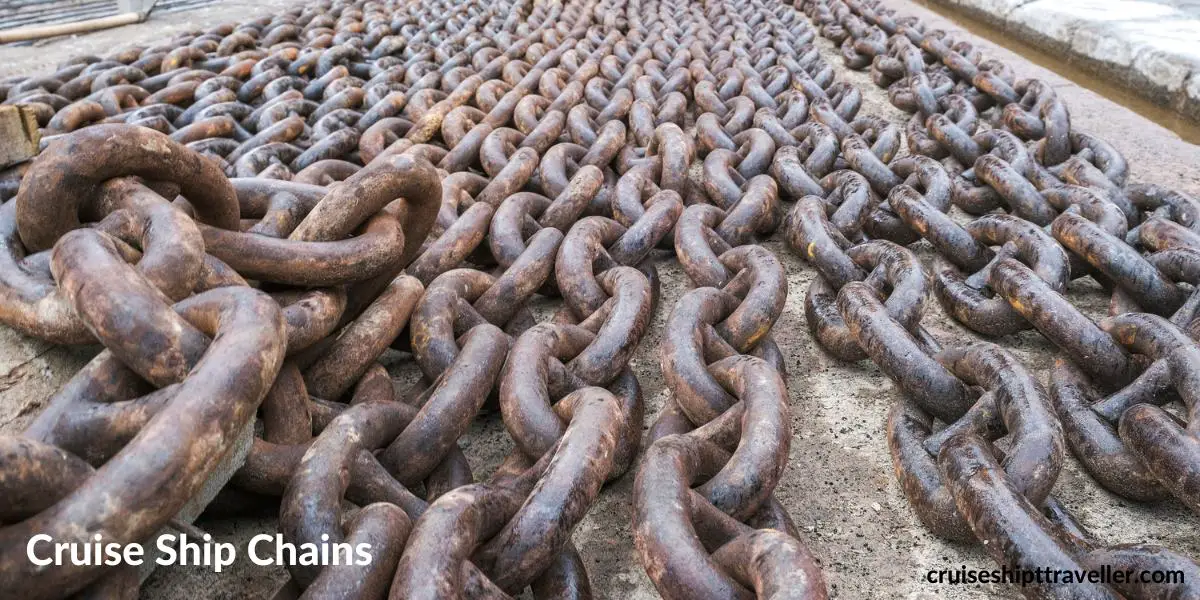
Markings on Anchor Chain
To indicate the length of the anchor chain released are markings on the actual chain, individual chain links of a different color, usually a red shackle, and white links on either side.
These markings indicate every 90ft (27.4m) of chain released.
The way it works is for every 90ft extra links, and either side of the red shackle will be painted white.
For example, a 360ft chain would be indicated with four links painted which either side of the red shackle (4 x 90ft = 360ft).
When do Cruise Ships Use Anchors?
If the draft of a cruise ship is too deep for a shallow port and waters, this prevents the cruise ship from docking. The cruise ship will have to anchor offshore in deeper waters, and passengers will have to be tendered to port.
Reasons a cruise ship might need to anchor include:
- Port waters too shallow
- Waiting to berth (park)
- Holding position during a storm
- Waiting for port channels to clear
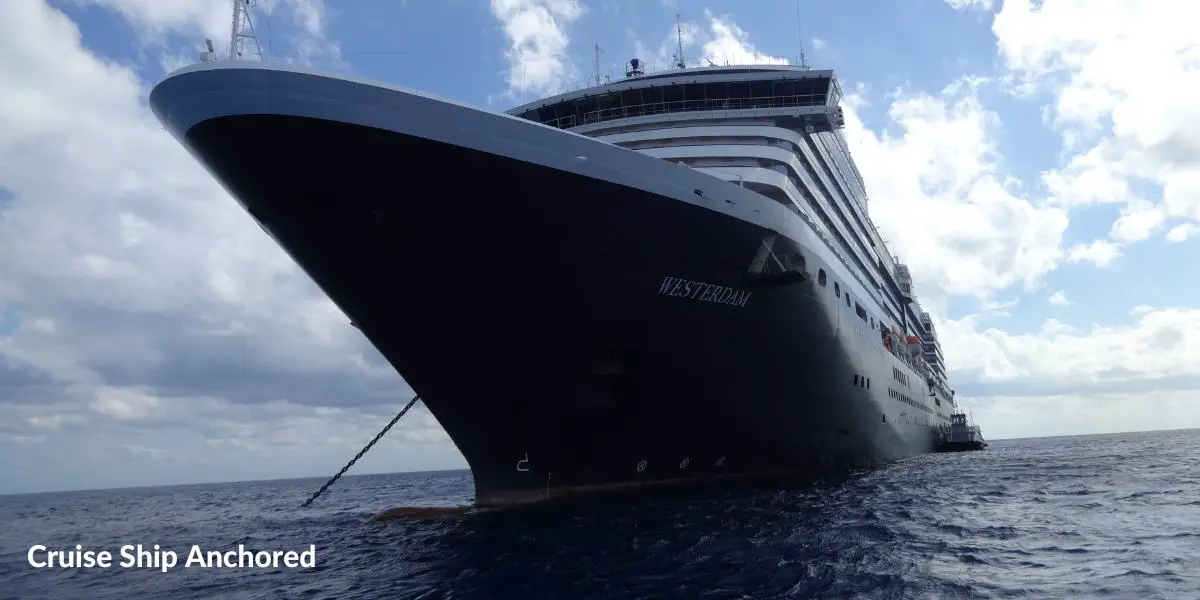
How Does A Ship Anchor Work
An anchor can be dropped in one of two ways.
- Engage in gear and walk back at desired pace or drop released for faster
- Release manual break for emergency release
The manual brake can be released in an emergency to release the anchor as quickly as possible.
When the anchor hits the seabed, the bridge crew will use the bow thrusters to maneuver the ship, causing the flukes of the anchor to dig in to the seabed.
With large cruise ships, it’s not so much the size and weight of the anchor that holds it in place, it’s more the total weight of the chain .
The anchor holds the end of the chain in position while much of the chain lays along the seabed before rising up to the cruise ship when forces such as wind are applied.
If there is no pull on the chain, and it’s slack, then there is no weight on the chain.
As the cruise ship moves, the chain’s slack changes when it’s slowly stretched and becomes taunter.
Depending on the stage of slack it will be referred to as:
- Lightweight
- Medium weight
- Heavyweight
At medium weight, the ship will have moved away from the anchor, and some of the chain will have been lifted from the seabed.
When the chain is deemed heavyweight, there is no slack in the chain. At this point, the anchor is acting to keep one end of the chain in position.
As a ship moves away from the anchor, the anchor chain gently extends as some chain is lifted from the seabed, absorbing some of the force that’s moving the ship. The force is not directly transferred to the anchor.
Whenever the forces subside, the chain slackens, and some of it falls back on the seabed as the ship eases back toward the anchor.
This is why anchor chains are so long. The longer the chain, the more force it can take before breaking the anchor free of the seabed.
If ships had short anchor chains that were just long enough for the anchor to bed down with a much shorter and tight chain, as soon as any excessive force is applied to moving the ship, it would be applied directly to the anchor, possibly causing it to break free.
Cruise Ship Dropping Anchor
To understand how a cruise ship works, we found this video which shows the Princess Cruise vessel, the Coral-class Island Princess cruise ship dropping an anchor .
To give you an idea of scale Island Princess is a mid-sized cruise ship, 91,627 gross tonnes with a capacity for 2200+ passengers and 900 crew.
Some of the biggest cruise ships are 2 to 2.5 times bigger, and the anchor and chains would be proportionally larger too.
Island Princess Dropping Anchor
The video shows:
- 0.40 – Anchor lowered to water level
- 1.05 – Port side windlass
- 2.05 – Anchor starts dropping
- 4.03 – Brought up to a port anchor of 5 and a quarter in the water.
Do Modern Cruise Ships Need Anchors?
While cruise ships, in theory, can use the dynamic position system that utilizes a combination of computer technology and GPS and to automatically control the propellors and bow thrusters, keeping the ship in the desired position by acting against the forces of the sea and winds.
Although this would involve keeping the ship’s engine running, using lots of fuel and keeping the crew busy overseeing it all.
An anchor is a much more efficient process, including much less fuel.
More importantly, a cruise ship can always use an anchor in the event of a loss of power, which, in some situations, could be vital.
Basic Anchor Terms:
- Anchor aweigh – means to take up the anchor from the waters bed
- Bed down – anchor on the seabed
- Bosun – operates the windlass and anchor
- Brought up -when the ship’s way has stopped and is riding to her anchor. There’s an equilibrium between the weight and forces on the ship and the weight of the anchor cable.
- Forecastle raised deck front part of the ship
- Flukes – projection of anchor that digs into the seabed
- Hawse pipe -where the anchor is stored
- Heave – a strong pull
- Rode – anchor chain
- Windlass – a type of winch used especially on ships to hoist anchors
Frequently Asked Questions
What’s the largest anchor in the world.
The biggest anchor in the world belongs to the largest ship in service, Pioneering Spirit . The ship has a gross tonnage of 403,342 far greater than the next largest ships by gross tonnage .
One of the largest anchors in the world now on land is that of the Seawise Giant It is 36 tonnes and is on display at the Hong Kong Maritime Museum.
Why is Water Coming From A Ship Anchor?
When an anchor chain is lying on the seabed, it picks up all sorts of debris and mud, which must be cleaned to prevent the chains from seizing up.
The anchor chain is heaved up through the hawsepipe at the bow of the ship , while at the same clean, powerful jet sprays within the hawsepipe clean the anchor chain.
What Happens if an Anchor Gets Stuck?
If an anchor became stuck in the seabed, such as being caught on a rock, the cruise captain would try to maneuver the ship in various ways to try and break it free.
As a last resort, the anchor chains would have to be cut, leaving the anchor on the seabed. Rather than lose the anchor, a buoy could be attached to the last piece of the chain so it could be recovered later.
What Would Happen if a Cruise Ship Lost its Anchor?
There are usually two anchors on a cruise ship, one on the port side and one on the starboard side. If one was lost, the other could be used.
We have this post if you need ways to remember port and starboard side .
If all anchors were lost, the ship would have to use propulsion and bow thrusters to maintain position.
If power was also lost, the ship would be at the mercy of the forces of wind and waves, which would cause it to drift. In this instance, the captain would have to call for assistance.
Do Cruise Ship Anchors Touch The Ocean Floor?
Cruise ship anchors need to reach the floor of the seabed. More than that, they need to dig into the seabed to maintain a grip and have enough chain links to be laying on the seabed to absorb any weight-pulling forces.
Can a Cruise Ship Anchor in the Middle of the Ocean?
Cruise ships can only anchor in seas where the anchor can comfortably reach the bottom of the sea bed and still have enough chains left to lay on the seabed.
If the cruise chain is too taunt, any pressure moving the ship would put too much pressure on the anchor and possibly break it free from the seabed.
There are ocean depths that cruise ship anchors cannot reach. This is because they are primarily designed for anchoring in shallower coastal waters. Excess anchor rode is not on board because it takes up too much space and is rarely required.
If the anchor cannot reach the seabed, it is serving no purpose and is simply a weight dangling from the ship into the sea.
How Much Does A Cruise Ship Anchor Cost?
The cost of an anchor mostly depends on its size and weight.
There are also the logistics of transporting such a heavy item and the additional costs of installing the anchor.
As ship anchors are not commercially available for sale, it isn’t easy to estimate a price, but for a large cruise ship anchor on its own without a chain, it could be expected to cost a six-figure sum.
Related Posts

What is the Draft of a Cruise Ship? (and Why Does it Matter?)

How Many Doors on a Cruise Ship? (Yes, I Counted)
Leave a comment cancel reply.
Your email address will not be published. Required fields are marked *
Save my name, email, and website in this browser for the next time I comment.
Cruise Ship Anchors: Everything You Need to Know
Disclosure: This post may contain affiliate links. We may receive compensation when you purchase via my links at no cost to you. See my disclosure for more information.
Today’s massive cruise ships are some of the most technologically advanced vehicles on the planet. Yet, they still use the ancient invention, anchors.
You’d think that an invention dating back to 592 BC is out of the window, but anchors still play an essential role for cruise ships.
This article will show you everything you need to know about cruise ship anchors. We’ll compare them to the modern ship stabilizing thrusters, and we’ll also compare the size and weight of one of the most famous ships in the world.
Table of Contents
Cruise Ship Anchors
Cruise ships use anchors to hold the ship in place. Cruise ship anchors are commonly used in tender ports, where the ship cannot moor to a land-based dock.
The first known use of ship anchors dates back to Ancient Greece, around 592 BC.
Despite advances in technology, cruise ship anchors remain essential in ship construction.
Modern ships have advanced positioning systems that keep them in place using engines and thrusters. This allows ships to remain in place without drifting.
The technology uses GPS and the cruise ship’s engines to keep the vessel stationary and counter the ocean currents and waves.
Dynamic positioning systems are commonly used when ships must remain in deep water , where an anchor may not be long enough. While the chain length limits the use of anchors, the dynamic positioning systems don’t have any limitations. They can be used in water of any depth and are often used to keep ships positioned in the deep ocean.
They also pose less risk to coral reefs, where an anchor might disturb the reef.
Despite the advantages of dynamic positioning systems, the new technology doesn’t eliminate the need for anchors.
Ship stabilizing thrusters consume fuel and are liable to malfunction and damage. While they don’t impact coral reefs like the anchor, burning fuel has its own environmental impact.
On the other hand, anchors are much more economical when keeping the ship in place since they consume no fuel.
How Do Cruise Ship Anchors Work?

Cruise ship anchors work by extending down to the seabed of shallow water and using their weight to hold the ship in position.
Anchors rest against the sea bed and utilize their heavy weight to keep the ship stationary. They counter the effect of currents and waves, holding the ship in its position.
Utilizing the sea bed is why cruise ships can’t rely on anchors in deep or open water. These anchors’ chains have a limited length; if the anchor can’t reach the sea bed, it can’t perform its function.
How Big Are Cruise Ship Anchors?

Cruise ship anchors range between 10–20 feet long and average 8–15 feet wide. An anchor’s size is directly proportional to the size of the vessel.
Larger and heavier ships require larger and heavier anchors.
The Titanic had an 18 foot 6 inches long main anchor, and it was the largest anchor made at the time.
Let’s not forget about the chains that hold these anchors. These chains have various lengths and thicknesses. The chains’ length depends on the anchor they’re supposed to carry, and the thickness depends on the ship they’re supposed to hold.
How Heavy Are Cruise Ship Anchors?

The average weight of cruise ship anchors ranges between 10–20 US tons . The weight can go considerably higher to accommodate the largest ships. However, it’s unlikely to go lower because it would be difficult for it to stabilize a ship with a lower weight.
The Titanic had an anchor that weighed around 16 US tons. Even back then, that was mighty impressive.
Despite the anchor’s weight, it merely acts as a point of contact with the seabed. The anchor’s chain is far heavier and vital in keeping the ship stationary.
Anchor Chains
Nautical engineers use various methods to calculate the chain length. Generally, heavier anchors require heavier chains.
The weight of the chain helps hold the cruise ship in place.
Longer chains can withstand more movement, unlike short chains, which can cause the anchor to lose contact with the seabed during rough seas.
When an anchor is lowered into the ocean, sufficient slack must be in the chain, which rests on the seabed. The slack provides a greater surface area of contact with the seabed, which absorbs more movement.
Here’s a sample table to show you the correlation between the lengths of chains based on their anchors’ weight.
Remember that we’ll use US tons, which are slightly lighter than metric tons. 1 US ton is around 907 kg.
Regarding thickness, there are three primary sizes of chains.
Smaller vessels use 1/4 inch thick chains, medium ships use 5/18 inch chains, and the biggest cruise ships use 3/8 inch chains.
How Many Anchors Do Cruise Ships Have?

Most modern cruise ships have two anchors, with one on the port side and the other on the ship’s starboard side.
Cruise ships occasionally use both anchors if the waters are rough or there’s a strong current. Most of the time, however, the cruise ship uses only one anchor and keeps the other one for backup.
Some larger cruise ships are equipped with a third backup anchor . The third anchor is often smaller and weighs less than the primary two anchors. It’s primarily used as a backup if one of the primary anchors breaks or malfunctions.
Can a Cruise Ship Stay Idle Without Anchors?

It’s unlikely for a modern cruise ship to lose its anchors. Many cruise ships also have two anchors. So, if one becomes unusable for some reason, the second will act as backup .
If, for some reason, the ship loses all functioning anchors; it can still rely on its thrusters to keep it stable.
In the improbable scenario that both the anchors and dynamic positioning systems also get damaged, the cruise ship will be at the mercy of the moving water as long as it’s not sailing.
In other words, the cruise ship could still get from point A to point B, but it won’t manage to stay idle without anchors or dynamic positioning systems.
The only solution would be to dock and have the issues repaired.
Do Cruise Ships Still Use Anchors?

Cruise ships generally avoid using the anchor due to the environmental impact on coral reefs and the seabed.
But dropping anchor also impacts guests.
Staterooms located near the ship’s bow are some of the worst on a cruise ship. One reason is the sound of the chain when the ship drops anchor.
Cruise ships often arrive at ports of call in the early morning. And no guest wants to be woken by what sounds like a freight train at 5 am while the ship drops anchor.
So what do cruise ships do instead?
Some cruise ports, such as Labedee, Haiti, offer fixed mooring points . The mooring points allow ships to remain stationary at sea within a reasonable distance of the port. This allows the vessel to remain idle without using the anchor.
If no fixed mooring points are available, some cruise lines will opt to use dynamic positioning systems to keep the ship idle using the ship’s engines . The bridge simply inputs the coordinates, and the system takes care of the rest.
But, dynamic positioning systems come at a cost .
They require significant amounts of fuel to power the engines. Not only are fuel costs a primary consideration for cruise lines, but they also impact the environment.
Some cruise ports have local laws prohibiting the use of anchors to protect coral reefs. But if there are no laws regarding anchors, it’s up to the captain to decide whether to use the dynamic positioning system or drop anchor.
Below is a visible of the cruise ship Island Princess dropping anchor.

Final Thoughts

Cruise ships are built with impressive engineering and enriched with fantastic technology, but they’re still humble enough to remain loyal to their anchors.
Anchors excel in stabilizing large cruise ships in shallow waters as long as they’re heavy enough to do the job. They’re also a great backup solution if modern positioning systems cease to function for any reason.
However, anchors can only work if their chains are long enough for them to reach the seabed, rendering them useless in open water.
Marcello De Lio
Leave a Reply Cancel Reply
Your email address will not be published. Required fields are marked *
Name *
Email *
Add Comment *
Save my name, email, and website in this browser for the next time I comment.
Post Comment
This site uses Akismet to reduce spam. Learn how your comment data is processed .
Trending now


Cruise Ship Anchors: What You Need to Know
Cruise Ship Anchors: Some of the world’s most technologically advanced automobiles are the enormous cruise ships of today. However, they continue to use the antiquated anchor invention.
You would think that an idea that dates back to 592 BC would be obsolete, but cruise ships still depend heavily on anchors.
You will learn all there is to know about cruise ship anchors from this article. In addition to contrasting them with contemporary ship stabilizing thrusters, we’ll also weigh and dimension one of the most well-known ships in history.
Cruise Ship Anchors
As passengers tender into the port of call, Princess Cruises’ cruise ship is anchored in the Caribbean. Anchors are used by cruise ships to keep them stationary. In tender ports, where the ship is unable to moor to a land-based dock, cruise ship anchors are frequently utilized.
Ship anchors were originally used, as far as is known, in Ancient Greece in 592 BC.
Cruise ship anchors are still a crucial component of ship construction, even with technological advancements.
With the use of thrusters and engines, modern ships maintain their position thanks to sophisticated positioning systems. As a result, ships can stay still and not wander.
Utilizing GPS and the cruise ship’s engines, the system maintains the ship’s motion while fending off waves and currents in the water.
In situations where ships must stay in deep water and an anchor might not be long enough, dynamic positioning devices are frequently utilized. The chain’s length limits the use of anchors; however, dynamic positioning systems are unrestricted. They are frequently employed to maintain a ship’s position in the deep ocean and can be utilized in any depth of water.
Additionally, they lessen the possibility of an anchor disturbing coral reefs.
Even with dynamic positioning systems’ benefits, anchors are still necessary in this modern world.
Ship-stabilizing thrusters use fuel, which can also malfunction or sustain damage. Burning fuel influences the ecosystem even though it doesn’t affect coral reefs like the anchor does.
However, because they don’t use any fuel, anchors are far more cost-effective for keeping the ship stationary.
Cruise Ship Pilot: What is their Role and Responsibility?
How Do Anchors on Cruise Ships Operate?
In order to keep the ship in place, cruise ship anchors extend down to the shallow seafloor and use their weight.
Anchors use their substantial weight to keep the ship motionless while they rest against the ocean floor. They maintain the ship’s position by opposing the effects of waves and currents.
Cruise ships cannot rely on anchors in deep or open water because they must use the sea bed. The chains on these anchors have a finite length; the anchor cannot work if it is not able to reach the sea bed.
How Big Are Anchors on Cruise Ships?

Chris Allen’s replica of the Titanic’s anchor, available on Wikimedia Commons under CC BY-SA 2.0 The normal size of a cruise ship anchor is 8 to 15 feet wide, with a length of 10 to 20 feet. The size of an anchor is closely correlated with the size of the vessel.
Larger and heavier ships need anchors that are also larger and heavier.
The main anchor aboard the Titanic was the longest anchor ever manufactured at the time, measuring eighteen feet and six inches.
Remembering the chains that secure these anchors is important. The thicknesses and lengths of these chains vary. The thickness of the chains and the anchor they are intended to hold determine their length and thickness, respectively.
How Heavy Are the Anchors on Cruise Ships?
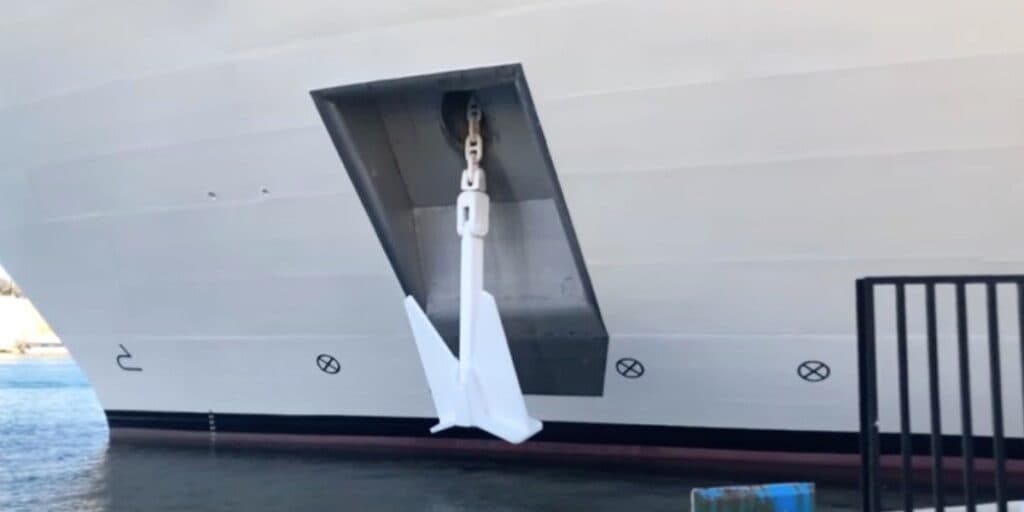
Cruise ship anchors typically weigh between ten and twenty US tons. The largest ships can be accommodated by significantly increasing the weight. It would be impossible for it to stabilize a ship with a lower weight, thus it is unlikely to go lower.
An anchor on the Titanic weighed about sixteen tons in US currency. That was really impressive even then.
The anchor serves only as a point of contact with the seafloor despite its weight. The chain of the anchor is much heavier and is essential to keeping the ship motionless.
What is the cost of fueling a cruise ship?
Anchor Chains
To determine the chain length, nautical engineers use a variety of techniques. In general, larger chains are needed for heavier anchors.
The weight of the chain helps to keep the cruise ship in place.
In contrast to short chains, which may allow the anchor to lose contact with the seafloor in choppy conditions, longer chains can tolerate greater movement.
The chain, which rests on the seafloor, needs to have enough slack when an anchor is lowered into the water. More surface area of contact with the seafloor is made possible by the slack, which absorbs more movement.
This sample table illustrates the relationship between chain lengths and the weight of their anchors.
Keep in mind that US tons, which are somewhat lighter than metric tons, will be used. 907 kg is around one US ton.
There are three main sizes of chains in terms of thickness.
Large cruise ships utilize 3/8-inch thick chains, whereas smaller ships use 1/4-inch thick chains and medium-sized ships use 5/18-inch thick chains.
What is the number of anchors on a cruise ship?
Upon docking in Rhodes Island, Greece, the Costa Fascinosa displays two cruise ship anchors. The Costa Fascinosa displays two anchors. The majority of contemporary cruise ships feature two anchors: one on the starboard side and one on the port side.
On rare occasions, when there is a strong current or heavy seas, cruise ships will employ both anchors. However, the cruise ship often only utilizes one anchor, saving the other for emergency usage.
Larger cruise ships may have a third backup anchor installed. Usually lighter than the other two anchors, the third anchor is smaller. Its main purpose is to serve as a backup in case the main anchor fails or malfunctions.
Can an Anchored Cruise Ship Remain Idle?
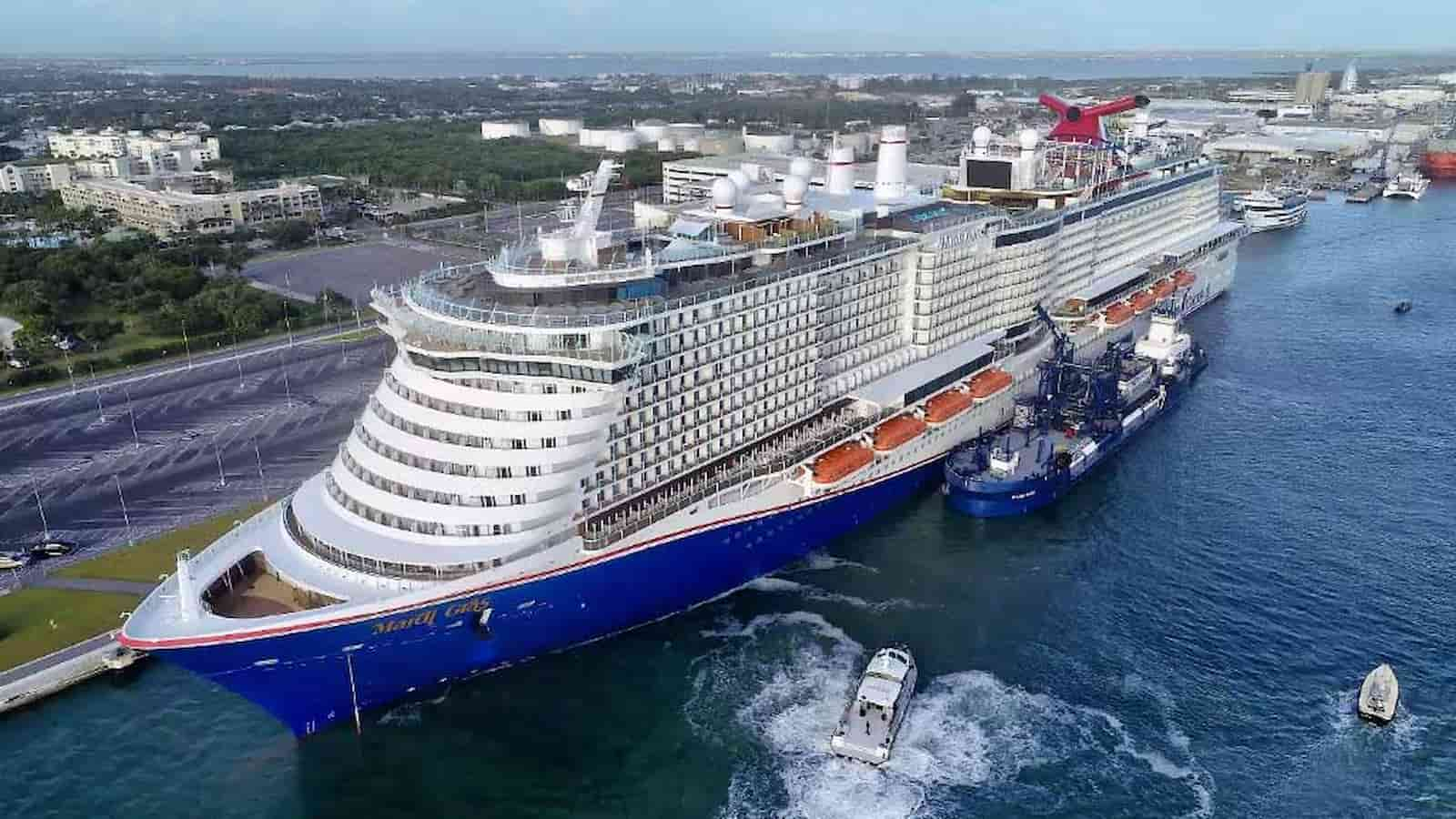
A contemporary cruise ship is not likely to lose its moorings. In addition, many cruise ships have two anchors. As a result, the second will serve as a backup in case the first breaks down for any reason.
The ship’s thrusters can keep it stable even if it loses all of its moorings for whatever reason.
The cruise ship will be at the mercy of the moving sea as long as it is not sailing, in the unlikely event that both the anchors and the dynamic positioning systems sustain damage.
Stated otherwise, the cruise ship could still get from point A to point B, but in the absence of anchors or dynamic positioning systems, it would not be able to remain still.
Docking would be the only way to get the problems fixed.
Are Anchors Still Used on Cruise Ships?
The anchor chain is visible, while Carnival Freedom is anchored off the coast of a Caribbean cruise port. Because anchoring has a negative environmental impact on the seabed and coral reefs, cruise ships usually avoid utilizing it.
The falling anchor, however, also has an impact on the visitors.
On a cruise ship, the staterooms closest to the bow are among the worst. The sound of the chain dropping anchor is one of the causes.
Early morning is when cruise ships typically dock at places of call. Furthermore, nobody wants to wake up at five in the morning to the sound of a freight train as the ship drops anchor.
What then, do cruise ships do differently? Fixed mooring places are available at certain cruise ports, such as Labedee, Haiti. Ships can stay still at sea as long as they are moored within a reasonable distance of the port. As a result, the ship can continue to move without deploying the anchor.
Some cruise lines choose to use dynamic positioning systems, which use the ship’s engines to keep the ship idle, if there are no fixed mooring locations available. All the bridge has to do is enter the coordinates; the system handles the rest.
However, there is a price for dynamic positioning systems.
To keep the engines running, they need a lot of gasoline. Cruise companies not only prioritize fuel expenses, but they also have an environmental impact.
Local rules in several cruise ports forbid using anchors to save coral reefs. The captain must choose whether to drop anchor or employ the dynamic positioning system if there are no regulations on anchors.
Related Posts
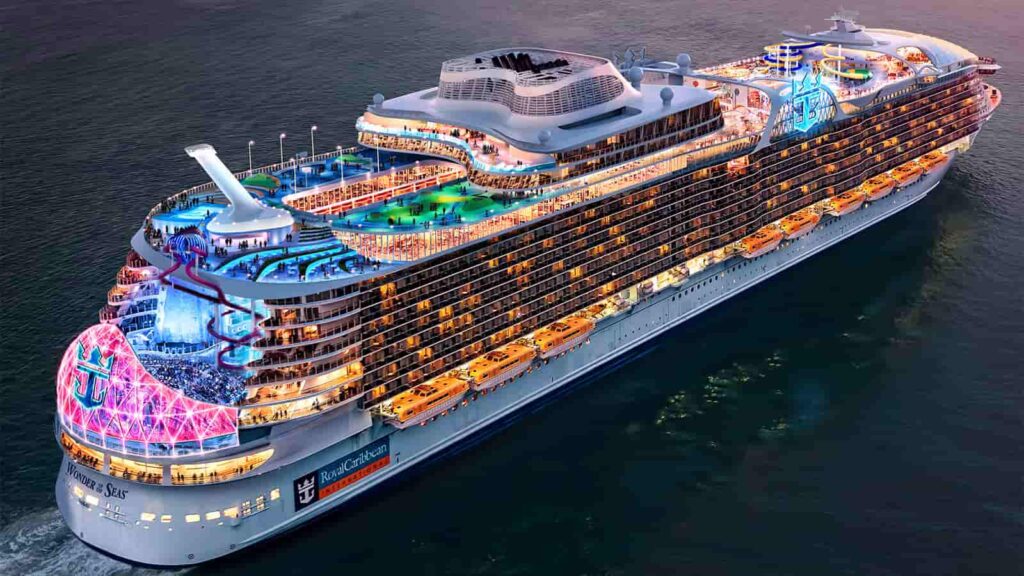
Royal Caribbean Cruises, History, Destinations and Itineraries

Ambassador Cruise Line: Ownership and History
Leave a comment cancel reply.
Your email address will not be published. Required fields are marked *
Save my name, email, and website in this browser for the next time I comment.

Cruise Ship Anchors – Function, Size, Weight, and Uses
If you have seen a cruise ship you may be wondering if they have anchors. The majority of boats and ships do but with the vast size of cruise ships are anchors needed in the same way?
Cruise ship anchors usually can’t be seen from the shore and if you’ve been on a cruise ship it’s unlikely that you have spent too much time wondering about how the cruise ships stay in one place.
I recently saw a replica of the Titanic’s anchor which made me wonder if modern ships still have anchors.
Do Cruise Ships Have Anchors?
Modern cruise ships do have anchors. Dynamic positioning technology has reduced the need for traditional anchors but has not eliminated their use completely. Cruise ship anchors are usually between 10-20 feet in length and weigh between 10 and 20 US tons. Most modern cruise ships will have more than one anchor.
Cruise ship anchors are used to keep the cruise ship in a stationary position. This is often needed when a ship stops out to sea.
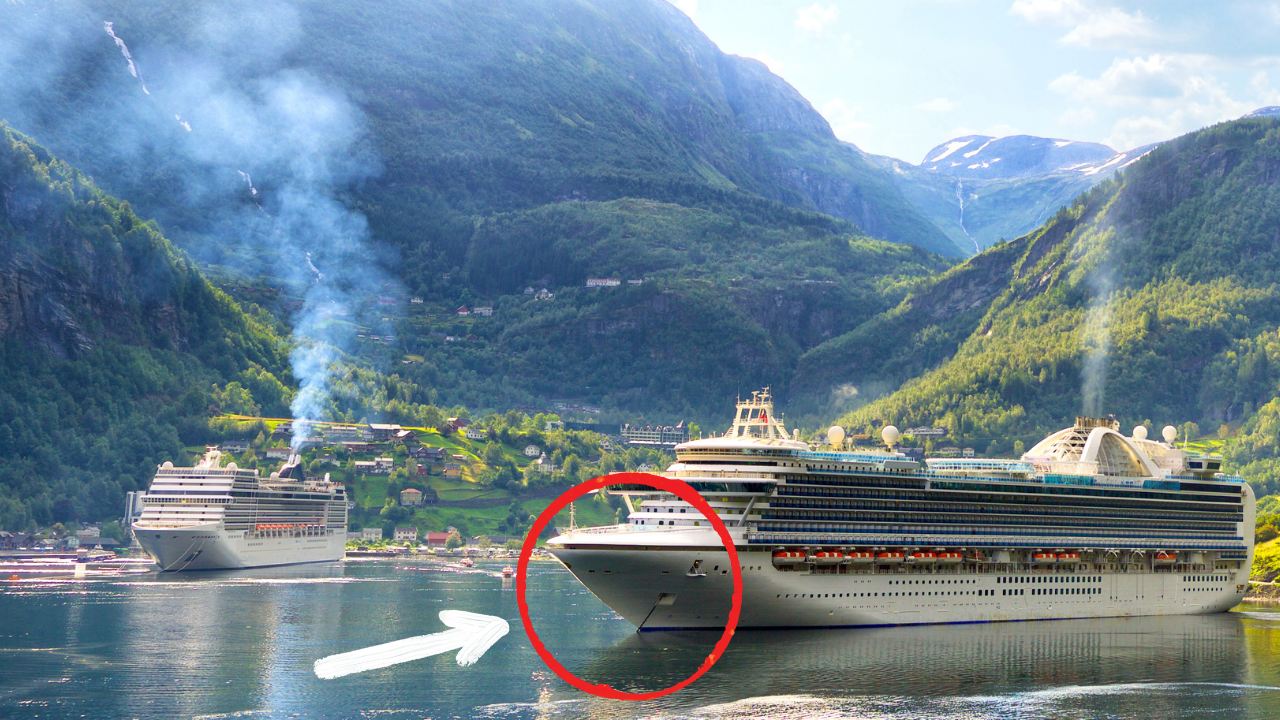
Do Cruise Ships Have Multiple Anchors?
The majority of ships have more than one anchor. It is common for ships to have two anchors, one on the port side and one on the starboard side of the ship.
There are a few reasons for this:
- In certain circumstances it makes sense to use an anchor that is on one side of the ship over the other.
- If an anchor became damaged, broke or was lost the ship needs to have another anchor that can be used as backup.
In addition to two working anchors, some ships will have a third backup anchor. This may not be the full size or weight of the main anchors.
When a ship uses both anchors at the same time and they are both anchored ahead, this is known as an open moor.
The below photo shows the Marella Discovery 2 using both anchors.
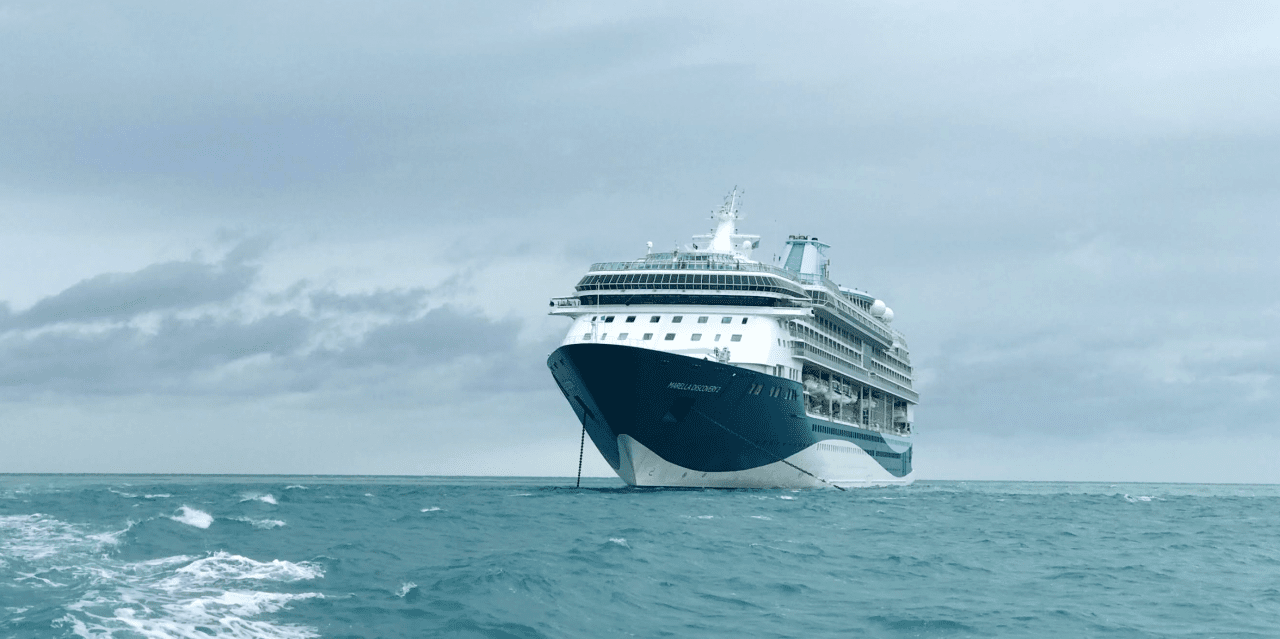
When do Cruise Ships Use Their Anchors?
Anchors are used to hold a ship in place. If a ship is unable to dock in a port due to shallow water it may be necessary for the ship to hold a position out to sea and to transport its passengers using tender boats.
Having to take a tender boat to land is a very common part of cruising. Guests are usually able to see ahead of time if the ports that they are visiting will require tendering.
I do enjoy tendering when I cruise but on occasion, it can mean long wait times. Tendering into port also increases the chance of a port being cancelled if the weather is bad. Cruise ships cannot risk tendering their passengers to land if they are unsure that they’ll be able to get them back later.
To learn how to spot tender ports and how to make the process as efficient as possible, check out this post: Cruise Ship Tendering – 5 Tips You NEED to Know .
How do Cruise Ship Anchors Work?
Cruise ship anchors dig into the seabed and provide a contact point for the ship.
When it comes to large ships, it isn’t just the anchor that holds the ship in place. The anchor is on the end of a long and heavy chain and the weight of this chain on the seabed helps to hold the ship in place. Each piece of the chain can be incredibly heavy.
The longer the anchor chain the more movement the ship can withhold. If the anchor chain was very short and a the ship slightly this may cause the anchor to break free. With a long chain the ship is able to move slightly without the anchor needing to come out of the seabed. The chain will simply become less slack.
Will Cruise Ships Always Need Anchors?
Modern technology has reduced the need for anchors but hasn’t completely eliminated it. Many modern cruise ships have ‘dynamic positioning’ meaning that they use propulsion and thrusters instead of anchors to maintain a steady position.
There are many benefits to using dynamic positioning over traditional anchoring including:
- Increased manouverability
- Quick to set up (and to stop)
- Seabed conditions and water depth don’t matter
Maintaining the position of a ship in this way may be better for the seabed as an anchor doesn’t have to be dropped but it does use more fuel and therefore produce more emissions. The initial cost to install this technology is also high.
Dynamic positioning was created in the 1960s for offshore drilling but it is a relatively new piece of cruise ship technology.
How Big are Cruise Ship Anchors?
Cruise ship anchors usually range from 10ft to 20ft in length. The Titanics anchor was 18ft 6 inches in length and the cast steelhead of the anchor was 10ft 9 inches.
In most cases, the size of the anchor directly correlates with the size of the ship.
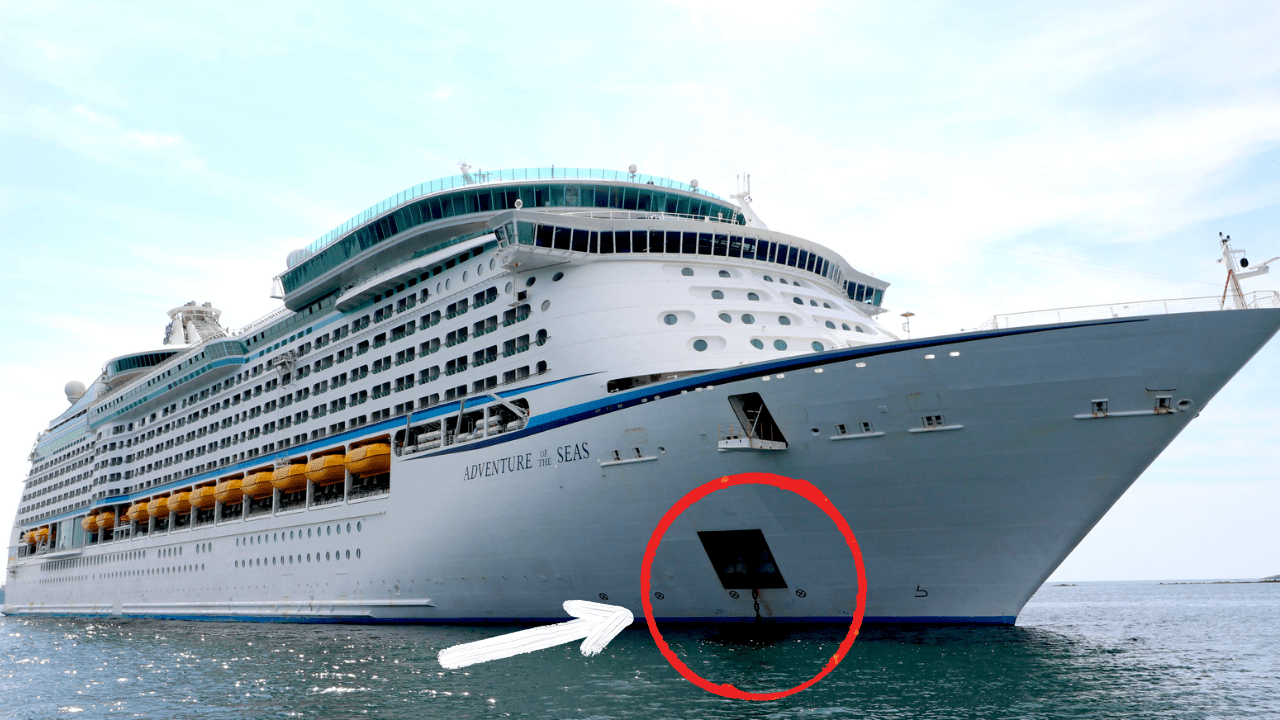
How Much do Cruise Ship Anchors Weigh?
As a general rule cruise ship anchors tend to weigh between 10 and 20 US tons. The Titanics anchor was 16 US tons and many of the large modern large ships have anchors that weigh vastly more.
The largest ship detailed by the iacs equipment number calculation would require a 46,000kg anchor. A ship with a 46 metric ton anchor would need an anchor chain of at least 770 metres.
To put that into perspective the largest elephants weigh around 5 tons, so that’s over 9 elephants!
The below table shows the correlation between anchor weight and chain length.
Note, metric tons are different from US tons.
1 metric ton is 1000 KG.
1 US ton is 907 KG.
What Would Happen if a Cruise Ship Lost it’s Anchor?
The majority of cruise ships do have more than one anchor and would be able to maintain their position using just one. Many modern cruise ships would be able to use dynamic positioning if all anchors were lost for some reason.
It’s worth noting that anchors very rarely get lost.
If a ship had lost all of its anchors and was unable to dynamically position the ship would be unable to maintain a position when out to sea.
In this situation, the ship would be either forced to dock in port or to keep sailing.
Cruise Ship Anchor Impact in 2020 and 2021
Due to the 2020 cruise industry shut down a number of cruise ships had to anchor out to sea for long periods of time. The long lengths of time that the ships would be at sea meant that anchoring was a necessity.
One area that was affected by this was the south coast of England. There are no laws that say that cruise ships cannot drop anchor when out to sea and as a result this is how most ships spent the year.
It was too expensive to keep the ships docked and there wasn’t enough dock space in many places to accommodate the number of ships without anywhere to go.
The impact of the ships anchoring out to sea is still being investigated.
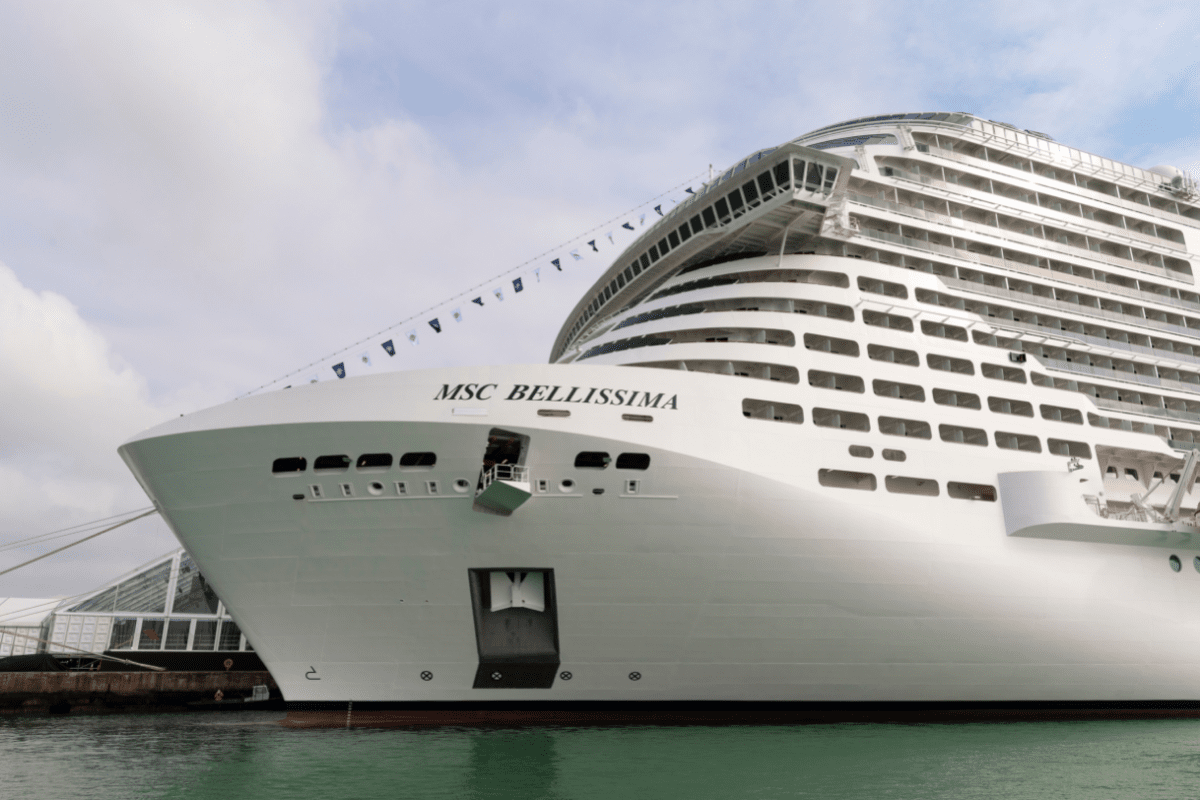
Cruise Ship Anchors (Sometimes) Have New Lives!
In the majority of cases, when a cruise ship is scrapped the anchor is scrapped along with the ship. There are a few examples though where cruise ship anchors have found new lives after their ship was scrapped.
Due to the weight and size of cruise ship anchors, it is difficult to use them for another purpose. One use of anchors has been as monuments or statues.
An anchor from the Queen Elizabeth 2 (1 of 2 anchors) currently is a landmark in Southampton. The anchor is 4.3m (14ft) by 2.7m (9ft) and weighs 13 tons.
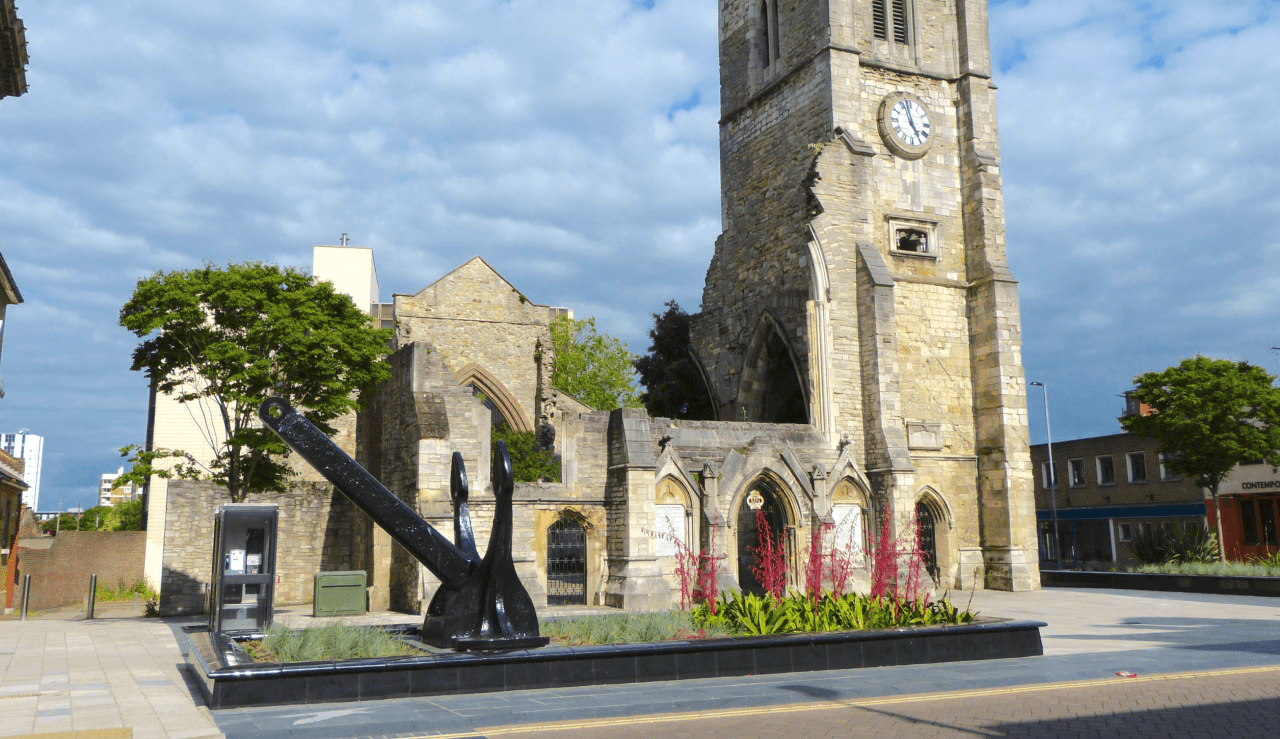
Free Insiders Cruise Line Guide
Enter your email address below:

How Does an Anchor Hold a Cruise Ship?
By Alice Nichols
An anchor is a critical piece of equipment for cruise ships, providing stability and security in the water. It is an essential part of the ship’s safety system, and understanding how it works can help to ensure that passengers and crew stay safe in any conditions.
Anchors are typically made from either steel or iron, and designed to be heavy enough to keep the ship from drifting away from its intended position. The weight of the anchor helps to resist any force that could cause the ship to move off-course, such as strong winds or currents. As it sinks into the water, it creates suction which helps hold it firmly in place.
The anchor is attached to a long chain or rope called a hawser, which is used to control how far down into the water it goes.
This allows the crew to adjust the depth of the anchor depending on sea conditions, ensuring that it will remain secure in even rough seas. The hawser also helps to distribute the weight of the anchor more evenly over a larger area, making it more effective at holding the vessel in place.
The anchors are usually stored on board and deployed when necessary by means of a winch or crane. This allows them to be quickly and easily deployed when needed, ensuring that the ship remains securely anchored for as long as required.
Conclusion:
Anchors are an essential part of keeping cruise ships safe at sea and understanding how they work can help ensure that passengers remain secure while they are out on their trip. By using heavy anchors attached to hawsers which can be adjusted depending on sea conditions, ships can remain securely held in place no matter what kind of weather they may encounter.
9 Related Question Answers Found
How does an anchor work on a cruise ship, how do they anchor a cruise ship, how heavy is an anchor on a cruise ship, how big is a cruise ship anchor, how much anchor chain does a cruise ship have, how big is an anchor on a cruise ship, how many anchors are on a cruise ship, how heavy is a cruise ship anchor, how long is the anchor chain on a cruise ship, backpacking - budget travel - business travel - cruise ship - vacation - tourism - resort - cruise - road trip - destination wedding - tourist destination - best places, london - madrid - paris - prague - dubai - barcelona - rome.
© 2024 LuxuryTraveldiva

How Anchors Work and All You Need to Know about Anchoring
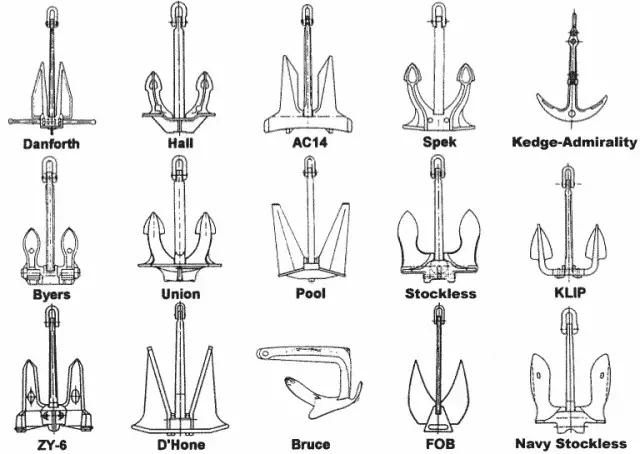
In this article, you will not only learn all the basics about anchors. You even get all the more advanced knowledge you need about how anchors work. Use the table of content if you search for an answer on a specific topic.
How Does An Anchor Hold A Ship?
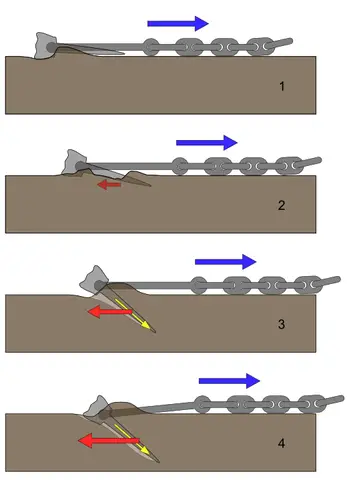
The primary force holding an anchored ship in place is the weight of the chain on the bottom of the sea.
The wind will push the boat away from the anchor and keep the chain in place.
Most anchors have flukes designed to dig into the ground. If the anchor is in the correct position, it will dig in deeper when wind or waves put pressure on the chain.
As you can see in the drawing, the anchor digs deeper into the seabed if the chain is pulled horizontally away from it.
To retrieve the anchor, the lift must be made vertically. This will happen when you pull in the chain, and the boat is directly above the anchor.
How Deep Do Ship Anchors Go?
Does a boat anchor have to touch the bottom.
Yes, all anchors rest on the seabed. An anchor is designed in such a way that it digs into the seabed and holds the boat from moving away. An anchor works together with a chain.
One exception is a drogue which I will get back to later.
How Much Chain Do You Need?
As a rule of thumb, you need a chain in the amount of 5 to 7 times the depth of the water.
How much anchor line should you use if the water is 20 feet deep? With the above-mentioned rule, you would need at least 100 feet of chain.
How Deep Do Sea Anchors Go?
As stated above, how deep an anchor goes depends on the depth of the sea combined with the length of the chain . This is why it is not possible to anchor in deep seas, you simply cannot carry that much chain.
Coasters, ferries, and other large commercial ships like dry bulkers and tankers often anchor longer from the cost than leisure boats or even at special anchor areas defined by port authorities. They have a bigger draft (deeper keel) and need a lot of space to maneuver in.
How Does A Ship Anchor Work In Deep Water?
In deep water, as I have already said, it requires a substantial amount of chain to touch the bottom. That’s why instead of an anchor, they use a large and strong underwater “parachute” also known as a storm drogue that provides a drag, which acts as a brake.
As this sea parachute is made out of fabric, it can be stored away easily. A drogue will not hold the ship in place but slow you down significantly.
In emergencies, you could use almost anything as a drogue. A plastic bag, the bag from a sail or similar.
Types of Anchors
There are generally spoken three types of modern anchor designs. The fluke anchor, the plow anchor, and the claw anchor. They all work by digging into the seabed.
Older anchor types “grabs on” rather than dig in, making them less effective than the modern models.
Both the fluke, the plow, and the claw anchor are designed with a top and a bottom. The bottom is heavier than the top, which means that it almost always turns correctly when it lands on the seabed.
Fluke Anchor
Fluke anchors are very popular on small boats and with good reason.
- It is Lightweight
- It stoves away very easily (folds up and takes only a little storage room)
- It holds well in mud or sand
On the negative side, the fluke anchor doesn’t hold very well on grassy or rocky surfaces.
Plow Anchor
Plow anchors are a safer choice if you need an all-around anchor for your boat.
Plow anchors have fixed shanks and look like a plow.
- It reset itself if the wind or current changes direction
- Holds effectively in grass, mud, and sand
On the negative side is the higher weight and need for a storage room.
Claw Anchor
A claw anchor is the cheapest type of modern anchor due to its simple design. It holds okay in any seabed but is a bit harder to handle, in my opinion. Its design is adapted from anchors used to secure oil rigs in the North Sea.
Like the plow anchor, it does not fold away and takes up a lot of storage room.
Anchor types are often named after the manufacturer who invented it, but you will find many copies with another brand name. A good example is the Bruce anchor (the claw anchor), which is a brand but also often referred to as a particular type of anchor. Bruce does not produce this type of anchor anymore, but you will find others who do.
The Weight Of The Anchor
The weight of the anchor depends on how heavy your ship is. But most important is to look at the anchor manufacturer’s suggested size.
And remember that anchor weight cannot stand alone, you also need a chain to hold the anchor. This chain acts as a shock absorber.
It is found that for small boats, one pound of anchors for every foot of boat length, is a general rule of thumb.
Suppose you have a 25’ boat, so you need a 20-25lb Bruce anchor with 50’ of 1/4 chain and 500 feet of chain to anchor in 100’ of water comfortably.
Why Do Some Ships Have 2 Anchors?
There is more than one reason why a ship would carry two anchors:
- Different anchors are needed for different seabeds
- Staying put instead of moving in circles
- For various safety reasons
Most of the time one anchor is enough to keep the ship in place but sometimes ships need to set 2 anchors to keep them in place.
Some ships carry an extra anchor because anchors can be easily lost due to various reasons like heavy wind, bad weather, strong current, etc.
Most ships have 2 anchors because with only one anchor you can move in a circle and with another, you are positioned in one place.
What Happens If An Anchor Gets Stuck?
Anchors are sometimes left behind because they get stuck, and anchors do get stuck from time to time, especially if you are not using a windlass. If this happens, the anchor will lay on the bottom of the sea until rusted and sanded into small particles of metal.
Many sailors have experienced lifting their anchor and accidentally retrieving an old anchor too.
Why Do Ships Lose Their Anchors?
Here are some of the most common reasons why ships sometimes lose their anchor:
- Inadequate securing
- Equipment failures
- Broken anchor line
- Abandoned anchor
- Environmental risk factors
Inadequate Securing
Not operating the anchor gear sufficiently is a common reason for losing the anchor. Especially not securing the end of the line or chain while focusing on other maneuvers happens very often. Having a suitable and rehearsed procedure will prevent this from happening in most cases.
Equipment Failures
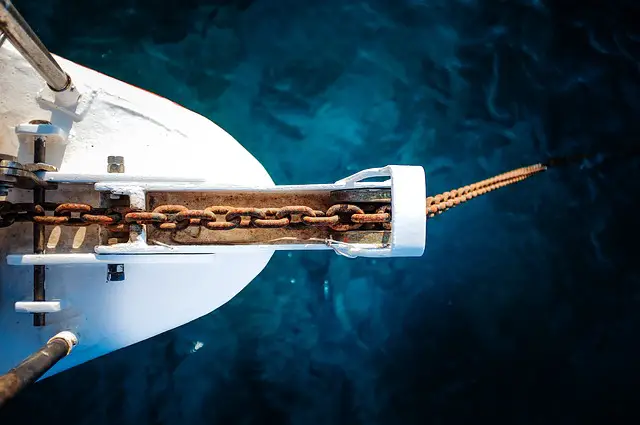
The anchor chain gets rusty, and lines lose their strength with age. It is essential to maintain all gear on a boat and to review all equipment regularly.
Rusty Anchor Line
Anchor lines are exposed if someone sails across them, and get the line in their prop. The prop can get damaged, but also the anchor line is likely to brake. That is why it is crucial to stay clear of anchored vessels. Many ships today do not use anchor lines and have only anchor chains, making anchoring more safe.
Abandoned Anchor
Ships sometimes have to leave the anchor behind, if the anchor is stuck – This happens only rarely with the modern types of anchors.
Environmental Factors
Environmental factors such as weather, the strength of the currents, and water depth are some of the most common reasons for losing anchors.
Here Is A Video That Shows Exactly How Anchors Work
Related Posts
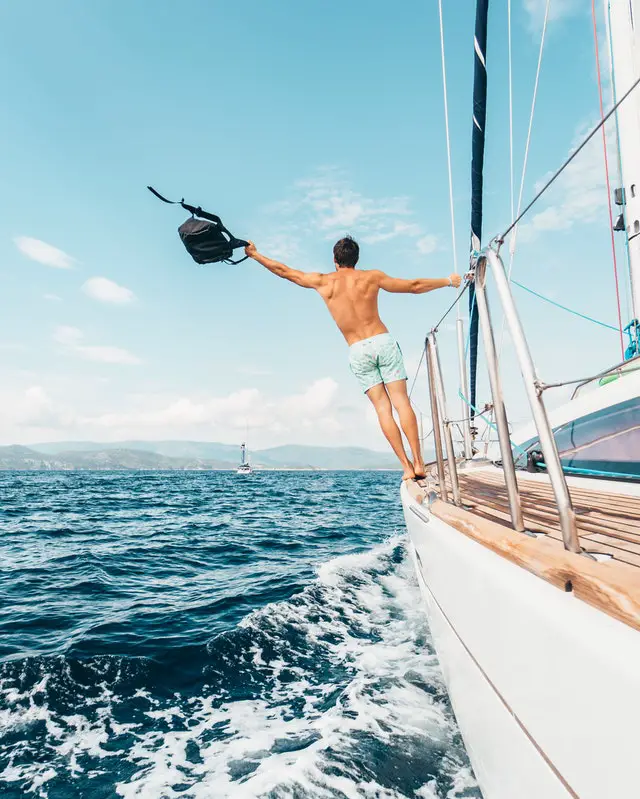
Should you own or charter a boat?
I could give you many reasons why not to buy a boat, but they would be the same reasons not to have a child. Unknown…
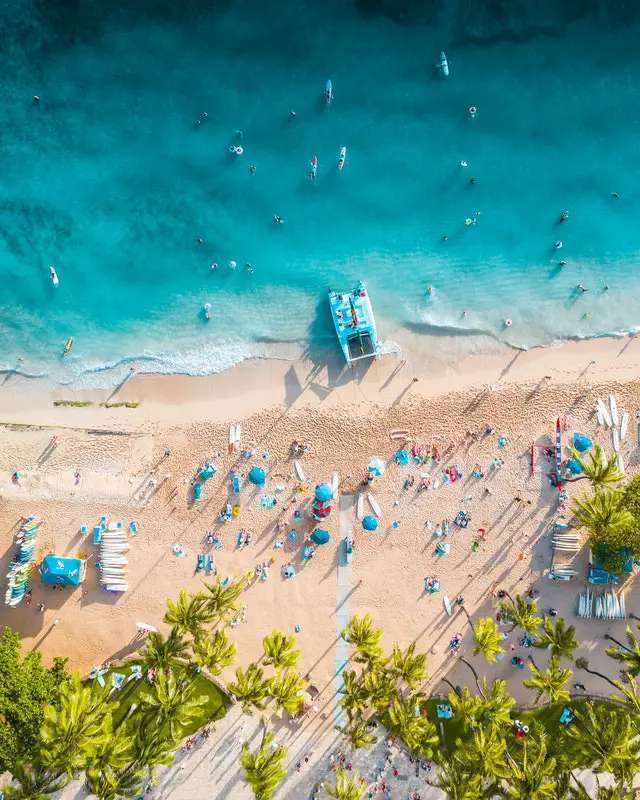
Which catamarans have daggerboards?
After researching catamarans we have made a list of catamarans with daggerboards. Performance means a great deal for us, so we are looking at the…

Guide to boat fiberglass
As we consider buying a larger and more comfortable boat for long voyages, I find it interesting to examine the different qualities of fiberglass and…

Silic One antifouling test
Note this post is an expression of my research and attitudes. I am neither sponsored nor otherwise influenced, other than perhaps regular advertising. Judge for…
- Carnival Cruise News
- Royal Caribbean News
- Disney Cruise News
- Travel News
- Casino News
- Cruise News
The Anatomy of a Cruise Ship Anchor Chain

While it may seem like a relatively simple piece of equipment, a cruise ship’s anchor is a marvel of modern engineering. When you consider the incredible size and weight of a modern-day cruise ship, you begin to realize what an incredibly difficult task is to ensure they are secured in place while they are in the harbor.
Today, we will take an in-depth look at cruise ship anchor chains. Not only will we break down how they work, but we also explore what they are made from, the various components of the chain, and the incredible engineering that goes into ensuring that they can hold a cruise ship in place.
So, if you are ready to learn everything you need to know about a cruise ship anchor chain, let’s get started!
While it may seem pretty self-explanatory, a cruise ship anchor chain plays a complex and incredibly important role in ensuring the overall safety of a cruise ship voyage. These massive chains need to withstand the incredible forces exerted on the cruise ship’s anchor when the cruise ship is in the harbor.
To withstand the immense pressure generated by holding a heavy cruise ship in place against tides, waves, and ocean currents, the anchor chain and cables need to be immensely strong, and incredibly flexible. The individual chain links look just like any other type of chain, but they are on a massive scale.
Each link in the chain is made from high-grade steel with incredible tensile strength. While the chain size will vary depending on the size and weight of the cruise ship, they are all incredibly large and heavy.

Read Also: What is the Draft of a Ship?
In some cases, the waters the cruise ship traverses can also be a factor when determining how large the anchor chain needs to be. For example, large ships that traverse deep waters with strong currents need a much larger anchor and anchor chain than small boats on shallow water that stay close to the coastline.
The traditional anchor chains of a cruise ship may seem like they have a relatively simple design, but they are made up of many different parts, which all have to be made to an extremely high standard.
Here are the main components of a cruise ship anchor chain:
The most prominent component of a cruise ship anchor chain is the series of interconnected links that make up the bulk of the chain. These links are massive in scale, and they need to be constructed of high-tensile, high-strength steel.
The chain design allows for the perfect combination of strength and flexibility, which is necessary when holding a heavy anchor in place against the tremendous forces of a large body of water and heavy vessels.
Each link in the chain will look like an elongated oval, or it can be designed to have more of a “D” shape. These two shapes allow the chains to be connected in a way that maintains their strength but can still move smoothly.
All links within the chain are also designed to be the exact same size. They also need to be precisely spaced so that each link has the same freedom to move as the next. If this was not the case, dropping and retrieving the anchor would be much rougher. The chain could also become damaged over time.
The individual links within the chain are joined together using a detachable mechanism. Basically, this mechanism consists of a connector and an anchor shackle.
Not only does this make it possible to put the chain together, it also makes it possible to remove damaged or corroded links within the chain without completely replacing the entire anchor chain.
Most cruise ship anchor chains also feature depth markings at evenly spaced-out intervals. These allow crew members to easily determine how much of the chain has been released by the anchor windlass. Typically, these markings are made with bright, scratch-resistant paint; however, they can be made by stamping impressions into the metal.
To learn more about the anchor of a cruise ship, rather than just the chain that connects it to the ship, we recommend reading about how big a cruise ship anchor is . This straightforward guide explains how big these enormous anchors need to be and provides other helpful information on how modern anchors work.
As mentioned, the anchor weight, chain length, and size of a cruise ship’s chain can vary depending on the weight and dimensions of the cruise ship itself.
That said, the general range for a single link of the anchor’s chain tends to be between 11 lbs (5 kg) to about 290 lbs (130 kg). The longer the chain length, the more it weighs.
Worth Reading: How Much Does a Cruise Ship Weigh?
With individual links weighing so much, the anchor chain’s overall weight can easily be measured in tons. When you think about the weight of a cruise ship and the immense forces sea and ocean water can exert, it only makes sense that the chains need to be incredibly heavy.
Cruise ship anchor chains need to be made from high-strength steel. Steel is the only suitable choice, as it offers the durability and strength required to withstand such immense forces. The high-strength steel alloys used to make these enormous anchor chains are also resistant to corrosion caused by lengthy exposure to saltwater.
To enhance the corrosion resistance of the anchor chain, most are given additional coatings and surface treatments to enhance the anchor chain’s corrosion resistance. Galvanization and various types of specialized coatings are used for the individual links of the anchor chain.
These surface treatments can not only delay corrosion, they can also help prevent scratching as the chain links rub against each other and even the hull.
Not only do cruise ship anchor chains need to be heavy, strong, and incredibly durable, they need to be flexible. Flexibility is essential for the following reasons:
Even when a cruise ship is anchored in a harbor, the anchor chain must be capable of adjusting to fluctuations in water conditions. The tide can change the depth of the water rapidly, so if the chain is not flexible, it would be under much more tension.
This could damage the anchor and the ship itself. By remaining flexible, the anchor chain can also absorb sudden forces caused by large waves and storms.
A flexible anchor chain creates far less noise when the ship moves. For passengers to have a more comfortable experience while they are on board the ship, flexible anchor chains reduce creaks and other noises that could be disturbing.
The chain’s flexibility is essential when it comes to dropping and retrieving the anchor. When the anchor is dropped or lifted, the chain flows through a chute on the side of the ship’s bow.
As you may know, a seabed in one area can differ in composition from one area to the next. While some are sandy and easy for an anchor to dig into, others are uneven and rocky. By having a strong but flexible anchor chain, the anchor can have a much more stable hold.
Currently, the world’s largest anchor chain belongs to the Oasis Class cruise ships owned and operated by Royal Caribbean International. These anchor chains weigh between 130 and 160 tons!
Although extremely rare, cruise ship anchor chains have been known to break. Typically, this is due to corrosion and long-standing exposure to salty seawater. Overloading the anchor chain by dropping anchor in rough seas can also cause wear and tear. Eventually, this damage could result in the chain breaking.
Read about an anchor lost after getting stuck near San Juan for an example of how and why large vessels could be forced to cut its anchor loose.
While the exact frequency of inspections will depend on the particular policies of each cruise line, most anchor chains are inspected as part of the cruise ship’s regular inspection and maintenance procedures. This means a visual inspection usually occurs before each voyage.
More in-depth inspections are typically conducted at least once a year. During these inspections, each chain link is checked for signs of damage and corrosion. As you would expect, the frequency and closeness of inspections can increase if the crew suspects that the anchor chain could be damaged.
While casual cruise-goers often overlook them, there is an incredible amount of engineering that goes into making and maintaining a cruise ship anchor chain. Not only is the scale of the individual links impressive, but the ability of the chain to withstand immense forces is also truly a marvel of maritime engineering.
RELATED ARTICLES MORE FROM AUTHOR
See how Search Underway for Missing Cruise Passenger in Mexico
Check out American Actor to Serve as Godfather to Carnival Firenze
Check out Norwegian Cruise Line Explains After Switching Port
Leave a reply cancel reply.
Save my name, email, and website in this browser for the next time I comment.

Don't Miss
See how taylor swift themed cruise taking over royal caribbean ship, check out how to pack for kids on a cruise without going overboard, check out msc offering cruises for $279 that include wifi and drink packages, check out norwegian cruise line adding 1,000 solo cabins across 19 cruise ships, even more news.
Check out American Actor to Serve as Godfather to Carnival...
POPULAR CATEGORY
- Cruise News 1961
- Disney Cruise News 218
- Carnival Cruise News 74
- Royal Caribbean News 64
- Casino News 58
- Travel News 33
- Visit our Youtube page!
How Mega-Ships Drop Their Giant Anchors
An in-depth explanation of the process.
In the simplest sense, anchors are pretty straightforward. Heave a heavy chunk of metal overboard to weigh down a ship so it doesn't drift away. Of course in practice, the process is a lot more nuanced, and it only gets more complicated the larger the ship is. More complicated, and more impressive.
Dropping anchor can be as simple as letting the anchor free fall into the water, but it's a process that requires a skilled operator to make sure the anchor doesn't start falling so fast that the brakes on the windlass can't stop it .
While it's easy to think of an anchor as deriving its staying power from going down, the process of anchoring is more about horizontal force. As the current or wind pulls a ship this way and that, the ship needs its anchor to bite into the sea floor, but with enough slack in the chain that the boat won't start dragging that hunk of metal all over the place. That's a process that can actually involve motoring back up over the anchor to make sure the chain doesn't get too taut.
Turns out staying put isn't as easy as just stopping everything.
Source: JeffHK

.css-cuqpxl:before{padding-right:0.3125rem;content:'//';display:inline;} Pop Mech Exclusives .css-xtujxj:before{padding-left:0.3125rem;content:'//';display:inline;}

7 Solid Reasons to Actually Believe in Aliens

The Fortress For the World’s Ancient Manuscripts

A Fifth Ocean May Be Forming, Scientists Say

What It’s Really Like to Be a CIA ‘Shadow Warrior’
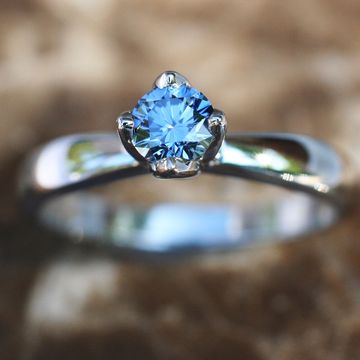
How Dead People Are Turned Into Diamonds
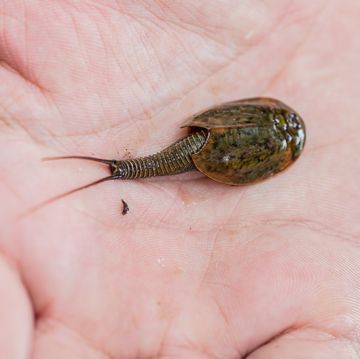
This Year's Burning Man Had Lots of Sea Monkeys
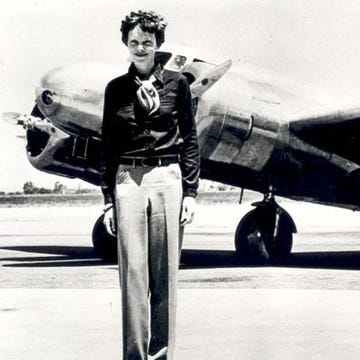
Was Amelia Earhart Eaten by Crabs?

How to Remove Wallpaper

New Photo May Be a Clue in Earhart Mystery

Why Air Turbulence Is Getting Worse

New Medicine May Help New Teeth Grow

The Anatomy of a Cruise Ship Anchor Chain
While it may seem like a relatively simple piece of equipment, a cruise ship’s anchor is a marvel of modern engineering. When you consider the incredible size and weight of a modern-day cruise ship, you begin to realize what an incredibly difficult task is to ensure they are secured in place while they are in the harbor.
Today, we will take an in-depth look at cruise ship anchor chains. Not only will we break down how they work, but we also explore what they are made from, the various components of the chain, and the incredible engineering that goes into ensuring that they can hold a cruise ship in place.
So, if you are ready to learn everything you need to know about a cruise ship anchor chain, let’s get started!
In This Article:
What is a cruise ship anchor chain.
While it may seem pretty self-explanatory, a cruise ship anchor chain plays a complex and incredibly important role in ensuring the overall safety of a cruise ship voyage. These massive chains need to withstand the incredible forces exerted on the cruise ship’s anchor when the cruise ship is in the harbor.
To withstand the immense pressure generated by holding a heavy cruise ship in place against tides, waves, and ocean currents, the anchor chain and cables need to be immensely strong, and incredibly flexible. The individual chain links look just like any other type of chain, but they are on a massive scale.

Each link in the chain is made from high-grade steel with incredible tensile strength. While the chain size will vary depending on the size and weight of the cruise ship, they are all incredibly large and heavy.
Read Also: What is the Draft of a Ship?
In some cases, the waters the cruise ship traverses can also be a factor when determining how large the anchor chain needs to be. For example, large ships that traverse deep waters with strong currents need a much larger anchor and anchor chain than small boats on shallow water that stay close to the coastline.
What Is the Anatomy of a Cruise Ship Anchor?
The traditional anchor chains of a cruise ship may seem like they have a relatively simple design, but they are made up of many different parts, which all have to be made to an extremely high standard.
Here are the main components of a cruise ship anchor chain:
The Chain Links
The most prominent component of a cruise ship anchor chain is the series of interconnected links that make up the bulk of the chain. These links are massive in scale, and they need to be constructed of high-tensile, high-strength steel.
The chain design allows for the perfect combination of strength and flexibility, which is necessary when holding a heavy anchor in place against the tremendous forces of a large body of water and heavy vessels.

Each link in the chain will look like an elongated oval, or it can be designed to have more of a “D” shape. These two shapes allow the chains to be connected in a way that maintains their strength but can still move smoothly.
All links within the chain are also designed to be the exact same size. They also need to be precisely spaced so that each link has the same freedom to move as the next. If this was not the case, dropping and retrieving the anchor would be much rougher. The chain could also become damaged over time.
The Joining Mechanism
The individual links within the chain are joined together using a detachable mechanism. Basically, this mechanism consists of a connector and an anchor shackle.
Not only does this make it possible to put the chain together, it also makes it possible to remove damaged or corroded links within the chain without completely replacing the entire anchor chain.
Depth Markings
Most cruise ship anchor chains also feature depth markings at evenly spaced-out intervals. These allow crew members to easily determine how much of the chain has been released by the anchor windlass. Typically, these markings are made with bright, scratch-resistant paint; however, they can be made by stamping impressions into the metal.

To learn more about the anchor of a cruise ship, rather than just the chain that connects it to the ship, we recommend reading about how big a cruise ship anchor is . This straightforward guide explains how big these enormous anchors need to be and provides other helpful information on how modern anchors work.
How Much Do Cruise Ship Anchor Chains Weigh?
As mentioned, the anchor weight, chain length, and size of a cruise ship’s chain can vary depending on the weight and dimensions of the cruise ship itself.
That said, the general range for a single link of the anchor’s chain tends to be between 11 lbs (5 kg) to about 290 lbs (130 kg). The longer the chain length, the more it weighs.
Worth Reading: How Much Does a Cruise Ship Weigh?
With individual links weighing so much, the anchor chain’s overall weight can easily be measured in tons. When you think about the weight of a cruise ship and the immense forces sea and ocean water can exert, it only makes sense that the chains need to be incredibly heavy.
What Is a Cruise Ship Anchor Chain Made Of?
Cruise ship anchor chains need to be made from high-strength steel. Steel is the only suitable choice, as it offers the durability and strength required to withstand such immense forces. The high-strength steel alloys used to make these enormous anchor chains are also resistant to corrosion caused by lengthy exposure to saltwater.

To enhance the corrosion resistance of the anchor chain, most are given additional coatings and surface treatments to enhance the anchor chain’s corrosion resistance. Galvanization and various types of specialized coatings are used for the individual links of the anchor chain.
These surface treatments can not only delay corrosion, they can also help prevent scratching as the chain links rub against each other and even the hull.
Why Do Cruise Ship Anchor Chains Need to Be Flexible?
Not only do cruise ship anchor chains need to be heavy, strong, and incredibly durable, they need to be flexible. Flexibility is essential for the following reasons:

The Ability to Move with Currents, Tidal Changes, and Swell
Even when a cruise ship is anchored in a harbor, the anchor chain must be capable of adjusting to fluctuations in water conditions. The tide can change the depth of the water rapidly, so if the chain is not flexible, it would be under much more tension.

This could damage the anchor and the ship itself. By remaining flexible, the anchor chain can also absorb sudden forces caused by large waves and storms.
Noise and Vibration Reduction
A flexible anchor chain creates far less noise when the ship moves. For passengers to have a more comfortable experience while they are on board the ship, flexible anchor chains reduce creaks and other noises that could be disturbing.
Flexibility Makes it Easier to Drop and Retrieve the Anchor
The chain’s flexibility is essential when it comes to dropping and retrieving the anchor. When the anchor is dropped or lifted, the chain flows through a chute on the side of the ship’s bow.

Flexibility Allows the Anchor to Adjust to Differing Seabed Depths and Compositions
As you may know, a seabed in one area can differ in composition from one area to the next. While some are sandy and easy for an anchor to dig into, others are uneven and rocky. By having a strong but flexible anchor chain, the anchor can have a much more stable hold.
Frequently Asked Questions (FAQs)
What is the biggest cruise ship anchor chain in the world.
Currently, the world’s largest anchor chain belongs to the Oasis Class cruise ships owned and operated by Royal Caribbean International. These anchor chains weigh between 130 and 160 tons!
Do cruise ship anchor chains ever break?
Although extremely rare, cruise ship anchor chains have been known to break. Typically, this is due to corrosion and long-standing exposure to salty seawater. Overloading the anchor chain by dropping anchor in rough seas can also cause wear and tear. Eventually, this damage could result in the chain breaking.
Read about an anchor lost after getting stuck near San Juan for an example of how and why large vessels could be forced to cut its anchor loose.
How often are cruise ship anchor chains inspected?
While the exact frequency of inspections will depend on the particular policies of each cruise line, most anchor chains are inspected as part of the cruise ship’s regular inspection and maintenance procedures. This means a visual inspection usually occurs before each voyage.
More in-depth inspections are typically conducted at least once a year. During these inspections, each chain link is checked for signs of damage and corrosion. As you would expect, the frequency and closeness of inspections can increase if the crew suspects that the anchor chain could be damaged.
Final Words
While casual cruise-goers often overlook them, there is an incredible amount of engineering that goes into making and maintaining a cruise ship anchor chain. Not only is the scale of the individual links impressive, but the ability of the chain to withstand immense forces is also truly a marvel of maritime engineering.
Related Posts
Leave a reply cancel reply.
Your email address will not be published. Required fields are marked *
How ships float, avoid icebergs, & other questions from our not-so-scientifically-inclined writers.
As a Sailor on one of our cruises, there’s some stuff we don’t want you to worry about. Cooking for yourself, for example. Stressing about work. And we certainly don’t want our Sailors to be preoccupied wondering, “how do cruise ships work?” or “no seriously, how do they stay afloat like that?” Our engineers worry about these things so you don’t have to. But even if you’re not contemplating the Archimedes Principle of positive buoyancy while you’re soaking up rays on the pool deck, you might have always wanted to know how cruise ships stay afloat, or how they avoid obstacles at night. These are interesting questions, even for the non-mechanically inclined.
Since we’re in the cruising business, we find this stuff fascinating, too. That’s why we interviewed Chief Engineer Rhea Wilson and her team to get the inside scoop on everything related to ship mechanics and operations. They break down how cruise engines work, where the water you’re drinking comes from, how cruise ships detect icebergs, how they avoid icebergs, and — yeah, a lot of other iceberg-related questions. If you knew nothing about ship mechanics before, that’s about to change. This one’s for all the nerds out there.
How cruise ships work: An interview with our Chief Engineer
Maybe a stupid question, but how does such a massive boat stay afloat, anyway?
Engineers : Science. Archimedes Principle to be exact, positive buoyancy. Basically the bit of the ship in the water weighs less than the weight of water it replaces (lots of tanks to create buoyancy). Why a tree trunk will float but a brick will sink despite the tree trunk weighing more.
Where is the engine located, and how are cruise ships powered?
Engineers : Cruise ship engines are located near the bottom of the ship as they are heavy, and they are usually towards the aft of the ship. Cruise ships use Diesel-Electric propulsion systems. The main engines are generators which produce electricity which then powers the azipods. VV ships have 4 engines and 2 azipods. There are 3 bow thrusters to provide maneuverability when arriving/departing a port.
Azipods are a motor with a built in propeller and rudder. The electrical power created by the engines drives this big azipod motor which turns the propellers, and pulls the ship forward. Basically think of how a jet engine pushes air across a plane wing — that's how an azipod and propeller pushes water across the rudder and drive/steer the ship. They can turn 360 degrees for maneuverability, and the rpm of the propeller varies depending on the required ship speed.
People tend to imagine engine rooms looking like the one on Titanic, with sweaty laborers shoveling coal into the engine. What does a cruise ship engine room actually look like?
Engineers : Well it can be a hot working environment, there is a lot of heat generating machinery in the engine rooms. However a modern engine room is bright and clean and nothing like Titanic. The engines are a large part of the engine room, but the whole lower part of the ship is the engine rooms and compartments with auxiliary equipment used to supply a whole ship. So fresh water generators, a wastewater treatment plant, stabilizers for minimizing ship movement etc, not only the engines like you see in the movies.
Speaking of Titanic, what technology is in place to keep cruise ships from hitting icebergs?
Engineers : Much better equipment for detecting objects in the water. Be it small craft, other large ships, or icebergs. That and proper binoculars for the lookouts.
Cruise ships are pretty huge. How quickly could it change direction and navigate around an iceberg, if one was detected?
Engineers : As above, the azipods make a large ship really maneuverable for it's size, much more so than a ship with conventional propellers and rudders.
If the ship did hit an iceberg, and started taking on water, what would happen?
Engineers : There are 5 main vertical zones along the ship, and split further into compartments. Every one of these compartments are capable of being fully isolated in case water came in and the ship would still be operational. There are regulations in place for essential services to stay functional in case certain sections were lost to fire or flooding.
Okay, enough about icebergs. We don’t even sail near them. People are more aware now than ever of their carbon footprint. What are cruise ships doing to reduce emissions ?
Engineers : There are stringent rules and regulations on emissions globally and locally to the ports the ships visit. There are advanced gas cleaning systems always in use to comply with these rules.
If someone fell overboard and the ship needed to stop, how long would that take? No one will, but I just have to ask.
Engineers : The requirement for a complete stop from full speed is 15 ship lengths, but the Virgin Voyages ships take less than half that for a stop from full speed.
Where do the ship engineers (and other essential ship operating staff) sleep when they’re not working?
Engineers : The majority of ship engineers/essential staff have accommodations close to the Engine Control Room, so they are close to their workplace. Most engine officers have an alarm fitted in their cabins which is activated from the ECR in case of technical emergency. Usually the deck below the main passenger decks, so with a porthole for daylight :)
Is there a giant 12,000,000,000 lb anchor like you see in movies?
Engineers : Not so much. There are two anchors by the bow, but they're not comically large. An anchor's “weight” to keep a ship in place is in the chain, not the anchor itself.
Where does the drinking water come from on a cruise ship (please tell us it’s not toilet water)?
Engineers : There are large Reverse Osmosis plants which take in heavily filtered sea water, and then after many processes produce fresh water. This fresh water is then treated to public health requirements and standards. So no, it's not from the toilet water. That water never goes anywhere near the potable fresh water.
Sometimes I’ll see the ship captain dining in a restaurant, or wandering around the boat. When he’s gone, who’s keeping the ship away from icebergs?
Engineers : Well there is a whole team for deck and engine departments, and the Captain can't be navigating the whole time. There is a watchkeeping team – consisting of deck officers on the bridge and technical officers in the ECR – 24/7 keeping the ship away from icebergs and the lights on while the Captain is out having dinner.
Wow, we certainly learned a lot about cruise ships!
Take that curiosity a step further and check out our Ships page to see more about our lady ships.
Related Articles
Come aboard our adults-only cruises for a kids-free getaway at sea., we’re all about the best “ships,” from friendship to partnerships, to cruise ships and beyond., cruises vs. all inclusive resorts: why one is the clear victor….
- Port Overview
- Transportation to the Port
- Uber & Lyft to the Port
- Dropping Off at the Port
- Cruise Parking
- Cruise Hotels
- Hotels with Parking Deals
- Uber & Lyft to the Ports
- Things to Do
- Cozumel Taxi Rates
- Free Things to Do
- Restaurants Near the Cruise Port
- Hotels & Resorts With Day Passes
- Closest Beaches to the Cruise Port
- Tips For Visiting
- Shore Excursions
- Cruise Parking Discounts
- Hotels with Shuttles
- Which Airport Should I Use?
- Transportation to the Ports
- Dropping Off at the Ports
- Fort Lauderdale Airport to Miami
- Inexpensive Hotels
- Hotels near the Port
- Hotels With Shuttles
- Budget Hotels
- Carnival Tips
- Drink Packages
- Specialty Restaurants
- Faster to the Fun
- More Articles
- CocoCay Tips
- Norwegian Tips
- Great Stirrup Cay
- Harvest Caye
- How to Get the Best Cruise Deal
- Best Time to Book a Cruise
- Best Websites to Book a Cruise
- Cruises Under $300
- Cruises Under $500
- Spring Break Cruise Deals
- Summer Cruise Deals
- Alaskan Cruise Deals
- 107 Cruise Secrets & Tips
- Tips for First-Time Cruisers
- What to Pack for a Cruise
- What to Pack (Alaska)
- Packing Checklist
- Cruising with Kids
- Passports & Birth Certificates
- Bringing Alcohol
- Cruising with a Disability
- Duty-Free Shopping
- Cruise Travel Insurance
- Things to Do on a Cruise Ship
- What Not to Do on a Ship
- News & Articles

Full Guide to Royal Caribbean’s Crown & Anchor Society (Benefits, How it Works, and More)
Are you someone who is “loyal to Royal”? If so, then you are likely already a member of the cruise line’s Crown & Anchor Society.
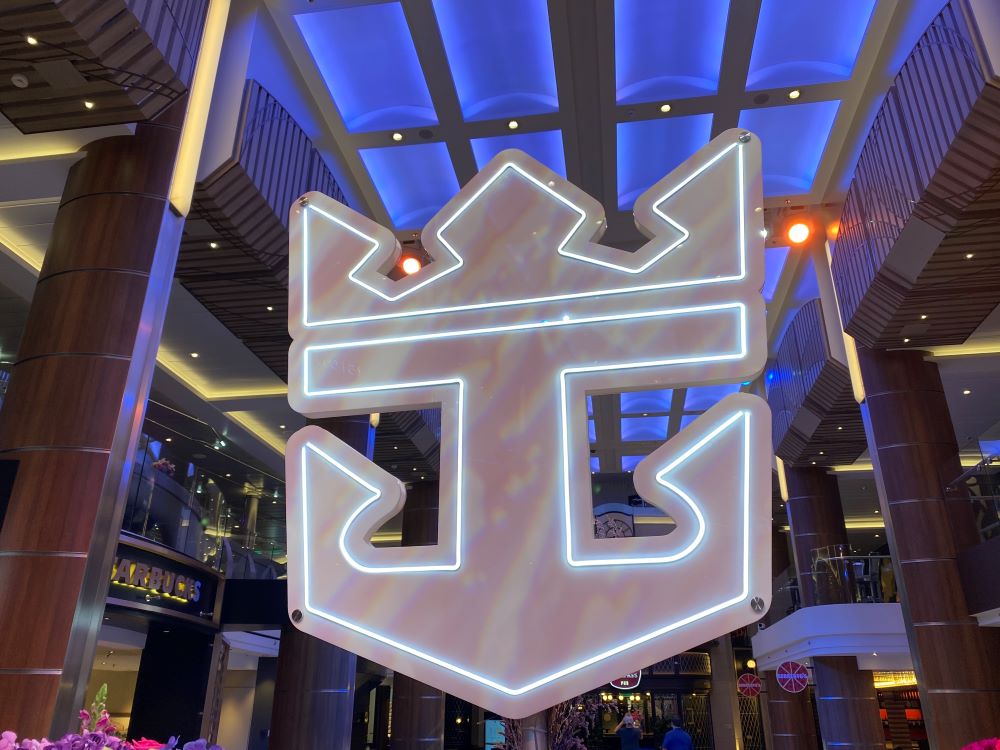
While it sounds like some secret club at a private college, Crown & Anchor is Royal Caribbean’s loyalty rewards program. Anyone can be a member and earn points for taking cruises. The more points you earn, the higher your status on the ship, which leads to more benefits and rewards.
Put simply, if you like to sail with Royal Caribbean, then the program can grant you all sorts of freebies like special gifts, discounts, and even free cruises.
Still, there is much more to know about the ins and outs of the program, including questions that many people have about how it works.
For more details on the Crown & Anchor Society and answers to frequently-asked questions, we have you covered below…
In This Article...
What Is the Crown & Anchor Society?
Crown & Anchor is the name of Royal Caribbean’s loyalty program for its cruise guests. With each cruise taken, passengers earn points with the program. The more points earned, the higher the status level within Crown & Anchor.
Earn high enough status and you can receive a number of freebies, rewards, and benefits. The perks can include everything from special discounts and rates on cruises to invites to member-only functions to free drinks, free cruises, and more.
Why Should I Join the Program? How Do I Sign Up?
Frankly, there is no reason not to sign up for Crown & Anchor. There is no cost to enroll, and you have the ability to earn a number of perks without doing anything extra. After all, if you’re going to be taking a cruise anyway, then you may as well be rewarded for doing so.
If you want to sign up, you actually don’t even have to do anything. New U.S. guests are automatically enrolled after their first cruise with Royal Caribbean. If you have sailed before on Royal Caribbean but aren’t a member, then you can call the company at 1-800-526-9723 (outside the U.S./Canada: 541-285-9723).
As well, you can visit the Loyalty Ambassador on your cruise to sign up. Just ask Guest Services for the location once onboard.
How Do I Earn Points?
It’s extremely simple to earn points toward status. All you have to do is take cruises. Members are awarded one point for every night sailed. So if you sail a seven-night cruise, then you earn seven points. A three-night trip is worth three points.
There is one tweak to know — you earn double points if you sail in suite accommodations. So book a suite on a week-long cruise and you’ll earn 14 points instead of just seven.
In addition, we have seen promotions from Royal Caribbean from time to time that award double points for any sailing as an incentive to book.
Do Points Expire or Does Status Level Fall?
No. There is no mention of points expiring or losing status due to not sailing the cruise line for an extended period. In fact, we personally have points going back nearly a decade from past cruises.
Obviously it can take years to build up enough points to earn the higher status levels. Having points that expire would make this incredibly difficult to do. Thankfully, it’s not something members have to worry about.
What Status Levels Are There in the Crown & Anchor Society?
In total, there are six levels within Crown & Anchor. Each level comes with more benefits. All members start out at Gold level, with the highest rank being the Pinnacle Club.
- Gold (3 Points) : The first level of the Crown & Anchor program, which is awarded after sailing three nights.
- Platinum (30 Points) : Sail 30 nights — or 15 in a suite — and reach Platinum status aboard the ship.
- Emerald (55 Points) : It takes 55 points to reach Emerald status, or nearly two months on the ship in a typical cabin.
- Diamond (80 Points) : After 80 points you reach Diamond status, which is where the benefits really begin to ramp up.
- Diamond Plus (175 Points) : Spend nearly six months on a Royal Caribbean ship and you’ll reach Diamond Plus. Here, you get early access to theaters, personalized gifts, and more.
- Pinnacle Club (700 Points) : The highest level in the Crown & Anchor Society is the Pinnacle Club. It takes “only” about two years of sailing in a balcony cabin to reach this level.
What Are the Crown & Anchor Society Benefits?
No matter what level you reach, there are some benefits awarded to your status. Obviously, the higher your level, the more perks and rewards that you will see.
For instance, members who are Diamond level and above now receive drink vouchers for daily drinks at bars around the ship. Pinnacle Club members receive certificates for free cruises. And Platinum level and above receive robes to use on the ship.
Below is a list of benefits by status level. Keep in mind that benefits may change from time to time.
Note: As of August 24, 2021 Royal Caribbean also offers free drinks for Diamond members and above:
“We’re excited to now offer our Diamond, Diamond Plus and Pinnacle Club members beverage vouchers for drinks up to $13. Each day of the cruise, Diamond members receive four vouchers, Diamond Plus members receive five vouchers, and Pinnacle Club members receive six vouchers. These can be used at any bar, at any time, in the Diamond Lounge during Happy Hour or in our private destinations. Consider it happy hour all day long!”
Do I Get Special Fares for Being a Member?
Yes. One of the perks listed is “Crown & Anchor Exclusive Rates” for cruises. This applies to all members from Gold through Pinnacle Club. This does not mean you’ll get a discount off of every cruise. The terms and conditions says it applies only to “specific ship and sail dates.”
In addition, Platinum level and above can see discounts on balcony and suite cabins as a benefit of being a member.
What if I Reach a New Status During a Cruise?
So say you have 25 points in the Crown & Anchor Society and are booked on a seven-day sailing. At the end of the trip, you’ll have 32 points, putting you in the Platinum category. How does that work regarding your benefits and status? Do you get them mid-trip?
Royal Caribbean is clear that “next tier benefits will be applied on the following sailing after points status has been earned.”
In other words, you only get the benefits of being in a higher status tier on your next sailing.
Do I Earn Points for Booked Cruises?
Have several cruises booked and hope that it bumps up your status level? That’s not the case. With the Crown & Anchor Society, points are earned after the sailing is completed.
“Cruise Points are awarded to the guest whose name is entered into the reservation at the time of booking and completes the sailing.”
So if you have enough trips booked to be in a higher status but have yet to actually sail the days, then you won’t earn points for the trips just yet.
What if I Have a Past Cruise Without Points?
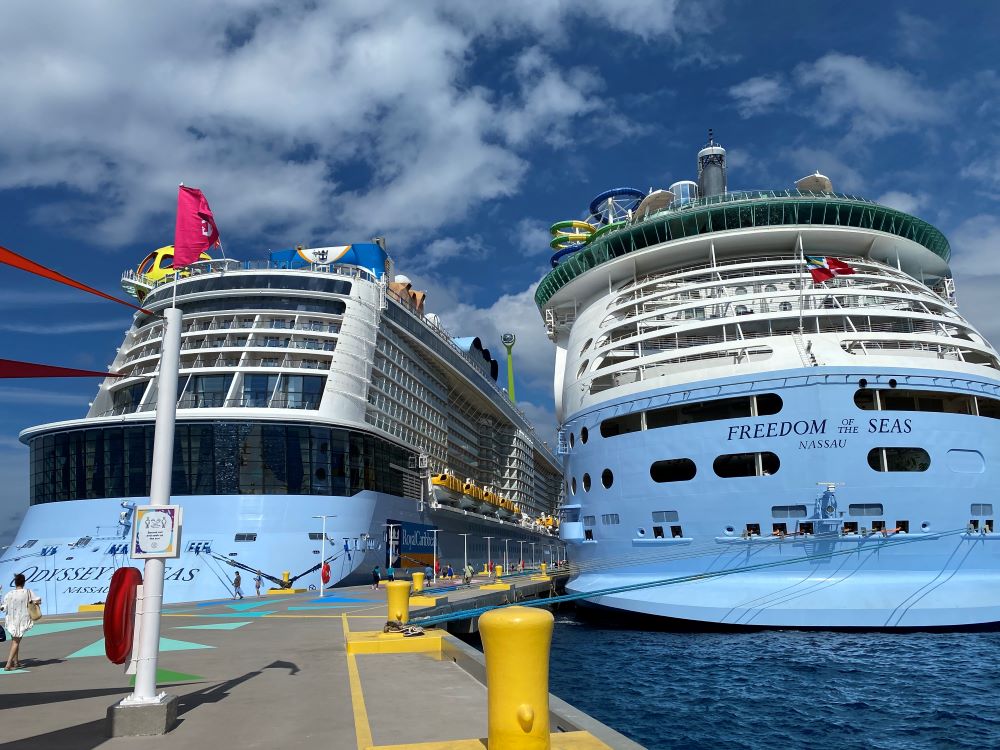
Have you sailed with Royal Caribbean in the past, yet don’t have the points showing in your Crown & Anchor membership? In that case, it’s a good idea to contact the cruise line.
Royal Caribbean’s website said that “requests to add missing cruise points may be submitted up to 12 months after the debarkation date of your sailing.”
Even if you have a past trip that’s beyond one year ago, it certainly doesn’t hurt to contact the cruise line and ask about receiving credit.
How Do I Contact the Crown & Anchor Society?
Have a question about the program? You can contact Royal Caribbean’s loyalty program via the following channels:
- Phone (U.S./Canada): 1-800-526-9723
- Phone (Outside U.S./Canada): 541-285-9723
- Email: [email protected]
Does Status Apply to Other Royal Caribbean Cruise Lines like Celebrity?
Royal Caribbean is a sister line to other cruise lines owned by its parent company, namely Celebrity Cruises.
One nice perk is that your status can extend to the other cruise lines . So your status earned on Royal Caribbean also applies to Celebrity. And the status earned on Celebrity can move over to Royal. You’ll want to call the cruise line for details on how to attain your status.
Note that points earned on Celebrity won’t translate over to Royal Caribbean. So if you have 50 points on Royal Caribbean and sail for a week on a Celebrity cruise, you won’t then have 57 points on Royal Caribbean after the trip.
You can read more about the Crown & Anchor Society here .
Popular: 39 Useful Things to Pack (17 You Wouldn't Think Of)
Read next: park & cruise hotels for every port in america, popular: 107 best cruise tips, secrets, tricks, and freebies, related articles more from author, cococay in cozumel royal caribbean announces new destination in mexico, royal caribbean suspends calls on labadee, royal caribbean gratuities (tips): full guide to cost & how they work, 12 major differences between royal caribbean and carnival cruise line, has royal caribbean canceled calls on labadee, haiti here’s what the cruise line says, worth it complete guide to royal caribbean’s drink package, leave a reply cancel reply.
Save my name, email, and website in this browser for the next time I comment.
Cruise Anxiety? These Facts May Calm Your Biggest Fears
Revealed: the most expensive carnival cruise you can buy (and cheapest, too), ‘be on time’: cruisers show little sympathy for ncl passengers who missed ship, hotels with cruise shuttles for every major port in america, 107 best cruise tips, tricks, secrets, and freebies, 39 useful things to pack for your cruise (including 17 you’d never think of).
- Privacy Policy
- Terms & Conditions
What are you looking for?
Suggested search.
Container vessel “Maersk Kowloon” at anchor on the Great Bitter Lake in the Suez Canal. Photo: Tim, CC BY-NC 4.0 via Flickr.
16. Vessel Anchoring
Author: Dr. James A. Fawcett, USC Sea Grant Maritime Policy Specialist/Extension Director (retired) Media Contact: Leah Shore / [email protected] / (213)-740-1960
An anchor has two common definitions. Its first meaning is defined as “a heavy device that is attached to a boat or ship by a rope or chain which is dropped into a body of water to secure a boat or ship in place.” Yet, it is also defined as, “a person or thing that provides strength and support”[1] While each of these definitions is useful, they tell only a part of the story about the function of an anchor. For a ship’s anchor, it is only part of the system that secures a ship. Let’s start from the beginning below and explore the details about the importance, purpose, components, and use of a ship’s anchor.
Purpose of a Ship’s Anchor
If we think of a ship as a sort of “bridge” that connects either cargo or people from one location to another, it’s clear that the vessel is a temporary floating intermediate link between those two shorelines. After all, only in the case of Wagner’s opera Der fliegende Holländer (the “Flying Dutchman”) is the ship cursed to sail the seas indefinitely. But, at times, reaching a destination does not mean that the vessel is immediately able to enter the port to be moored to a berth. For many reasons, the vessel may be required to use an offshore anchorage, securing itself in one location for a period of time. In busy harbors, “alongside space”–the common nautical term for a spot along the wharf or where a ship can unload–is often at a premium; ships must wait for their turn to embark or discharge cargo and passengers.
While recreational vessels commonly use small anchors deployable by hand over the side of the boat, merchant ships, because of their size, use a different type of anchor and that will be the focus of this discussion. A ship’s anchor system is relatively simple but consists of a number of elements, each of which is a necessary component of the system. At one end is the anchor itself, which is connected by a stout chain. It is both let go and hauled in by an anchor windlass[2]. so that the chain can be stowed on board in a capacious chain locker below decks. It is a simple system yet with critical importance for the safety of the vessel. Let’s consider the parts of this system.
Types of Anchors
By itself, the anchor is actually the simplest part of a ship’s ground tackle :[3] “the anchors, chains, cables, and other equipment used to secure a ship at anchor.” Today, the most commonly used maritime anchor is the “stockless,” “U.S. Navy,” or “Admiralty” anchor, all of which look essentially similar. They are very different from the stocked anchor, so often depicted in literature, pirate movies, and even symbolically on the U.S. Navy and U.S. Coast Guard uniforms.
The stocked anchor consists of a central shank at the end with two upward curved arms in opposing directions, each of which is furnished with a broad forged fluke acting like a shovel to dig into the bottom. Toward the top of the stock is a long bar attached to the shank but at 90o to the direction of the arms and flukes. Thus, when the anchor reaches the ocean floor, the stock forces the anchor to lie in such a manner with one of the two flukes poised to dig into the ocean floor. (See Figure 1)
Instead of this older design, a stockless anchor, as its name implies, needs no stock to be effective. In fact, it is designed to lie flat on the ocean floor. A much simpler design, it has only one moving part, a bearing or bushing, that attaches the shank to the two flukes. When deployed on the bottom, taking a strain on the anchor chain will cause the two flukes to rotate downward and dig into the underlying bottom. Thus, the bearing between the shank and the flukes acts like an axle, permitting the flukes to engage the bottom. The beauty of the system is its simplicity as well as effectiveness because of its low center of gravity: it wants to dig into the ocean bottom. Stockless anchors can be relatively small (160 kg or ~400 lbs.) to more than 50 tons[4] (the size of the common Caterpillar D9 bulldozer) and this is merely a general idea of their mass. (See Figure 2).
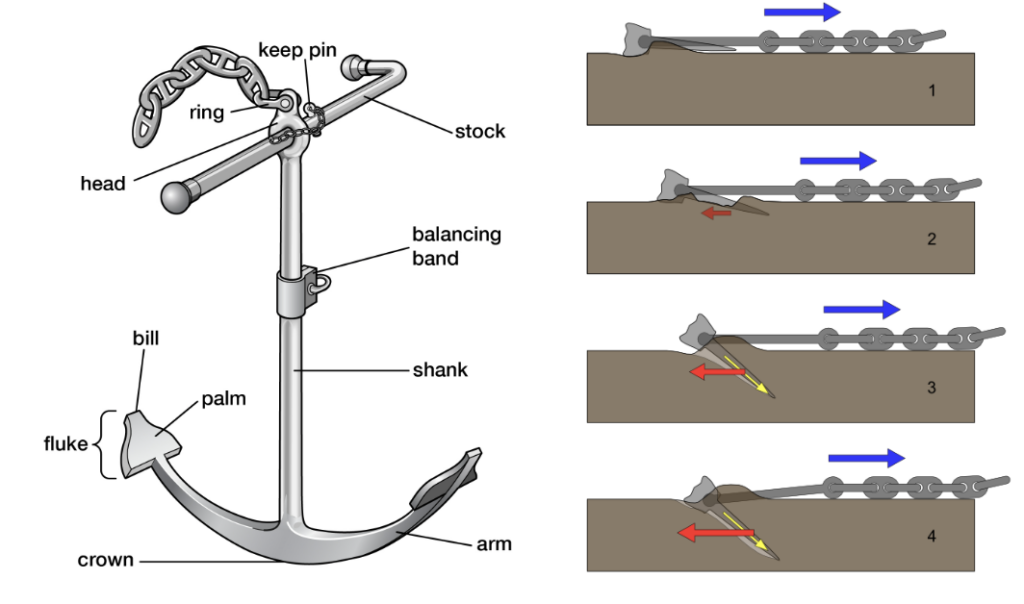
Anchor Chain
Attached to the anchor at one end and to the other end a robust fitting in the ship’s chain locker below decks, the chain is as critical, if not more so, than the anchor itself. If anchors are heavy, the chains that connect them to the ship are equally robust, with single links often weighing hundreds of pounds. An anchor chain used to be measured in “shots” of 15 fathoms (90 feet) joined by a detachable link (painted red) to the next 15-fathom shot. However, merchant ships now often have meters attached to their anchor windlasses, automatically measuring the length of an anchor chain that has been deployed. Generally, the U.S. Navy or merchant ship will carry as much as 1,000 feet of anchor chain or more (per anchor) in its chain locker, depending upon the size of the vessel.[5]
When deployed, it is common to pay out an anchor chain that is 5-7 times the water depth where the vessel is moored. Thus, in 60 feet of water, a ship would deploy 300-420 feet of anchor chain. This length serves two purposes: first, it gives the ship ample room to swing on the chain without placing excess strain on it; second, the weight of the chain and its friction on the ocean floor is the force that actually secures the ship in place , so a large volume of the deployed chain is important.
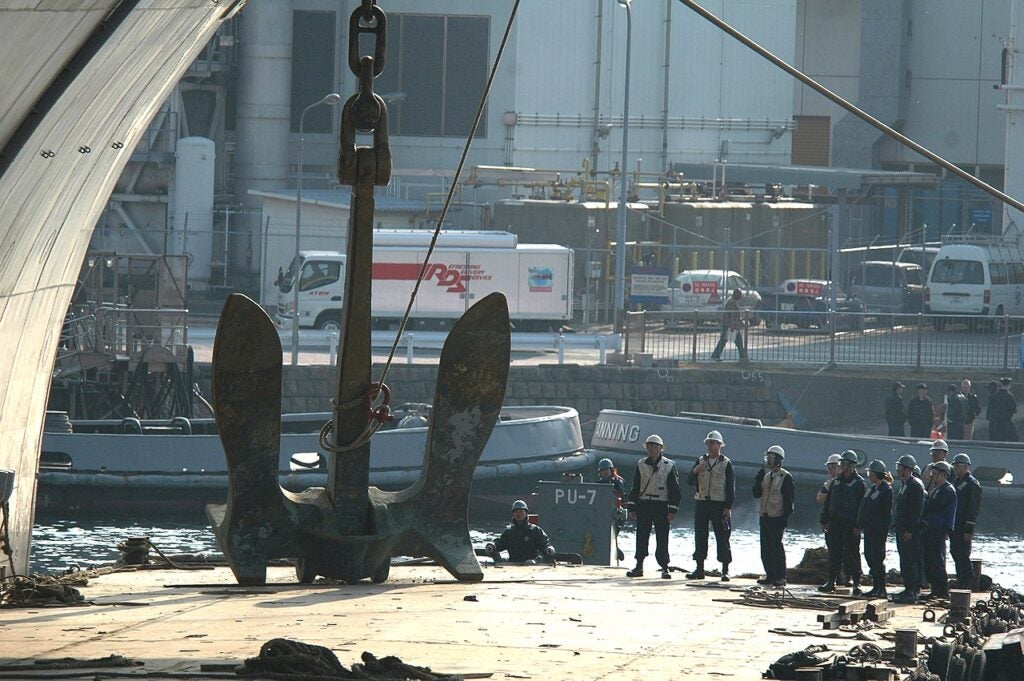
Anchor Windlass
The mass and weight of an anchor and its chain far exceed the capacity of the ship’s crew to manually raise and lower it, so on the foc’sle is a steam, hydraulic, or electric winch that is specifically designed to engage the links of the anchor chain. Equipped with clutches and brakes, the windlass can lower or raise the anchor at any specified rate, including free-running when letting go of the anchor. Upon anchoring, when the appropriate length of chain is discharged, a stopper is installed on the chain preventing further deployment.
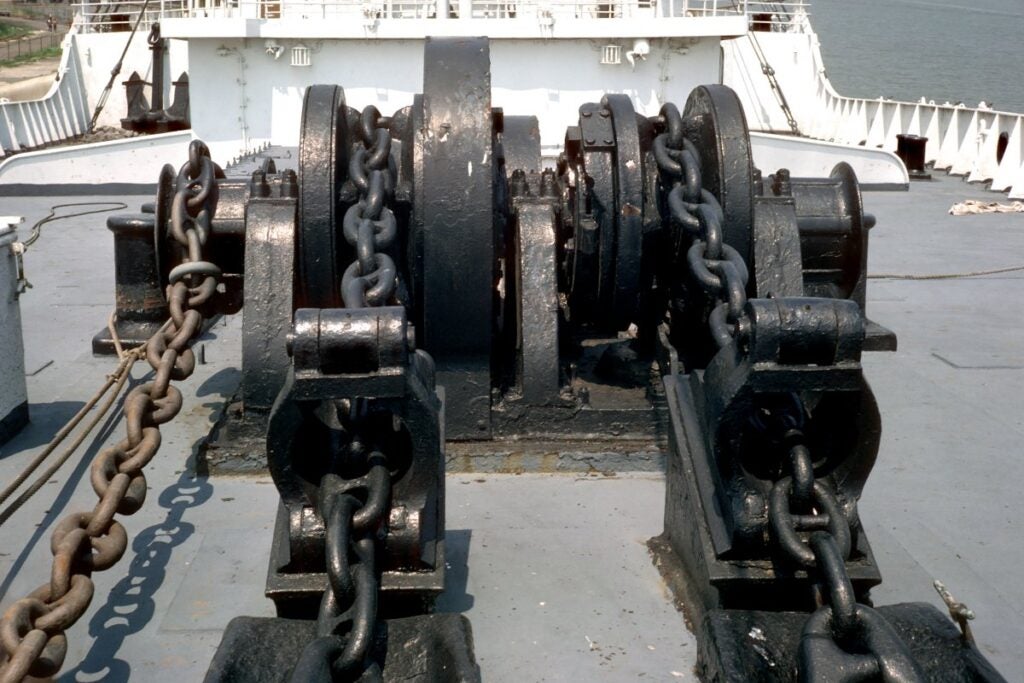
The Storage and Use of Anchors
The hawse pipe, a reinforced steel pipe from the foc’sle passing through the ship’s exterior skin allows the anchor chain to attach to the large anchor, which is stowed on the exterior of the ship when not in use. Upon its exterior is further steel reinforcement, creating a cradle in which the anchor is housed, a storage space that is both convenient and out of the way of the ship’s crew working on deck at the foc’sle. Meanwhile, the anchor chain is stowed below decks in the chain locker. Nevertheless, the chain remains connected to the anchor, permitting rapid deployment in an emergency.
Ships carry anchors on both port and starboard sides of the bow, either of which is capable of holding the ship in the anchorage in most cases. Often these two anchors have different lengths of chain depending upon the conditions encountered on the anchorage. Also, it is not uncommon for vessels to deploy both anchors in inclement weather or in an area with a fast current or high winds. In this case, expert seamanship is required to prevent them from becoming “fouled” or tangled.
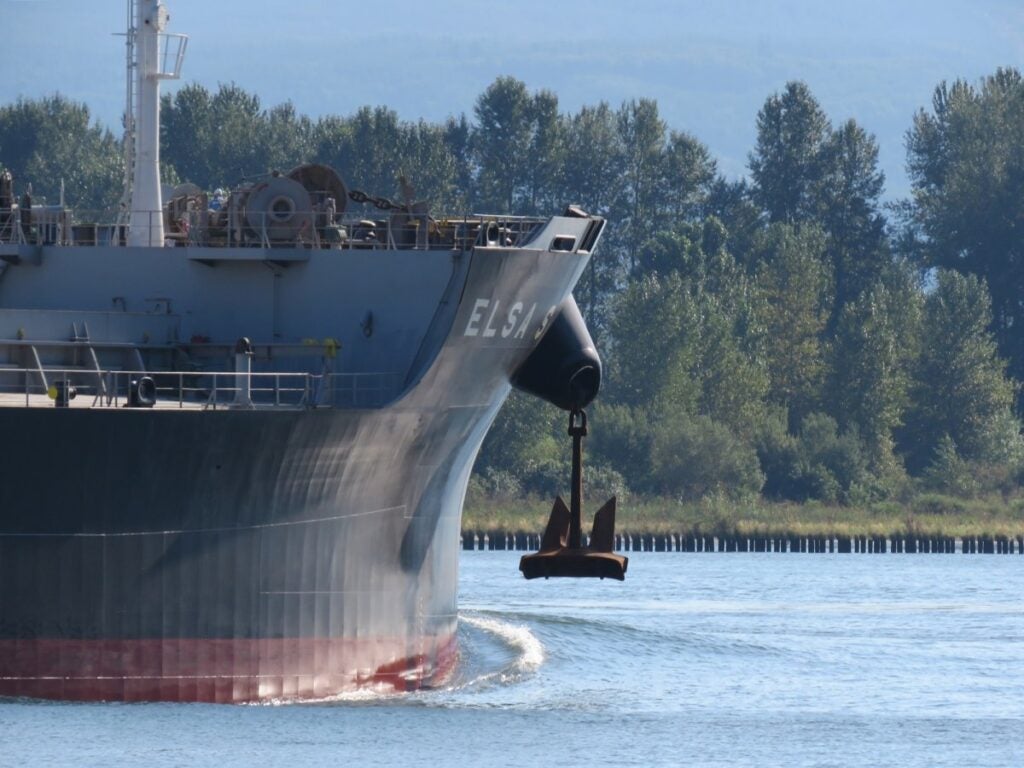
The Process of Anchoring
Safe anchorages are defined on nautical charts and are usually designated by numbers and/or letters. Coming into port, the harbormaster, port pilots, and the marine exchange/vessel traffic service (MX/VTS)[6] will instruct vessels on which designated anchorage is to be used. Each anchorage is identified on the relevant nautical chart with a center point surrounded by a circle known as the “anchor swinging circle”. This circle’s diameter is determined by the length of the vessel and displays the area within which the ship, at anchor, is required to reside. There is no “standard” size anchorage because ships are assigned based on the space that they need in order to avoid colliding with adjacent anchored vessels. At the Ports of Los Angeles and Long Beach, the nautical charts define 20 deepwater anchorages inside the long breakwater and 40 outside the breakwater. Additional anchorages are shown on the chart[7] but as CAPT Kipling Louttit, U.S. Coast Guard (ret.) and a leader of the MX/VTS, cautions, some are of limited depth or are reserved for barges with shallow draft.
In normal situations, we will commonly find a few tankers at anchor waiting for their turns at the liquid bulk terminals to offload crude oil for our local refineries, including an offloading buoy in Santa Monica Bay for the Chevron Refinery. However, in our unusual current situation , anchorages are filled with container ships waiting for vacant berths at one of the 13 container terminals in the two ports, terminals that under normal conditions schedule regular arrivals of these vessels with minimal, if any, wait times.
When all available anchorages are occupied—a common occurrence currently—the MX/VTS must find “parking” for them. One alternative is to assign ships to “drift boxes” outside the breakwater, clear of shipping arrival/departure lanes and restricted areas, and in areas defined by navigation coordinates assigned by the MX/VTS. When even those areas become filled the MX/VTS then assigns the waiting vessels to a standby area north of Catalina Island where they may not anchor but must drift under power to stand clear of other drifting vessels.
At anchor, vessels discontinue power to their propulsion engines and continue to operate their auxiliary power plant, which provides electricity to operate normal ship functions including the ground tackle previously described. Under normal conditions, the ship will swing on its anchor and will respond to currents, moving only within the circumscribed anchorage boundaries defined on the nautical chart. At anchor, services to these vessels must be provided by small service vessels bringing provisions, fuel, and other necessities out to them.
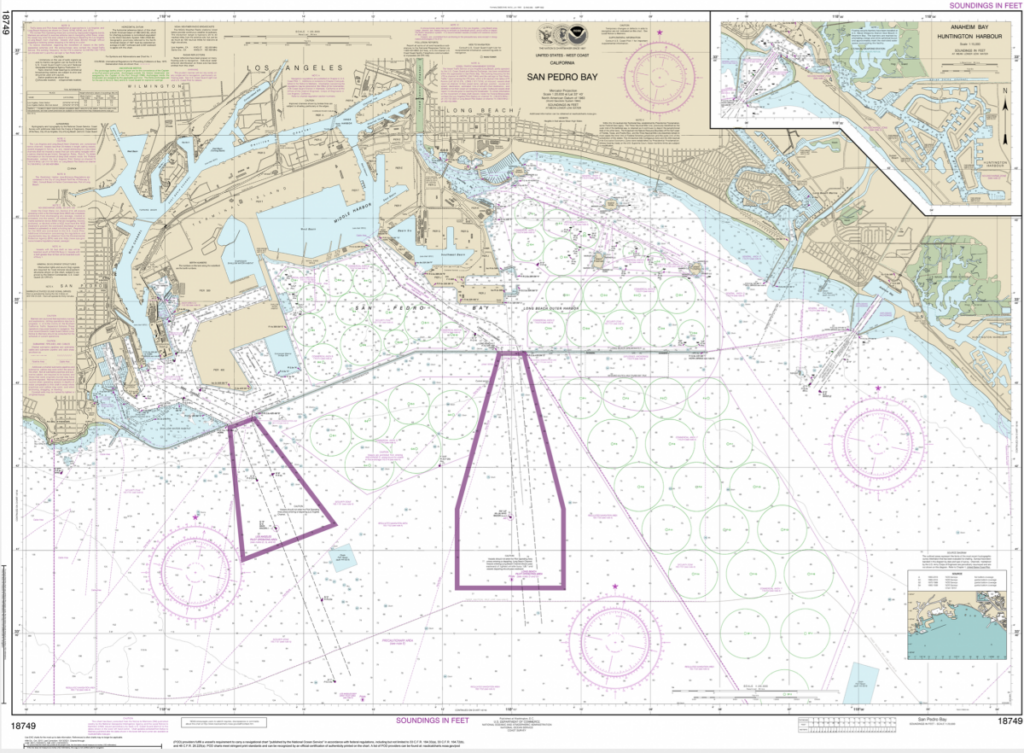
The Dangers of a “Dragging Anchor”
Even a stout anchor deployed with an ample amount of anchor chain may not be able to hold a ship in its assigned anchorage under certain weather conditions, most often when the vessel is buffeted by strong winds. The Intergovernmental Maritime Consultative Organization (now the International Maritime Organization) defines “dragging (of an anchor)” as, “ an anchor moving over the sea bottom involuntarily because it is no longer preventing the movement of the vessel. ”[8] When winds are sufficiently strong, even thousands of pounds of anchor and chain may not prevent the vessel from being pulled away from its anchorage, a condition known as “dragging anchor.” The danger of one of these incidents is that the vessel may collide with an adjacent ship causing damage to one or both. In heavy winds, the ship’s officers are responsible for either visually sighting its position every hour or maintaining a watch on electronic navigation equipment to assess its location within its assigned area.
The ships most vulnerable to “dragging anchor” are those with what mariners refer to as having a large “sail area.” These are vessels with an ample vertical component; in other words, “slab-sided” vessels such as heavily loaded container ships, roll-on, roll-off vehicle carriers, or large passenger vessels where the vessel presents what amounts to a flat “sail” to the wind. Low-lying vessels such as bulk carriers or tankships are less vulnerable because they sit much closer to the water and have low freeboard.
Any vessel that is anchored, irrespective of its configuration, is responsible to its owners, crew, cargo owners, and the public to maintain a vigilant watch when at anchor and in conditions of significant wind. Ultimately, the IMO imposes standards for ship masters to ensure that a vigilant watch is kept when a vessel is at anchor.[9] (See: IMO Circular no. STCW.7/Circ.14 – “Guidance for Masters on Keeping a Safe Anchor Watch.”)
As we now see, the anchor is one in a system of a myriad of components that safely and properly secure vessels; it is not just a simple hook as it appears from afar. The role of the anchor is a critical component to the working of ports such as the POLA and POLB and provides safety for the vessels even among the most uncommon or dangerous sets of conditions.
[1] Merriam-Webster. (2003). Merriam-Webster Collegiate Dictionary 11 th Ed.
[2] A windlass is a mechanical apparatus for lifting heavyweights. On ships, is it a deck-mounted horizontal drum powered by an attached winch, which is, in turn, powered by steam or, more commonly, by a hydraulic motor. The windlass contains a large wheel, a “chain gypsy,” with indentations that match the size and shape of the anchor chain providing a secure purchase for the chain as it is deployed or recovered. It is located on the foc’sle, the forwardmost upper deck of a ship.
[4] Jinbo Marine. JIS Stockless Anchor Specifications. http://www.chainanchor.com/products/jis-stockless-anchor/ . 17 Oct 2021.
[5] The Boatswain’s Mates of USS Nimitz (CVN 68) are making history, as they become the first team of Sailors to remove the anchor and chain of an aircraft carrier rather than contracting the work out to civilians. Fifty-seven links, each weighing 350-pounds, make up just one 90-foot shot of chain that weighs a total of 20,500 pounds. Twelve shots of chain collectively hold a 60,000-pound anchor. Considering the average person weighs less than 200 pounds, it’s safe to say the task of removing Nimitz’ anchors and chain is no small feat. https://allhands.navy.mil/Stories/Display-Story/Article/1839931/pulling-their-weight-anchor-and-chain/ .
[6] Personal communication, CAPT J. Kipling Louttit, Executive Director, Marine Exchange and Vessel Traffic Service of Southern California, 19 Oct 2021.
[7] NOAA. Navigation Chart 18749.
[8] IMCO. Resolution A.3so(x): adopted on 14 November 1977. STANDARD MARINE NAVIGATIONAL VOCABULARY. https://wwwcdn.imo.org/localresources/en/KnowledgeCentre/IndexofIMOResolutions/AssemblyDocuments/A.380(10).pdf
[9] IMO. Seafarers’ Training, Certification and Watch Keeping (STCW) Code Chapter VIII Section A-VIII/2. https://www.ukpandi.com/news-and-resources/bulletins/2007/517—0307—keeping-a-safe-anchor-watch—worldwide/

Everything You Need to Know About Tender Ports and Tender Boats on a Cruise
By: Author Carrie Ann Karstunen
Posted on Published: May 28, 2020 - Last updated: June 29, 2022

On a cruise, a tender port is one where the ship doesn’t dock at a pier. Instead, the cruise ship drops anchor offshore and passengers are ferried to land on smaller boats, called “tenders”.
Cruise lines usually specify which ports of call on each itinerary will be tender ports, and passengers have the opportunity to obtain tender tickets if they wish to go ashore.
When you’re planning a cruise, you might notice that some port descriptions will say, “ this is a tender port .” Or you might see that tender boats or “tenders” are mentioned.
Confused? Don’t worry. I’ll explain everything you need to know about tender boats and tender ports on a cruise.
Why do cruise lines have tender ports?
Some cruise ports have shallow harbors that don’t allow for today’s massive cruise ships to pull right up to a pier. Other ports only have a limited amount of berths at their piers, so any extra ships that visit just don’t have a spot available.
Or, as in the case of some cruise line private islands , they haven’t built a pier yet!
Why is it called a tender port?
Usually when we think of the word tender , it’s in the context of something being gentle and caring (a tender kiss), or soft (a tender cut of meat). But tender ports have nothing to do with being gentle or soft!
The word tender has been used nautically since at least the late seventeenth century , meaning a “small boat used to attend larger ones”. It actually comes from the Middle English verb tenden , meaning “to attend to”.
On a cruise, “tender” can be used as a noun (“We’re going to take a tender to the island”), a verb (“We’re going to tender to the island”), or an adjective (“We’re going to take the tender boat to the island”).
In the most common usage with today’s cruise lingo , “tender port” is used as an adjective to describe a port that cruisers need to access via a small boat.
You might say something like, “Yesterday we had a tender port at Princess Cays , but thankfully this morning we can pull right up to the dock at Nassau “.
How do you know if a port will be a tender port?
Cruise lines will note in the itinerary if a port requires tenders. You’ll see this in your cruise planner on the cruise line’s website, or ask your travel agent if you’re not sure.
During your cruise, you’ll also get a reminder in your daily newsletter before visiting a tender port.
However, remember that cruise ports of call are always subject to change at any time. You might have a scheduled tender port changed to a docked port (or vice-versa).
Unpredictable weather can alter a cruise’s itinerary, causing the Captain to change ports or skip the port altogether.
What boats do cruises use to tender passengers?
Tenders on your cruise generally will be one of three types of boat:
- Lifeboats from the cruise ship
- Privately-owned boats from the port
- Tenders owned by the cruise line kept at the port
Maximum occupancy on most tender boats is generally between 100 and 150 passengers .
So on a cruise ship that holds thousands of guests, tender operations can take quite some time, even if they use several boats!
How do you get a tender ticket?
Years ago when I was researching my very first cruise, I noticed there were a few tender ports on our itinerary. Wanting to make sure that all of our major expenses were pre-paid before we left for vacation, I started searching for instructions on how to pay for our tender tickets.
Silly me, tender tickets are free! But you do need to get them on board for each port as soon as you can. Tickets are issued on a first-come-first-served basis.
On most major cruise lines, you’ll need to get one tender ticket for your group or each member of your party for each tender port.
Read your daily newsletter carefully each day! It will list times and locations to pick up your tickets. Tickets often will be available the afternoon before you’ll be tendering, as well as the morning of.
Many cruise lines will set up an area (often in the theater) where a crew member hands out tender tickets to passengers during specific times. Be sure to note the times listed in the newsletter. You won’t be able to pick up a ticket at these locations outside of those times.
Tip: Pick up your tender tickets the day before you visit the tender port if you want a popular tender time. Early tickets go fast!
Are there any restrictions for tendering?
Tender boats don’t have age or weight restrictions for cruise passengers. However, if you have mobility challenges , you might not be able to board the tender.
Some cruise lines require that guests be able to step on and off of tender boats with only minimal assistance. Most tenders have at least a couple of steps you’ll need to use to get on and off of the boat.
Wheelchair-accessible cruise tenders with roll-on capability aren’t very common. Often, passengers who use a wheelchair and are unable to walk won’t be allowed to board a tender.
Some cruise lines specify that their crew will only carry a passenger on board in a wheelchair if the total weight is less than 100 pounds (45.5 kg). That rules out most people (except for some children) because they include the weight of the mobility device in the total.
Tip: For wheelchair users, reach out to your cruise line before you sail. Ask what their specific rules are regarding boarding a tender in a wheelchair . It’s also a good idea to speak with a customer service manager on board at least a few days before arriving in port. A timely heads-up might make them more willing to help you if they’re able.
Can any cruise passengers get priority tendering?
Passengers who’ve booked shore excursions directly through the cruise line will have priority tendering to make sure the tour groups meet their guides on time.
Some cruise lines also offer priority tendering to passengers who are at a high level in their loyalty program. Some also extend this privilege to guests staying in a full suite.
If you’re sailing on a Carnival cruise, you can pay a little extra for this perk! They allow passengers who purchase their “ Faster to the Fun ” pass to have priority tendering as well.
Priority access is only available for ship-to-shore tendering. When returning to the ship, all passengers wait in the same line.
Tip: Booked an independent shore excursion at a tender port? It’s a good idea to get the earliest tender ticket you can. Tender operations can run behind schedule, and your tour operator won’t wait very long if you’re late to the meeting point. It’s better to have some time to kill on land than to miss your excursion entirely!
Do you have to pick up a tender ticket to return to the ship?
You’ll only need a tender ticket to travel from the ship to shore. On the way back, you won’t need a ticket to return to the ship. However, you’ll need to wait in line, and those lines can be long at peak times!
Plan to return with plenty of time to avoid missing the last tender. Final tender times are published in the daily newsletter, and are also on signs as you’re leaving the cruise ship.
Tip: You might need to stand in a long line in full sun while waiting to board your tender. Reapply your sunscreen, and carry a hat and a lightweight layer to avoid a late-day sunburn. Some cruise lines will offer water while you wait, but don’t rely on that at every port.
What is open tender on a cruise?
If you missed getting a tender ticket or you overslept and missed your tender time, you’ll still have a chance to get to shore. (If you miss your tender time I’d still recommend asking if you can board with another group, but there are no guarantees.)
After all the scheduled tender groups are called, the tendering process will change to “ Open Tender “. From this time on, passengers without a tender ticket will be allowed to get off the ship.
Often, a specific time for Open Tender is posted, but this schedule can be pushed back if tendering takes longer than expected.
If you decide to wait for Open Tender, just know that you might have to wait for the remaining passengers with scheduled tender tickets to board their boats.
Will you get seasick on a tender boat?
Modern cruise ships, with their vast size and high-tech stabilizers, usually don’t cause passengers to feel much of the sea’s motion—except in stormy weather.
But small tender boats don’t have those things going for them, so they definitely can rock on the waves!
Some ship’s tenders are pontoon-style, which are known for their stability. But if the conditions are choppy, you’re going to feel it!
If you have a tendency to seasickness or motion sickness, be sure to take an OTC remedy (lots of cruisers swear by Bonine ) at least an hour before boarding the tender boat.
Or see your doctor before your cruise to find out if you might need a scopolamine patch or other prescription meds.
Most cruise tender rides last only about ten to fifteen minutes, so at least it won’t be a long, rough journey!
Read more: How to Avoid Getting Seasick on a Cruise
Why are tender ports skipped more often than docked ports?
If it’s stormy or the seas are rough, your Captain may choose to change ports or skip a tender port completely. Transferring thousands of passengers in and out of smaller boats in bad weather just isn’t a risk that the cruise lines want to take!
For passenger safety, the Captain is more likely to cancel a stop at a tender port compared to a docked port if the weather isn’t cooperating. If the weather is really bad, docked ports can also be canceled. It’s not only tender ports that can be nixed!
Weather conditions can change rapidly at sea. When you choose a cruise itinerary with tender ports, there’s a higher risk that your stop will be canceled or changed to another location.
Have a question that I haven’t answered about tender ports of call or tender boats on a cruise? Ask me in the comments below!
Liked this post? Pin it for later!

- Recent Posts
- Azamara Room Service – Everything You Need to Know - March 19, 2024
- Carnival Corporation Unveils New Solar Park at Amber Cove - March 8, 2024
- Royal Caribbean Anthem of the Seas Cruise Compass – 7 Days Bahamas + Perfect Day 2024 - March 7, 2024
Related posts:

Monday 1st of April 2024
how deep must a channel be for 100 passenger tender boat be to go thru
Carrie Ann Karstunen
Saturday 6th of April 2024
Hi Al, I can't give you an exact number, mainly because tenders aren't always the same type of craft. However, they're often lifeboats - which usually don't have a very deep draft.
Friday 25th of August 2023
I've been all over the internet and can't find the answer. Perhaps it's glaringly obvious but...how do you know what tender to take back when returning to the ship?
Saturday 26th of August 2023
Hi Kevin, you just return to the spot where the tender from the ship dropped you off, and get in line for the next boat to go back to the ship. The cruise line will have signs and crew members there, and there's often a sizable line of passengers waiting, so you can't miss it! Hope this helps, and happy cruising!
Lynette Smith
Saturday 10th of September 2022
Do you know how high the tender steps are to get down and up. My husband has a hard time with steps do to his knees
Hi Lynette, thanks for the question. Tender boats on cruise ships can really vary. Even at the same port, you might be faced with a different type of boat at different times of day! I wish I could give you a solid answer to your question, but with variations from boat to boat I can only give you a general answer (I also don't know the degree of your husband's knee issues).
In general, to get on and off of most cruise ship tender boats, you'll have a short step or two up, then a few steps down. The steps going down into the tender (and back out again) are generally a bit steeper. It's usually not more than 2-3 stairs going in and out.
If he's fine with walking up or down a few (steep-ish) steps in potentially rocky wave conditions (with handrails and a crewmember lending a hand from the gangway to the landing), I'm guessing he'll be fine.
The one issue on some tenders that could pose an issue is if the lower level of the boat is full and you have to head to the top deck. Some tenders have a full flight of steep metal stairs (with railings) to access the top level.
My advice? If the boat looks full, let the crew know he can't climb the steps to the top deck before you board the tender. Best case scenario is that they ask for volunteers to move upstairs to make room on the lower level. Worst case is you'll need to wait to be the first guests on the next tender. Hope this helps!
Monday 5th of September 2022
Are there port fees at tender ports? If the ship manages to drop anchor but then is unable to run tenders due (for example) to bad visibility, are the port fees refunded?
Hi Dave, thanks for the question! Yes, at tender ports (just like docked ports) port taxes and fees are assessed. You'll have pre-paid these fees by the time final payment is due for your sailing. If any port stop is canceled, the cruise line will refund you the taxes and fees for that specific stop.
If (like in the scenario you asked about) your ship drops anchor but no tenders go out, guests will still be refunded for those fees. But usually, the captain would make the call for weather-related reasons well before approaching the port to drop anchor.
When foul weather causes the captain to cancel the original port and head to a different one, guests are responsible for taxes and port fees at the new port. So you might find yourself paying a little more at the new port, or a little less. Or you might just have an extra sea day if a replacement port isn't practical!
Wednesday 17th of August 2022
I had a stroke about a year ago, and am unsteady walking. Will I be able to board a tender?
Friday 19th of August 2022
Hi Rick, when you're boarding a tender, there's always a crew member or two there offering a hand to help steady you as you're transitioning from the gangway to the smaller boat. You'll often have to step up on a small portable stair before you step onto the tender, but you can mention that you need a hand on the steps as well so you don't lose your balance.
If the water is choppy during tendering, it can be a bit challenging to make the transition to and from the tender boat, even for those of us who are usually pretty steady on our feet. Some tender boats also have a second level, and I've had to go up some pretty steep stairs to find a seat if the first level is full!
I'd advise chatting with Guest Services at least the day before your tender port if the weather looks iffy or if you're worried about getting on and off, climbing stairs, etc. I've been on hundreds of tenders and they're all a bit different. Crowds and weather can also make a big difference in your tender experience, so asking ahead could really help you decide if the assistance that the crew can offer will work with your level of mobility. Hope this helps!

How long does it take to disembark a cruise ship?
MSN has partnered with The Points Guy for our coverage of credit card products. MSN and The Points Guy may receive a commission from card issuers.
The procedures for getting off a cruise ship, as well as cruise ship disembarkation times, can be confusing to first-time cruisers. How long does it take to disembark a ship, and can you just walk straight onto the pier? Perhaps you’re wondering how quickly you’ll be able to go ashore during a port call so you can soak up every second of sunshine. Or, maybe you’re just trying to figure out what time to book your flight home when your cruise ends.
Either way, I’m here to walk you through the logistics and tell you all you need to know about cruise ship disembarkation.
For more cruise news, guides and tips, sign up for TPG’s cruise newsletter .
How long does cruise disembarkation take?
The length of disembarkation varies, based on several factors, but typically the process takes a few hours to get everyone ashore. The larger the ship, the longer it takes. The timing also depends on whether we’re talking about disembarkation in a port of call or disembarkation at the end of a voyage.
In both cases, an officer from the bridge will make an announcement over the ship’s public address system to let passengers know when they can begin leaving.
On a port-visit day, there’s often no set order for disembarking, meaning that it can be a free-for-all. In those cases, I tend to wait an hour or so to let things calm down before proceeding to the gangway. Not everyone gets off the ship at the same time (or at all), so once the initial rush has passed, it doesn’t take long to swipe your cruise card and head ashore.
On some ships, port-day disembarkation is more structured. On larger vessels, passengers might have to report ahead of time to pick up a color-coded ticket that tells them when they can exit. Cruisers who have booked shore excursions through the ship also get priority.
It’s worth noting that disembarkation wait times are often longer when tendering is necessary, as tender boats are limited in the number of passengers they can transport from ship to shore at one time.
The specific length of disembarkation depends largely on how long the vessel is due to be in port. It begins when the ship is cleared by local authorities, usually about an hour or so after it docks. The gangway remains open throughout the day; passengers can disembark on a rolling basis, at their leisure. Cruisers don’t have to be back on the ship until “all aboard,” which is usually about 30 minutes prior to the ship’s scheduled departure time.
Disembarkation at the conclusion of a sailing is almost always more organized, though it can feel chaotic. Passengers carrying their own luggage ashore are allowed to leave as early as they wish, once the ship is cleared to begin the disembarkation process.
Anyone who has their bags offloaded by the ship’s porters will be called to leave the vessel according to their designated luggage tag color or number; the tags are usually distributed a couple of days before the end of the voyage. In those cases, passengers can disembark any time after their color or number is called but not before. From start to finish, the process usually takes about two to three hours, depending on the size of the ship.
Related: How to disembark from your cruise ship before everyone else
Is there a set cruise ship disembarkation time?
Every ship has scheduled a time that it’s due to be in each port it visits. Anything from weather to mechanical issues can affect the actual arrival time. Assuming a ship remains punctual, the time at which passengers can disembark depends on how long it takes for local authorities to clear the vessel.
Most cruise ships are cleared for passengers to debark between 7 and 9 a.m., depending on their arrival time. If a ship arrives later — whether a late arrival is scheduled ahead of time or due to a delay — a general rule of thumb is that it will be cleared about an hour after it docks or anchors, assuming there are no regulatory snags. This tends to apply on both port days and final disembarkation days.
If it’s a port day and you’ve booked a ship-sponsored shore excursion, your meeting time and place will be marked on your ticket. Sometimes you’ll meet as a group in a designated public area on board and disembark together shortly thereafter; other times, you’ll be asked to disembark on your own at a given time and meet your group on the pier.
On voyage-conclusion days, also called turnaround days, passengers are usually asked to vacate their cabins between 8 and 8:30 a.m. so stewards can begin cleaning them for the next round of cruisers. Everyone from the cruise that’s ending must be off the ship between 9 and 10 a.m. in most cases.
Note: Times listed are approximate and will vary by sailing and disembarkation location.
What else should I know about cruise disembarkation?
Here are a few key pieces of advice to help you avoid mistakes when disembarking a cruise ship.
Keep your keycard with you. You will need to scan it any time you exit the ship (and also when you return).
Book a later flight. If you’re flying home after your sailing, book a flight that gives you a buffer so you’re not rushed in the event disembarkation is delayed. Although I have known people who disembarked their ships at 7 a.m. for a 9 a.m. international flight, I highly discourage risking it. I recommend nothing earlier than 11 a.m. for most sailings — later if you’re flying internationally. Another option is to extend your trip by a day or two in your disembarkation port city before flying back.
Score priority disembarkation. If being the first off your ship is important to you, there are several ways to ensure you won’t have to wait around for too long. You can carry your own bags off the ship at the end of your voyage, work your way up to elite status in your cruise line’s loyalty program , pay for an add-on package (such as Carnival’s Faster to the Fun or Norwegian ‘s Priority Access) that gives you the privilege, or purchase a ship-sponsored shore excursion with an early departure time. (The last one is particularly helpful in ports where tendering is required.)
Have more cruise questions? TPG has answers:
- More banned items: What not to pack for a cruise
- Man overboard: Why do people fall off cruise ships?
- What is baked Alaska, and why is it paraded around cruise ships?
- What are the largest cruise ships in the world?
- What is a gentleman host on a cruise?
- What is the Jones Act and how does it affect cruise ships?
- What is a lido deck on a cruise ship?
- What’s a cruise cabin guarantee and will it save you money?
- What’s the difference between a cruise concierge and a butler?
SPONSORED: With states reopening, enjoying a meal from a restaurant no longer just means curbside pickup.
And when you do spend on dining, you should use a credit card that will maximize your rewards and potentially even score special discounts. Thanks to temporary card bonuses and changes due to coronavirus, you may even be able to score a meal at your favorite restaurant for free.
These are the best credit cards for dining out, taking out, and ordering in to maximize every meal purchase.
Editorial Disclaimer: Opinions expressed here are the author’s alone, not those of any bank, credit card issuer, airlines or hotel chain, and have not been reviewed, approved or otherwise endorsed by any of these entities.
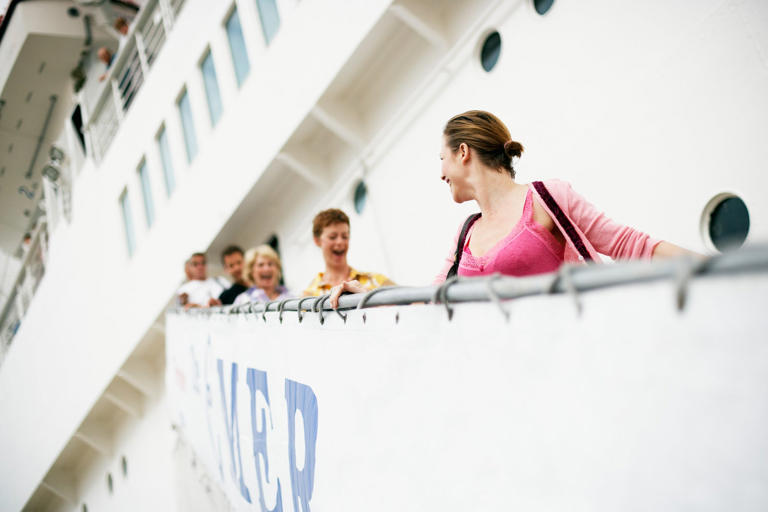

Amazing World Cruises
A World of Endless Travel Possibilities.
- Glamorous Gustavia 2024 Seven Seas Navigator December 13-23, 2024
- Colorful Caribbean Shores Seven Seas Grandeur March 5-19, 2025
- Play My Cruise
- Cruise Preferences Tell us about your cruise preferences and we’ll recommend the perfect voyage for you.
- Africa Cruises
- Alaska Cruises
- Antarctica Cruises
- Arabian Gulf Cruises
- Asia Pacific Cruises
- Australia Cruises
- Bahamas Cruises
- Canada Cruises
- Caribbean Cruises
- Central America Cruises
- Eastern Europe Cruises
- Galapagos Cruises
- Hawaii Cruises
- Japan Cruises
- Mediterranean Cruises
- Mexican Riviera Cruises
- Northern Europe Cruises
- Panama Canal Cruises
- Repositioning Cruises
- South Pacific Cruises
- Transatlantic Cruises
- World Cruises
- Meet Our Agents
- 2024 World Cruises
- 2025 World Cruises
- 2025 Cunard Queen Anne World Cruise
- 2026 World Cruises
- Travel Blog
The Anatomy of a Cruise Ship Anchor Chain

Book Your Next Amazing Cruise with Travel Leader, Jeffrey Cleary
While it may seem like a relatively simple piece of equipment, a cruise ship’s anchor is a marvel of modern engineering. When you consider the incredible size and weight of a modern-day cruise ship, you begin to realize what an incredibly difficult task is to ensure they are secured in place while they are in the harbor.
Today, we will take an in-depth look at cruise ship anchor chains. Not only will we break down how they work, but we also explore what they are made from, the various components of the chain, and the incredible engineering that goes into ensuring that they can hold a cruise ship in place.
So, if you are ready to learn everything you need to know about a cruise ship anchor chain, let’s get started!
What Is a Cruise Ship Anchor Chain?
While it may seem pretty self-explanatory, a cruise ship anchor chain plays a complex and incredibly important role in ensuring the overall safety of a cruise ship voyage. These massive chains need to withstand the incredible forces exerted on the cruise ship’s anchor when the cruise ship is in the harbor.
To withstand the immense pressure generated by holding a heavy cruise ship in place against tides, waves, and ocean currents, the anchor chain and cables need to be immensely strong, and incredibly flexible. The individual chain links look just like any other type of chain, but they are on a massive scale.

Each link in the chain is made from high-grade steel with incredible tensile strength. While the chain size will vary depending on the size and weight of the cruise ship, they are all incredibly large and heavy.
Read Also: What is the Draft of a Ship?
In some cases, the waters the cruise ship traverses can also be a factor when determining how large the anchor chain needs to be. For example, large ships that traverse deep waters with strong currents need a much larger anchor and anchor chain than small boats on shallow water that stay close to the coastline.
What Is the Anatomy of a Cruise Ship Anchor?
The traditional anchor chains of a cruise ship may seem like they have a relatively simple design, but they are made up of many different parts, which all have to be made to an extremely high standard.
Here are the main components of a cruise ship anchor chain:
The Chain Links
The most prominent component of a cruise ship anchor chain is the series of interconnected links that make up the bulk of the chain. These links are massive in scale, and they need to be constructed of high-tensile, high-strength steel.
The chain design allows for the perfect combination of strength and flexibility, which is necessary when holding a heavy anchor in place against the tremendous forces of a large body of water and heavy vessels.

Each link in the chain will look like an elongated oval, or it can be designed to have more of a “D” shape. These two shapes allow the chains to be connected in a way that maintains their strength but can still move smoothly.
All links within the chain are also designed to be the exact same size. They also need to be precisely spaced so that each link has the same freedom to move as the next. If this was not the case, dropping and retrieving the anchor would be much rougher. The chain could also become damaged over time.
The Joining Mechanism
The individual links within the chain are joined together using a detachable mechanism. Basically, this mechanism consists of a connector and an anchor shackle.
Not only does this make it possible to put the chain together, it also makes it possible to remove damaged or corroded links within the chain without completely replacing the entire anchor chain.
Depth Markings
Most cruise ship anchor chains also feature depth markings at evenly spaced-out intervals. These allow crew members to easily determine how much of the chain has been released by the anchor windlass. Typically, these markings are made with bright, scratch-resistant paint; however, they can be made by stamping impressions into the metal.

To learn more about the anchor of a cruise ship, rather than just the chain that connects it to the ship, we recommend reading about how big a cruise ship anchor is . This straightforward guide explains how big these enormous anchors need to be and provides other helpful information on how modern anchors work.
How Much Do Cruise Ship Anchor Chains Weigh?
As mentioned, the anchor weight, chain length, and size of a cruise ship’s chain can vary depending on the weight and dimensions of the cruise ship itself.
That said, the general range for a single link of the anchor’s chain tends to be between 11 lbs (5 kg) to about 290 lbs (130 kg). The longer the chain length, the more it weighs.
Worth Reading: How Much Does a Cruise Ship Weigh?
With individual links weighing so much, the anchor chain’s overall weight can easily be measured in tons. When you think about the weight of a cruise ship and the immense forces sea and ocean water can exert, it only makes sense that the chains need to be incredibly heavy.
What Is a Cruise Ship Anchor Chain Made Of?
Cruise ship anchor chains need to be made from high-strength steel. Steel is the only suitable choice, as it offers the durability and strength required to withstand such immense forces. The high-strength steel alloys used to make these enormous anchor chains are also resistant to corrosion caused by lengthy exposure to saltwater.

To enhance the corrosion resistance of the anchor chain, most are given additional coatings and surface treatments to enhance the anchor chain’s corrosion resistance. Galvanization and various types of specialized coatings are used for the individual links of the anchor chain.
These surface treatments can not only delay corrosion, they can also help prevent scratching as the chain links rub against each other and even the hull.
Why Do Cruise Ship Anchor Chains Need to Be Flexible?
Not only do cruise ship anchor chains need to be heavy, strong, and incredibly durable, they need to be flexible. Flexibility is essential for the following reasons:
The Ability to Move with Currents, Tidal Changes, and Swell
Even when a cruise ship is anchored in a harbor, the anchor chain must be capable of adjusting to fluctuations in water conditions. The tide can change the depth of the water rapidly, so if the chain is not flexible, it would be under much more tension.

This could damage the anchor and the ship itself. By remaining flexible, the anchor chain can also absorb sudden forces caused by large waves and storms.
Noise and Vibration Reduction
A flexible anchor chain creates far less noise when the ship moves. For passengers to have a more comfortable experience while they are on board the ship, flexible anchor chains reduce creaks and other noises that could be disturbing.
Flexibility Makes it Easier to Drop and Retrieve the Anchor
The chain’s flexibility is essential when it comes to dropping and retrieving the anchor. When the anchor is dropped or lifted, the chain flows through a chute on the side of the ship’s bow.

Flexibility Allows the Anchor to Adjust to Differing Seabed Depths and Compositions
As you may know, a seabed in one area can differ in composition from one area to the next. While some are sandy and easy for an anchor to dig into, others are uneven and rocky. By having a strong but flexible anchor chain, the anchor can have a much more stable hold.
Frequently Asked Questions (FAQs)
What is the biggest cruise ship anchor chain in the world.
Currently, the world’s largest anchor chain belongs to the Oasis Class cruise ships owned and operated by Royal Caribbean International. These anchor chains weigh between 130 and 160 tons!
Do cruise ship anchor chains ever break?
Although extremely rare, cruise ship anchor chains have been known to break. Typically, this is due to corrosion and long-standing exposure to salty seawater. Overloading the anchor chain by dropping anchor in rough seas can also cause wear and tear. Eventually, this damage could result in the chain breaking.
Read about an anchor lost after getting stuck near San Juan for an example of how and why large vessels could be forced to cut its anchor loose.
How often are cruise ship anchor chains inspected?
While the exact frequency of inspections will depend on the particular policies of each cruise line, most anchor chains are inspected as part of the cruise ship’s regular inspection and maintenance procedures. This means a visual inspection usually occurs before each voyage.
More in-depth inspections are typically conducted at least once a year. During these inspections, each chain link is checked for signs of damage and corrosion. As you would expect, the frequency and closeness of inspections can increase if the crew suspects that the anchor chain could be damaged.
Final Words
While casual cruise-goers often overlook them, there is an incredible amount of engineering that goes into making and maintaining a cruise ship anchor chain. Not only is the scale of the individual links impressive, but the ability of the chain to withstand immense forces is also truly a marvel of maritime engineering.

Caribbean Cruises | Carnival Caribbean Cruises | Celebrity Caribbean Cruises | Cunard Caribbean Cruises | Disney Caribbean Cruises | Holland America Caribbean Cruises | MSC Caribbean Cruises | Norwegian Caribbean Cruises | Oceania Caribbean Cruises | Princess Caribbean Cruises | Regent Seven Seas Caribbean Cruises | Seabourn Caribbean Cruises
World Cruise | 2024 Queen Mary 2 World Cruise | 2024 MSC Poesia World Cruise | 2025 Around the World Cruise | Amazing World Cruises | Luxury Cruising | Home
Recommended Posts

Search Underway for Missing Cruise Passenger in Mexico

Carnival Provides Further Update on Cruise to Baltimore

Norwegian Cruise Line Explains After Switching Port

Irish Port Welcomes First Cruise Ship of the Season

American Actor to Serve as Godfather to Carnival Firenze

Enhancements Revealed for Carnival Ship Now in Dry Dock
Jeffrey Cleary is an experienced travel advisor and cruise specialist with a wealth of knowledge and expertise in Caribbean and World cruises. With over a decade of experience in the travel industry, Jeffrey has developed a reputation as a trusted advisor for those seeking unforgettable Caribbean and/or World cruise experiences. "I bring a wealth of experience and knowledge in the cruise industry, along with real-world experience on many of the finest ships at sea. I love cruising myself, so I am often sailing (and reachable by clients) and experiencing the cruise lines first hand. I'll get to know you, your style, your ideal vacation and recommend an Amazing Cruise experience."

Crying Myself to Sleep on the Biggest Cruise Ship Ever
Seven agonizing nights aboard the Icon of the Seas

Listen to this article
Listen to more stories on curio
This article was featured in the One Story to Read Today newsletter. Sign up for it here .
MY FIRST GLIMPSE of Royal Caribbean’s Icon of the Seas, from the window of an approaching Miami cab, brings on a feeling of vertigo, nausea, amazement, and distress. I shut my eyes in defense, as my brain tells my optical nerve to try again.
The ship makes no sense, vertically or horizontally. It makes no sense on sea, or on land, or in outer space. It looks like a hodgepodge of domes and minarets, tubes and canopies, like Istanbul had it been designed by idiots. Vibrant, oversignifying colors are stacked upon other such colors, decks perched over still more decks; the only comfort is a row of lifeboats ringing its perimeter. There is no imposed order, no cogent thought, and, for those who do not harbor a totalitarian sense of gigantomania, no visual mercy. This is the biggest cruise ship ever built, and I have been tasked with witnessing its inaugural voyage.
Explore the May 2024 Issue
Check out more from this issue and find your next story to read.
“Author embarks on their first cruise-ship voyage” has been a staple of American essay writing for almost three decades, beginning with David Foster Wallace’s “A Supposedly Fun Thing I’ll Never Do Again,” which was first published in 1996 under the title “Shipping Out.” Since then, many admirable writers have widened and diversified the genre. Usually the essayist commissioned to take to the sea is in their first or second flush of youth and is ready to sharpen their wit against the hull of the offending vessel. I am 51, old and tired, having seen much of the world as a former travel journalist, and mostly what I do in both life and prose is shrug while muttering to my imaginary dachshund, “This too shall pass.” But the Icon of the Seas will not countenance a shrug. The Icon of the Seas is the Linda Loman of cruise ships, exclaiming that attention must be paid. And here I am in late January with my one piece of luggage and useless gray winter jacket and passport, zipping through the Port of Miami en route to the gangway that will separate me from the bulk of North America for more than seven days, ready to pay it in full.
The aforementioned gangway opens up directly onto a thriving mall (I will soon learn it is imperiously called the “Royal Promenade”), presently filled with yapping passengers beneath a ceiling studded with balloons ready to drop. Crew members from every part of the global South, as well as a few Balkans, are shepherding us along while pressing flutes of champagne into our hands. By a humming Starbucks, I drink as many of these as I can and prepare to find my cabin. I show my blue Suite Sky SeaPass Card (more on this later, much more) to a smiling woman from the Philippines, and she tells me to go “aft.” Which is where, now? As someone who has rarely sailed on a vessel grander than the Staten Island Ferry, I am confused. It turns out that the aft is the stern of the ship, or, for those of us who don’t know what a stern or an aft are, its ass. The nose of the ship, responsible for separating the waves before it, is also called a bow, and is marked for passengers as the FWD , or forward. The part of the contemporary sailing vessel where the malls are clustered is called the midship. I trust that you have enjoyed this nautical lesson.
I ascend via elevator to my suite on Deck 11. This is where I encounter my first terrible surprise. My suite windows and balcony do not face the ocean. Instead, they look out onto another shopping mall. This mall is the one that’s called Central Park, perhaps in homage to the Olmsted-designed bit of greenery in the middle of my hometown. Although on land I would be delighted to own a suite with Central Park views, here I am deeply depressed. To sail on a ship and not wake up to a vast blue carpet of ocean? Unthinkable.
Allow me a brief preamble here. The story you are reading was commissioned at a moment when most staterooms on the Icon were sold out. In fact, so enthralled by the prospect of this voyage were hard-core mariners that the ship’s entire inventory of guest rooms (the Icon can accommodate up to 7,600 passengers, but its inaugural journey was reduced to 5,000 or so for a less crowded experience) was almost immediately sold out. Hence, this publication was faced with the shocking prospect of paying nearly $19,000 to procure for this solitary passenger an entire suite—not including drinking expenses—all for the privilege of bringing you this article. But the suite in question doesn’t even have a view of the ocean! I sit down hard on my soft bed. Nineteen thousand dollars for this .

The viewless suite does have its pluses. In addition to all the Malin+Goetz products in my dual bathrooms, I am granted use of a dedicated Suite Deck lounge; access to Coastal Kitchen, a superior restaurant for Suites passengers; complimentary VOOM SM Surf & Stream (“the fastest Internet at Sea”) “for one device per person for the whole cruise duration”; a pair of bathrobes (one of which comes prestained with what looks like a large expectoration by the greenest lizard on Earth); and use of the Grove Suite Sun, an area on Decks 18 and 19 with food and deck chairs reserved exclusively for Suite passengers. I also get reserved seating for a performance of The Wizard of Oz , an ice-skating tribute to the periodic table, and similar provocations. The very color of my Suite Sky SeaPass Card, an oceanic blue as opposed to the cloying royal purple of the standard non-Suite passenger, will soon provoke envy and admiration. But as high as my status may be, there are those on board who have much higher status still, and I will soon learn to bow before them.
In preparation for sailing, I have “priced in,” as they say on Wall Street, the possibility that I may come from a somewhat different monde than many of the other cruisers. Without falling into stereotypes or preconceptions, I prepare myself for a friendly outspokenness on the part of my fellow seafarers that may not comply with modern DEI standards. I believe in meeting people halfway, and so the day before flying down to Miami, I visited what remains of Little Italy to purchase a popular T-shirt that reads DADDY’S LITTLE MEATBALL across the breast in the colors of the Italian flag. My wife recommended that I bring one of my many T-shirts featuring Snoopy and the Peanuts gang, as all Americans love the beagle and his friends. But I naively thought that my meatball T-shirt would be more suitable for conversation-starting. “Oh, and who is your ‘daddy’?” some might ask upon seeing it. “And how long have you been his ‘little meatball’?” And so on.
I put on my meatball T-shirt and head for one of the dining rooms to get a late lunch. In the elevator, I stick out my chest for all to read the funny legend upon it, but soon I realize that despite its burnished tricolor letters, no one takes note. More to the point, no one takes note of me. Despite my attempts at bridge building, the very sight of me (small, ethnic, without a cap bearing the name of a football team) elicits no reaction from other passengers. Most often, they will small-talk over me as if I don’t exist. This brings to mind the travails of David Foster Wallace , who felt so ostracized by his fellow passengers that he retreated to his cabin for much of his voyage. And Wallace was raised primarily in the Midwest and was a much larger, more American-looking meatball than I am. If he couldn’t talk to these people, how will I? What if I leave this ship without making any friends at all, despite my T-shirt? I am a social creature, and the prospect of seven days alone and apart is saddening. Wallace’s stateroom, at least, had a view of the ocean, a kind of cheap eternity.
Worse awaits me in the dining room. This is a large, multichandeliered room where I attended my safety training (I was shown how to put on a flotation vest; it is a very simple procedure). But the maître d’ politely refuses me entry in an English that seems to verge on another language. “I’m sorry, this is only for pendejos ,” he seems to be saying. I push back politely and he repeats himself. Pendejos ? Piranhas? There’s some kind of P-word to which I am not attuned. Meanwhile elderly passengers stream right past, powered by their limbs, walkers, and electric wheelchairs. “It is only pendejo dining today, sir.” “But I have a suite!” I say, already starting to catch on to the ship’s class system. He examines my card again. “But you are not a pendejo ,” he confirms. I am wearing a DADDY’S LITTLE MEATBALL T-shirt, I want to say to him. I am the essence of pendejo .
Eventually, I give up and head to the plebeian buffet on Deck 15, which has an aquatic-styled name I have now forgotten. Before gaining entry to this endless cornucopia of reheated food, one passes a washing station of many sinks and soap dispensers, and perhaps the most intriguing character on the entire ship. He is Mr. Washy Washy—or, according to his name tag, Nielbert of the Philippines—and he is dressed as a taco (on other occasions, I’ll see him dressed as a burger). Mr. Washy Washy performs an eponymous song in spirited, indeed flamboyant English: “Washy, washy, wash your hands, WASHY WASHY!” The dangers of norovirus and COVID on a cruise ship this size (a giant fellow ship was stricken with the former right after my voyage) makes Mr. Washy Washy an essential member of the crew. The problem lies with the food at the end of Washy’s rainbow. The buffet is groaning with what sounds like sophisticated dishes—marinated octopus, boiled egg with anchovy, chorizo, lobster claws—but every animal tastes tragically the same, as if there was only one creature available at the market, a “cruisipus” bred specifically for Royal Caribbean dining. The “vegetables” are no better. I pick up a tomato slice and look right through it. It tastes like cellophane. I sit alone, apart from the couples and parents with gaggles of children, as “We Are Family” echoes across the buffet space.
I may have failed to mention that all this time, the Icon of the Seas has not left port. As the fiery mango of the subtropical setting sun makes Miami’s condo skyline even more apocalyptic, the ship shoves off beneath a perfunctory display of fireworks. After the sun sets, in the far, dark distance, another circus-lit cruise ship ruptures the waves before us. We glance at it with pity, because it is by definition a smaller ship than our own. I am on Deck 15, outside the buffet and overlooking a bunch of pools (the Icon has seven of them), drinking a frilly drink that I got from one of the bars (the Icon has 15 of them), still too shy to speak to anyone, despite Sister Sledge’s assertion that all on the ship are somehow related.
Kim Brooks: On failing the family vacation
The ship’s passage away from Ron DeSantis’s Florida provides no frisson, no sense of developing “sea legs,” as the ship is too large to register the presence of waves unless a mighty wind adds significant chop. It is time for me to register the presence of the 5,000 passengers around me, even if they refuse to register mine. My fellow travelers have prepared for this trip with personally decorated T-shirts celebrating the importance of this voyage. The simplest ones say ICON INAUGURAL ’24 on the back and the family name on the front. Others attest to an over-the-top love of cruise ships: WARNING! MAY START TALKING ABOUT CRUISING . Still others are artisanally designed and celebrate lifetimes spent married while cruising (on ships, of course). A couple possibly in their 90s are wearing shirts whose backs feature a drawing of a cruise liner, two flamingos with ostensibly male and female characteristics, and the legend “ HUSBAND AND WIFE Cruising Partners FOR LIFE WE MAY NOT HAVE IT All Together BUT TOGETHER WE HAVE IT ALL .” (The words not in all caps have been written in cursive.) A real journalist or a more intrepid conversationalist would have gone up to the couple and asked them to explain the longevity of their marriage vis-à-vis their love of cruising. But instead I head to my mall suite, take off my meatball T-shirt, and allow the first tears of the cruise to roll down my cheeks slowly enough that I briefly fall asleep amid the moisture and salt.

I WAKE UP with a hangover. Oh God. Right. I cannot believe all of that happened last night. A name floats into my cobwebbed, nauseated brain: “Ayn Rand.” Jesus Christ.
I breakfast alone at the Coastal Kitchen. The coffee tastes fine and the eggs came out of a bird. The ship rolls slightly this morning; I can feel it in my thighs and my schlong, the parts of me that are most receptive to danger.
I had a dangerous conversation last night. After the sun set and we were at least 50 miles from shore (most modern cruise ships sail at about 23 miles an hour), I lay in bed softly hiccupping, my arms stretched out exactly like Jesus on the cross, the sound of the distant waves missing from my mall-facing suite, replaced by the hum of air-conditioning and children shouting in Spanish through the vents of my two bathrooms. I decided this passivity was unacceptable. As an immigrant, I feel duty-bound to complete the tasks I am paid for, which means reaching out and trying to understand my fellow cruisers. So I put on a normal James Perse T-shirt and headed for one of the bars on the Royal Promenade—the Schooner Bar, it was called, if memory serves correctly.
I sat at the bar for a martini and two Negronis. An old man with thick, hairy forearms drank next to me, very silent and Hemingwaylike, while a dreadlocked piano player tinkled out a series of excellent Elton John covers. To my right, a young white couple—he in floral shorts, she in a light, summery miniskirt with a fearsome diamond ring, neither of them in football regalia—chatted with an elderly couple. Do it , I commanded myself. Open your mouth. Speak! Speak without being spoken to. Initiate. A sentence fragment caught my ear from the young woman, “Cherry Hill.” This is a suburb of Philadelphia in New Jersey, and I had once been there for a reading at a synagogue. “Excuse me,” I said gently to her. “Did you just mention Cherry Hill? It’s a lovely place.”
As it turned out, the couple now lived in Fort Lauderdale (the number of Floridians on the cruise surprised me, given that Southern Florida is itself a kind of cruise ship, albeit one slowly sinking), but soon they were talking with me exclusively—the man potbellied, with a chin like a hard-boiled egg; the woman as svelte as if she were one of the many Ukrainian members of the crew—the elderly couple next to them forgotten. This felt as groundbreaking as the first time I dared to address an American in his native tongue, as a child on a bus in Queens (“On my foot you are standing, Mister”).
“I don’t want to talk politics,” the man said. “But they’re going to eighty-six Biden and put Michelle in.”
I considered the contradictions of his opening conversational gambit, but decided to play along. “People like Michelle,” I said, testing the waters. The husband sneered, but the wife charitably put forward that the former first lady was “more personable” than Joe Biden. “They’re gonna eighty-six Biden,” the husband repeated. “He can’t put a sentence together.”
After I mentioned that I was a writer—though I presented myself as a writer of teleplays instead of novels and articles such as this one—the husband told me his favorite writer was Ayn Rand. “Ayn Rand, she came here with nothing,” the husband said. “I work with a lot of Cubans, so …” I wondered if I should mention what I usually do to ingratiate myself with Republicans or libertarians: the fact that my finances improved after pass-through corporations were taxed differently under Donald Trump. Instead, I ordered another drink and the couple did the same, and I told him that Rand and I were born in the same city, St. Petersburg/Leningrad, and that my family also came here with nothing. Now the bonding and drinking began in earnest, and several more rounds appeared. Until it all fell apart.
Read: Gary Shteyngart on watching Russian television for five days straight
My new friend, whom I will refer to as Ayn, called out to a buddy of his across the bar, and suddenly a young couple, both covered in tattoos, appeared next to us. “He fucking punked me,” Ayn’s frat-boy-like friend called out as he put his arm around Ayn, while his sizable partner sizzled up to Mrs. Rand. Both of them had a look I have never seen on land—their eyes projecting absence and enmity in equal measure. In the ’90s, I drank with Russian soldiers fresh from Chechnya and wandered the streets of wartime Zagreb, but I have never seen such undisguised hostility toward both me and perhaps the universe at large. I was briefly introduced to this psychopathic pair, but neither of them wanted to have anything to do with me, and the tattooed woman would not even reveal her Christian name to me (she pretended to have the same first name as Mrs. Rand). To impress his tattooed friends, Ayn made fun of the fact that as a television writer, I’d worked on the series Succession (which, it would turn out, practically nobody on the ship had watched), instead of the far more palatable, in his eyes, zombie drama of last year. And then my new friends drifted away from me into an angry private conversation—“He punked me!”—as I ordered another drink for myself, scared of the dead-eyed arrivals whose gaze never registered in the dim wattage of the Schooner Bar, whose terrifying voices and hollow laughs grated like unoiled gears against the crooning of “Goodbye Yellow Brick Road.”
But today is a new day for me and my hangover. After breakfast, I explore the ship’s so-called neighborhoods . There’s the AquaDome, where one can find a food hall and an acrobatic sound-and-light aquatic show. Central Park has a premium steak house, a sushi joint, and a used Rolex that can be bought for $8,000 on land here proudly offered at $17,000. There’s the aforementioned Royal Promenade, where I had drunk with the Rands, and where a pair of dueling pianos duel well into the night. There’s Surfside, a kids’ neighborhood full of sugary garbage, which looks out onto the frothy trail that the behemoth leaves behind itself. Thrill Island refers to the collection of tubes that clutter the ass of the ship and offer passengers six waterslides and a surfing simulation. There’s the Hideaway, an adult zone that plays music from a vomit-slathered, Brit-filled Alicante nightclub circa 1996 and proves a big favorite with groups of young Latin American customers. And, most hurtfully, there’s the Suite Neighborhood.

I say hurtfully because as a Suite passenger I should be here, though my particular suite is far from the others. Whereas I am stuck amid the riffraff of Deck 11, this section is on the highborn Decks 16 and 17, and in passing, I peek into the spacious, tall-ceilinged staterooms from the hallway, dazzled by the glint of the waves and sun. For $75,000, one multifloor suite even comes with its own slide between floors, so that a family may enjoy this particular terror in private. There is a quiet splendor to the Suite Neighborhood. I see fewer stickers and signs and drawings than in my own neighborhood—for example, MIKE AND DIANA PROUDLY SERVED U.S. MARINE CORPS RETIRED . No one here needs to announce their branch of service or rank; they are simply Suites, and this is where they belong. Once again, despite my hard work and perseverance, I have been disallowed from the true American elite. Once again, I am “Not our class, dear.” I am reminded of watching The Love Boat on my grandmother’s Zenith, which either was given to her or we found in the trash (I get our many malfunctioning Zeniths confused) and whose tube got so hot, I would put little chunks of government cheese on a thin tissue atop it to give our welfare treat a pleasant, Reagan-era gooeyness. I could not understand English well enough then to catch the nuances of that seafaring program, but I knew that there were differences in the status of the passengers, and that sometimes those differences made them sad. Still, this ship, this plenty—every few steps, there are complimentary nachos or milkshakes or gyros on offer—was the fatty fuel of my childhood dreams. If only I had remained a child.
I walk around the outdoor decks looking for company. There is a middle-aged African American couple who always seem to be asleep in each other’s arms, probably exhausted from the late capitalism they regularly encounter on land. There is far more diversity on this ship than I expected. Many couples are a testament to Loving v. Virginia , and there is a large group of folks whose T-shirts read MELANIN AT SEA / IT’S THE MELANIN FOR ME . I smile when I see them, but then some young kids from the group makes Mr. Washy Washy do a cruel, caricatured “Burger Dance” (today he is in his burger getup), and I think, Well, so much for intersectionality .
At the infinity pool on Deck 17, I spot some elderly women who could be ethnic and from my part of the world, and so I jump in. I am proved correct! Many of them seem to be originally from Queens (“Corona was still great when it was all Italian”), though they are now spread across the tristate area. We bond over the way “Ron-kon-koma” sounds when announced in Penn Station.
“Everyone is here for a different reason,” one of them tells me. She and her ex-husband last sailed together four years ago to prove to themselves that their marriage was truly over. Her 15-year-old son lost his virginity to “an Irish young lady” while their ship was moored in Ravenna, Italy. The gaggle of old-timers competes to tell me their favorite cruising stories and tips. “A guy proposed in Central Park a couple of years ago”—many Royal Caribbean ships apparently have this ridiculous communal area—“and she ran away screaming!” “If you’re diamond-class, you get four drinks for free.” “A different kind of passenger sails out of Bayonne.” (This, perhaps, is racially coded.) “Sometimes, if you tip the bartender $5, your next drink will be free.”
“Everyone’s here for a different reason,” the woman whose marriage ended on a cruise tells me again. “Some people are here for bad reasons—the drinkers and the gamblers. Some people are here for medical reasons.” I have seen more than a few oxygen tanks and at least one woman clearly undergoing very serious chemo. Some T-shirts celebrate good news about a cancer diagnosis. This might be someone’s last cruise or week on Earth. For these women, who have spent months, if not years, at sea, cruising is a ritual as well as a life cycle: first love, last love, marriage, divorce, death.
Read: The last place on Earth any tourist should go
I have talked with these women for so long, tonight I promise myself that after a sad solitary dinner I will not try to seek out company at the bars in the mall or the adult-themed Hideaway. I have enough material to fulfill my duties to this publication. As I approach my orphaned suite, I run into the aggro young people who stole Mr. and Mrs. Rand away from me the night before. The tattooed apparitions pass me without a glance. She is singing something violent about “Stuttering Stanley” (a character in a popular horror movie, as I discover with my complimentary VOOM SM Surf & Stream Internet at Sea) and he’s loudly shouting about “all the money I’ve lost,” presumably at the casino in the bowels of the ship.
So these bent psychos out of a Cormac McCarthy novel are angrily inhabiting my deck. As I mewl myself to sleep, I envision a limited series for HBO or some other streamer, a kind of low-rent White Lotus , where several aggressive couples conspire to throw a shy intellectual interloper overboard. I type the scenario into my phone. As I fall asleep, I think of what the woman who recently divorced her husband and whose son became a man through the good offices of the Irish Republic told me while I was hoisting myself out of the infinity pool. “I’m here because I’m an explorer. I’m here because I’m trying something new.” What if I allowed myself to believe in her fantasy?

“YOU REALLY STARTED AT THE TOP,” they tell me. I’m at the Coastal Kitchen for my eggs and corned-beef hash, and the maître d’ has slotted me in between two couples. Fueled by coffee or perhaps intrigued by my relative youth, they strike up a conversation with me. As always, people are shocked that this is my first cruise. They contrast the Icon favorably with all the preceding liners in the Royal Caribbean fleet, usually commenting on the efficiency of the elevators that hurl us from deck to deck (as in many large corporate buildings, the elevators ask you to choose a floor and then direct you to one of many lifts). The couple to my right, from Palo Alto—he refers to his “porn mustache” and calls his wife “my cougar” because she is two years older—tell me they are “Pandemic Pinnacles.”
This is the day that my eyes will be opened. Pinnacles , it is explained to me over translucent cantaloupe, have sailed with Royal Caribbean for 700 ungodly nights. Pandemic Pinnacles took advantage of the two-for-one accrual rate of Pinnacle points during the pandemic, when sailing on a cruise ship was even more ill-advised, to catapult themselves into Pinnacle status.
Because of the importance of the inaugural voyage of the world’s largest cruise liner, more than 200 Pinnacles are on this ship, a startling number, it seems. Mrs. Palo Alto takes out a golden badge that I have seen affixed over many a breast, which reads CROWN AND ANCHOR SOCIETY along with her name. This is the coveted badge of the Pinnacle. “You should hear all the whining in Guest Services,” her husband tells me. Apparently, the Pinnacles who are not also Suites like us are all trying to use their status to get into Coastal Kitchen, our elite restaurant. Even a Pinnacle needs to be a Suite to access this level of corned-beef hash.
“We’re just baby Pinnacles,” Mrs. Palo Alto tells me, describing a kind of internal class struggle among the Pinnacle elite for ever higher status.
And now I understand what the maître d’ was saying to me on the first day of my cruise. He wasn’t saying “ pendejo .” He was saying “Pinnacle.” The dining room was for Pinnacles only, all those older people rolling in like the tide on their motorized scooters.
And now I understand something else: This whole thing is a cult. And like most cults, it can’t help but mirror the endless American fight for status. Like Keith Raniere’s NXIVM, where different-colored sashes were given out to connote rank among Raniere’s branded acolytes, this is an endless competition among Pinnacles, Suites, Diamond-Plusers, and facing-the-mall, no-balcony purple SeaPass Card peasants, not to mention the many distinctions within each category. The more you cruise, the higher your status. No wonder a section of the Royal Promenade is devoted to getting passengers to book their next cruise during the one they should be enjoying now. No wonder desperate Royal Caribbean offers (“FINAL HOURS”) crowded my email account weeks before I set sail. No wonder the ship’s jewelry store, the Royal Bling, is selling a $100,000 golden chalice that will entitle its owner to drink free on Royal Caribbean cruises for life. (One passenger was already gaming out whether her 28-year-old son was young enough to “just about earn out” on the chalice or if that ship had sailed.) No wonder this ship was sold out months before departure , and we had to pay $19,000 for a horrid suite away from the Suite Neighborhood. No wonder the most mythical hero of Royal Caribbean lore is someone named Super Mario, who has cruised so often, he now has his own working desk on many ships. This whole experience is part cult, part nautical pyramid scheme.
From the June 2014 issue: Ship of wonks
“The toilets are amazing,” the Palo Altos are telling me. “One flush and you’re done.” “They don’t understand how energy-efficient these ships are,” the husband of the other couple is telling me. “They got the LNG”—liquefied natural gas, which is supposed to make the Icon a boon to the environment (a concept widely disputed and sometimes ridiculed by environmentalists).
But I’m thinking along a different line of attack as I spear my last pallid slice of melon. For my streaming limited series, a Pinnacle would have to get killed by either an outright peasant or a Suite without an ocean view. I tell my breakfast companions my idea.
“Oh, for sure a Pinnacle would have to be killed,” Mr. Palo Alto, the Pandemic Pinnacle, says, touching his porn mustache thoughtfully as his wife nods.
“THAT’S RIGHT, IT’S your time, buddy!” Hubert, my fun-loving Panamanian cabin attendant, shouts as I step out of my suite in a robe. “Take it easy, buddy!”
I have come up with a new dressing strategy. Instead of trying to impress with my choice of T-shirts, I have decided to start wearing a robe, as one does at a resort property on land, with a proper spa and hammam. The response among my fellow cruisers has been ecstatic. “Look at you in the robe!” Mr. Rand cries out as we pass each other by the Thrill Island aqua park. “You’re living the cruise life! You know, you really drank me under the table that night.” I laugh as we part ways, but my soul cries out, Please spend more time with me, Mr. and Mrs. Rand; I so need the company .
In my white robe, I am a stately presence, a refugee from a better limited series, a one-man crossover episode. (Only Suites are granted these robes to begin with.) Today, I will try many of the activities these ships have on offer to provide their clientele with a sense of never-ceasing motion. Because I am already at Thrill Island, I decide to climb the staircase to what looks like a mast on an old-fashioned ship (terrified, because I am afraid of heights) to try a ride called “Storm Chasers,” which is part of the “Category 6” water park, named in honor of one of the storms that may someday do away with the Port of Miami entirely. Storm Chasers consists of falling from the “mast” down a long, twisting neon tube filled with water, like being the camera inside your own colonoscopy, as you hold on to the handles of a mat, hoping not to die. The tube then flops you down headfirst into a trough of water, a Royal Caribbean baptism. It both knocks my breath out and makes me sad.
In keeping with the aquatic theme, I attend a show at the AquaDome. To the sound of “Live and Let Die,” a man in a harness gyrates to and fro in the sultry air. I saw something very similar in the back rooms of the famed Berghain club in early-aughts Berlin. Soon another harnessed man is gyrating next to the first. Ja , I think to myself, I know how this ends. Now will come the fisting , natürlich . But the show soon devolves into the usual Marvel-film-grade nonsense, with too much light and sound signifying nichts . If any fisting is happening, it is probably in the Suite Neighborhood, inside a cabin marked with an upside-down pineapple, which I understand means a couple are ready to swing, and I will see none of it.
I go to the ice show, which is a kind of homage—if that’s possible—to the periodic table, done with the style and pomp and masterful precision that would please the likes of Kim Jong Un, if only he could afford Royal Caribbean talent. At one point, the dancers skate to the theme song of Succession . “See that!” I want to say to my fellow Suites—at “cultural” events, we have a special section reserved for us away from the commoners—“ Succession ! It’s even better than the zombie show! Open your minds!”
Finally, I visit a comedy revue in an enormous and too brightly lit version of an “intimate,” per Royal Caribbean literature, “Manhattan comedy club.” Many of the jokes are about the cruising life. “I’ve lived on ships for 20 years,” one of the middle-aged comedians says. “I can only see so many Filipino homosexuals dressed as a taco.” He pauses while the audience laughs. “I am so fired tonight,” he says. He segues into a Trump impression and then Biden falling asleep at the microphone, which gets the most laughs. “Anyone here from Fort Leonard Wood?” another comedian asks. Half the crowd seems to cheer. As I fall asleep that night, I realize another connection I have failed to make, and one that may explain some of the diversity on this vessel—many of its passengers have served in the military.
As a coddled passenger with a suite, I feel like I am starting to understand what it means to have a rank and be constantly reminded of it. There are many espresso makers , I think as I look across the expanse of my officer-grade quarters before closing my eyes, but this one is mine .

A shocking sight greets me beyond the pools of Deck 17 as I saunter over to the Coastal Kitchen for my morning intake of slightly sour Americanos. A tiny city beneath a series of perfectly pressed green mountains. Land! We have docked for a brief respite in Basseterre, the capital of St. Kitts and Nevis. I wolf down my egg scramble to be one of the first passengers off the ship. Once past the gangway, I barely refrain from kissing the ground. I rush into the sights and sounds of this scruffy island city, sampling incredible conch curry and buckets of non-Starbucks coffee. How wonderful it is to be where God intended humans to be: on land. After all, I am neither a fish nor a mall rat. This is my natural environment. Basseterre may not be Havana, but there are signs of human ingenuity and desire everywhere you look. The Black Table Grill Has been Relocated to Soho Village, Market Street, Directly Behind of, Gary’s Fruits and Flower Shop. Signed. THE PORK MAN reads a sign stuck to a wall. Now, that is how you write a sign. A real sign, not the come-ons for overpriced Rolexes that blink across the screens of the Royal Promenade.
“Hey, tie your shoestring!” a pair of laughing ladies shout to me across the street.
“Thank you!” I shout back. Shoestring! “Thank you very much.”
A man in Independence Square Park comes by and asks if I want to play with his monkey. I haven’t heard that pickup line since the Penn Station of the 1980s. But then he pulls a real monkey out of a bag. The monkey is wearing a diaper and looks insane. Wonderful , I think, just wonderful! There is so much life here. I email my editor asking if I can remain on St. Kitts and allow the Icon to sail off into the horizon without me. I have even priced a flight home at less than $300, and I have enough material from the first four days on the cruise to write the entire story. “It would be funny …” my editor replies. “Now get on the boat.”
As I slink back to the ship after my brief jailbreak, the locals stand under umbrellas to gaze at and photograph the boat that towers over their small capital city. The limousines of the prime minister and his lackeys are parked beside the gangway. St. Kitts, I’ve been told, is one of the few islands that would allow a ship of this size to dock.
“We hear about all the waterslides,” a sweet young server in one of the cafés told me. “We wish we could go on the ship, but we have to work.”
“I want to stay on your island,” I replied. “I love it here.”
But she didn’t understand how I could possibly mean that.
“WASHY, WASHY, so you don’t get stinky, stinky!” kids are singing outside the AquaDome, while their adult minders look on in disapproval, perhaps worried that Mr. Washy Washy is grooming them into a life of gayness. I heard a southern couple skip the buffet entirely out of fear of Mr. Washy Washy.
Meanwhile, I have found a new watering hole for myself, the Swim & Tonic, the biggest swim-up bar on any cruise ship in the world. Drinking next to full-size, nearly naked Americans takes away one’s own self-consciousness. The men have curvaceous mom bodies. The women are equally un-shy about their sprawling physiques.
Today I’ve befriended a bald man with many children who tells me that all of the little trinkets that Royal Caribbean has left us in our staterooms and suites are worth a fortune on eBay. “Eighty dollars for the water bottle, 60 for the lanyard,” the man says. “This is a cult.”
“Tell me about it,” I say. There is, however, a clientele for whom this cruise makes perfect sense. For a large middle-class family (he works in “supply chains”), seven days in a lower-tier cabin—which starts at $1,800 a person—allow the parents to drop off their children in Surfside, where I imagine many young Filipina crew members will take care of them, while the parents are free to get drunk at a swim-up bar and maybe even get intimate in their cabin. Cruise ships have become, for a certain kind of hardworking family, a form of subsidized child care.
There is another man I would like to befriend at the Swim & Tonic, a tall, bald fellow who is perpetually inebriated and who wears a necklace studded with little rubber duckies in sunglasses, which, I am told, is a sort of secret handshake for cruise aficionados. Tomorrow, I will spend more time with him, but first the ship docks at St. Thomas, in the U.S. Virgin Islands. Charlotte Amalie, the capital, is more charming in name than in presence, but I still all but jump off the ship to score a juicy oxtail and plantains at the well-known Petite Pump Room, overlooking the harbor. From one of the highest points in the small city, the Icon of the Seas appears bigger than the surrounding hills.
I usually tan very evenly, but something about the discombobulation of life at sea makes me forget the regular application of sunscreen. As I walk down the streets of Charlotte Amalie in my fluorescent Icon of the Seas cap, an old Rastafarian stares me down. “Redneck,” he hisses.
“No,” I want to tell him, as I bring a hand up to my red neck, “that’s not who I am at all. On my island, Mannahatta, as Whitman would have it, I am an interesting person living within an engaging artistic milieu. I do not wish to use the Caribbean as a dumping ground for the cruise-ship industry. I love the work of Derek Walcott. You don’t understand. I am not a redneck. And if I am, they did this to me.” They meaning Royal Caribbean? Its passengers? The Rands?
“They did this to me!”
Back on the Icon, some older matrons are muttering about a run-in with passengers from the Celebrity cruise ship docked next to us, the Celebrity Apex. Although Celebrity Cruises is also owned by Royal Caribbean, I am made to understand that there is a deep fratricidal beef between passengers of the two lines. “We met a woman from the Apex,” one matron says, “and she says it was a small ship and there was nothing to do. Her face was as tight as a 19-year-old’s, she had so much surgery.” With those words, and beneath a cloudy sky, humidity shrouding our weathered faces and red necks, we set sail once again, hopefully in the direction of home.

THERE ARE BARELY 48 HOURS LEFT to the cruise, and the Icon of the Seas’ passengers are salty. They know how to work the elevators. They know the Washy Washy song by heart. They understand that the chicken gyro at “Feta Mediterranean,” in the AquaDome Market, is the least problematic form of chicken on the ship.
The passengers have shed their INAUGURAL CRUISE T-shirts and are now starting to evince political opinions. There are caps pledging to make America great again and T-shirts that celebrate words sometimes attributed to Patrick Henry: “The Constitution is not an instrument for the government to restrain the people; it is an instrument for the people to restrain the government.” With their preponderance of FAMILY FLAG FAITH FRIENDS FIREARMS T-shirts, the tables by the crepe station sometimes resemble the Capitol Rotunda on January 6. The Real Anthony Fauci , by Robert F. Kennedy Jr., appears to be a popular form of literature, especially among young men with very complicated versions of the American flag on their T-shirts. Other opinions blend the personal and the political. “Someone needs to kill Washy guy, right?” a well-dressed man in the elevator tells me, his gray eyes radiating nothing. “Just beat him to death. Am I right?” I overhear the male member of a young couple whisper, “There goes that freak” as I saunter by in my white spa robe, and I decide to retire it for the rest of the cruise.
I visit the Royal Bling to see up close the $100,000 golden chalice that entitles you to free drinks on Royal Caribbean forever. The pleasant Serbian saleslady explains that the chalice is actually gold-plated and covered in white zirconia instead of diamonds, as it would otherwise cost $1 million. “If you already have everything,” she explains, “this is one more thing you can get.”
I believe that anyone who works for Royal Caribbean should be entitled to immediate American citizenship. They already speak English better than most of the passengers and, per the Serbian lady’s sales pitch above, better understand what America is as well. Crew members like my Panamanian cabin attendant seem to work 24 hours a day. A waiter from New Delhi tells me that his contract is six months and three weeks long. After a cruise ends, he says, “in a few hours, we start again for the next cruise.” At the end of the half a year at sea, he is allowed a two-to-three-month stay at home with his family. As of 2019, the median income for crew members was somewhere in the vicinity of $20,000, according to a major business publication. Royal Caribbean would not share the current median salary for its crew members, but I am certain that it amounts to a fraction of the cost of a Royal Bling gold-plated, zirconia-studded chalice.
And because most of the Icon’s hyper-sanitized spaces are just a frittata away from being a Delta lounge, one forgets that there are actual sailors on this ship, charged with the herculean task of docking it in port. “Having driven 100,000-ton aircraft carriers throughout my career,” retired Admiral James G. Stavridis, the former NATO Supreme Allied Commander Europe, writes to me, “I’m not sure I would even know where to begin with trying to control a sea monster like this one nearly three times the size.” (I first met Stavridis while touring Army bases in Germany more than a decade ago.)
Today, I decide to head to the hot tub near Swim & Tonic, where some of the ship’s drunkest reprobates seem to gather (the other tubs are filled with families and couples). The talk here, like everywhere else on the ship, concerns football, a sport about which I know nothing. It is apparent that four teams have recently competed in some kind of finals for the year, and that two of them will now face off in the championship. Often when people on the Icon speak, I will try to repeat the last thing they said with a laugh or a nod of disbelief. “Yes, 20-yard line! Ha!” “Oh my God, of course, scrimmage.”
Soon we are joined in the hot tub by the late-middle-age drunk guy with the duck necklace. He is wearing a bucket hat with the legend HAWKEYES , which, I soon gather, is yet another football team. “All right, who turned me in?” Duck Necklace says as he plops into the tub beside us. “I get a call in the morning,” he says. “It’s security. Can you come down to the dining room by 10 a.m.? You need to stay away from the members of this religious family.” Apparently, the gregarious Duck Necklace had photobombed the wrong people. There are several families who present as evangelical Christians or practicing Muslims on the ship. One man, evidently, was not happy that Duck Necklace had made contact with his relatives. “It’s because of religious stuff; he was offended. I put my arm around 20 people a day.”
Everyone laughs. “They asked me three times if I needed medication,” he says of the security people who apparently interrogated him in full view of others having breakfast.
Another hot-tub denizen suggests that he should have asked for fentanyl. After a few more drinks, Duck Necklace begins to muse about what it would be like to fall off the ship. “I’m 62 and I’m ready to go,” he says. “I just don’t want a shark to eat me. I’m a huge God guy. I’m a Bible guy. There’s some Mayan theory squaring science stuff with religion. There is so much more to life on Earth.” We all nod into our Red Stripes.
“I never get off the ship when we dock,” he says. He tells us he lost $6,000 in the casino the other day. Later, I look him up, and it appears that on land, he’s a financial adviser in a crisp gray suit, probably a pillar of his North Chicago community.

THE OCEAN IS TEEMING with fascinating life, but on the surface it has little to teach us. The waves come and go. The horizon remains ever far away.
I am constantly told by my fellow passengers that “everybody here has a story.” Yes, I want to reply, but everybody everywhere has a story. You, the reader of this essay, have a story, and yet you’re not inclined to jump on a cruise ship and, like Duck Necklace, tell your story to others at great pitch and volume. Maybe what they’re saying is that everybody on this ship wants to have a bigger, more coherent, more interesting story than the one they’ve been given. Maybe that’s why there’s so much signage on the doors around me attesting to marriages spent on the sea. Maybe that’s why the Royal Caribbean newsletter slipped under my door tells me that “this isn’t a vacation day spent—it’s bragging rights earned.” Maybe that’s why I’m so lonely.
Today is a big day for Icon passengers. Today the ship docks at Royal Caribbean’s own Bahamian island, the Perfect Day at CocoCay. (This appears to be the actual name of the island.) A comedian at the nightclub opined on what his perfect day at CocoCay would look like—receiving oral sex while learning that his ex-wife had been killed in a car crash (big laughter). But the reality of the island is far less humorous than that.
One of the ethnic tristate ladies in the infinity pool told me that she loved CocoCay because it had exactly the same things that could be found on the ship itself. This proves to be correct. It is like the Icon, but with sand. The same tired burgers, the same colorful tubes conveying children and water from Point A to B. The same swim-up bar at its Hideaway ($140 for admittance, no children allowed; Royal Caribbean must be printing money off its clientele). “There was almost a fight at The Wizard of Oz ,” I overhear an elderly woman tell her companion on a chaise lounge. Apparently one of the passengers began recording Royal Caribbean’s intellectual property and “three guys came after him.”
I walk down a pathway to the center of the island, where a sign reads DO NOT ENTER: YOU HAVE REACHED THE BOUNDARY OF ADVENTURE . I hear an animal scampering in the bushes. A Royal Caribbean worker in an enormous golf cart soon chases me down and takes me back to the Hideaway, where I run into Mrs. Rand in a bikini. She becomes livid telling me about an altercation she had the other day with a woman over a towel and a deck chair. We Suites have special towel privileges; we do not have to hand over our SeaPass Card to score a towel. But the Rands are not Suites. “People are so entitled here,” Mrs. Rand says. “It’s like the airport with all its classes.” “You see,” I want to say, “this is where your husband’s love of Ayn Rand runs into the cruelties and arbitrary indignities of unbridled capitalism.” Instead we make plans to meet for a final drink in the Schooner Bar tonight (the Rands will stand me up).
Back on the ship, I try to do laps, but the pool (the largest on any cruise ship, naturally) is fully trashed with the detritus of American life: candy wrappers, a slowly dissolving tortilla chip, napkins. I take an extra-long shower in my suite, then walk around the perimeter of the ship on a kind of exercise track, past all the alluring lifeboats in their yellow-and-white livery. Maybe there is a dystopian angle to the HBO series that I will surely end up pitching, one with shades of WALL-E or Snowpiercer . In a collapsed world, a Royal Caribbean–like cruise liner sails from port to port, collecting new shipmates and supplies in exchange for the precious energy it has on board. (The actual Icon features a new technology that converts passengers’ poop into enough energy to power the waterslides . In the series, this shitty technology would be greatly expanded.) A very young woman (18? 19?), smart and lonely, who has only known life on the ship, walks along the same track as I do now, contemplating jumping off into the surf left by its wake. I picture reusing Duck Necklace’s words in the opening shot of the pilot. The girl is walking around the track, her eyes on the horizon; maybe she’s highborn—a Suite—and we hear the voice-over: “I’m 19 and I’m ready to go. I just don’t want a shark to eat me.”
Before the cruise is finished, I talk to Mr. Washy Washy, or Nielbert of the Philippines. He is a sweet, gentle man, and I thank him for the earworm of a song he has given me and for keeping us safe from the dreaded norovirus. “This is very important to me, getting people to wash their hands,” he tells me in his burger getup. He has dreams, as an artist and a performer, but they are limited in scope. One day he wants to dress up as a piece of bacon for the morning shift.
THE MAIDEN VOYAGE OF THE TITANIC (the Icon of the Seas is five times as large as that doomed vessel) at least offered its passengers an exciting ending to their cruise, but when I wake up on the eighth day, all I see are the gray ghosts that populate Miami’s condo skyline. Throughout my voyage, my writer friends wrote in to commiserate with me. Sloane Crosley, who once covered a three-day spa mini-cruise for Vogue , tells me she felt “so very alone … I found it very untethering.” Gideon Lewis-Kraus writes in an Instagram comment: “When Gary is done I think it’s time this genre was taken out back and shot.” And he is right. To badly paraphrase Adorno: After this, no more cruise stories. It is unfair to put a thinking person on a cruise ship. Writers typically have difficult childhoods, and it is cruel to remind them of the inherent loneliness that drove them to writing in the first place. It is also unseemly to write about the kind of people who go on cruises. Our country does not provide the education and upbringing that allow its citizens an interior life. For the creative class to point fingers at the large, breasty gentlemen adrift in tortilla-chip-laden pools of water is to gather a sour harvest of low-hanging fruit.
A day or two before I got off the ship, I decided to make use of my balcony, which I had avoided because I thought the view would only depress me further. What I found shocked me. My suite did not look out on Central Park after all. This entire time, I had been living in the ship’s Disneyland, Surfside, the neighborhood full of screaming toddlers consuming milkshakes and candy. And as I leaned out over my balcony, I beheld a slight vista of the sea and surf that I thought I had been missing. It had been there all along. The sea was frothy and infinite and blue-green beneath the span of a seagull’s wing. And though it had been trod hard by the world’s largest cruise ship, it remained.
This article appears in the May 2024 print edition with the headline “A Meatball at Sea.” When you buy a book using a link on this page, we receive a commission. Thank you for supporting The Atlantic.
- Travel Updates
- Travel Stories
Why cruise line Norwegian Dawn did the right thing by ditching passengers
Eight people have accused Norwegian Cruise Line of abandoning them. Now, one cruiser said the ship’s captain did the right thing.

Aussies horrified at American’s milo act
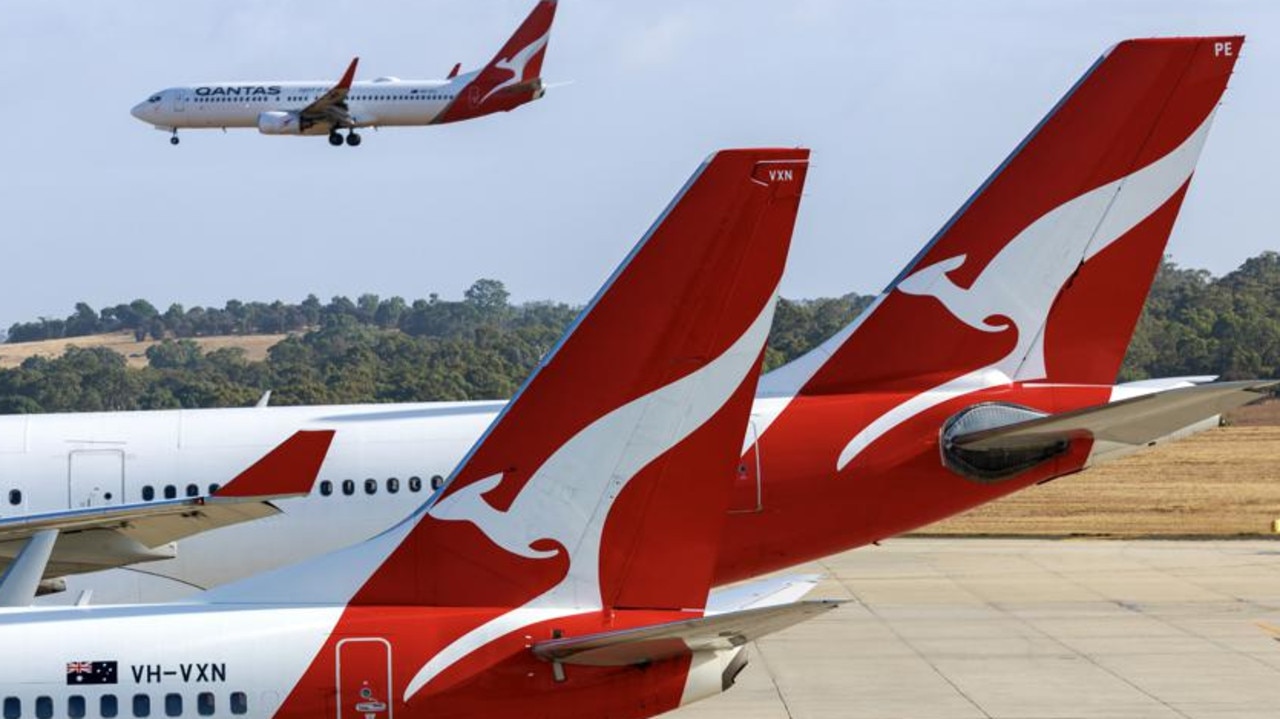
Qantas slashes fares to popular destination

‘Two seconds’: Girl attacked by dingo
Eight people have accused Norwegian Cruise Line (NCL) of abandoning them on a tiny island in Africa after a private tour ran late and the group missed the embarkation cut-off time.
Four of the group are elderly and another is pregnant , and though the ship was still at anchor, they were denied boarding.
The ship, the Norwegian Dawn, set sail without them – and it was right to do so.
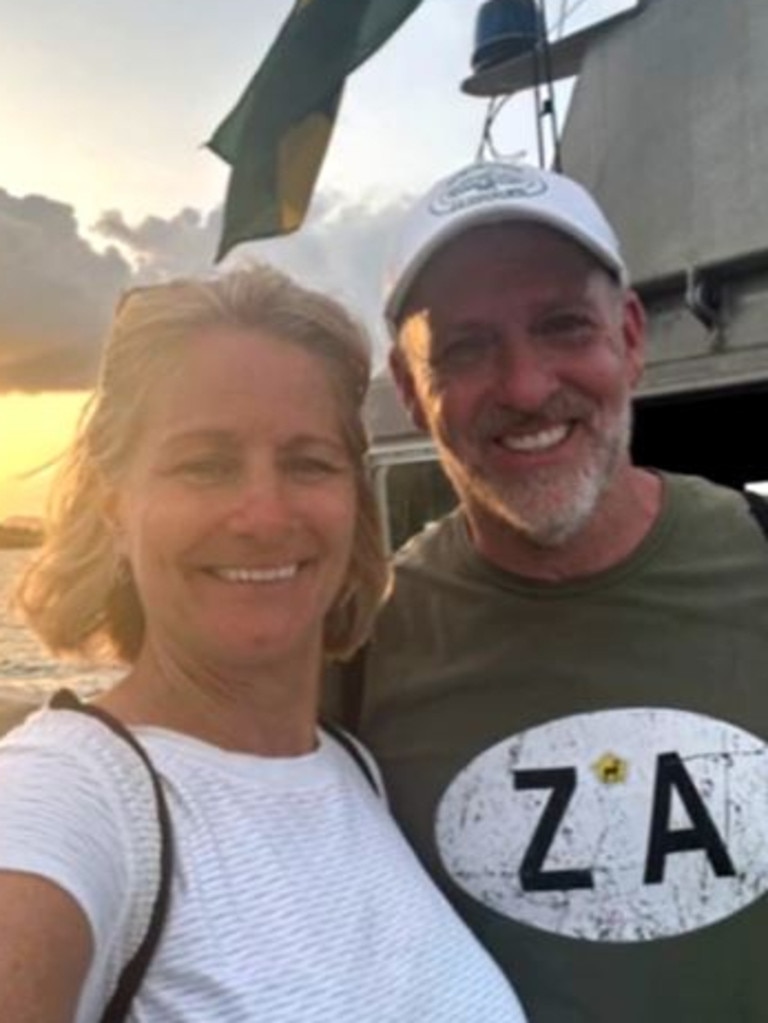
Once, I was late to check in for a flight. I jumped out of the taxi, sprinted to the counter (which is no mean feat when you’re hauling luggage) and arrived at the desk sweating bullets, prepared to get on my knees and grovel if it meant I’d be allowed through. I began to tell my sob story to the lady at the desk, heart hammering and lungs gasping for air, when she politely interrupted and shook her head.
In the nicest way possible, she said this: “Stiff bickies.” (OK yes, I’ve paraphrased.)
Sure, the plane was still at the airport, no more than a few hundred metres from where I was standing. However, the luggage had already been loaded, the manifest had already been finalised, and the other passengers were already boarding. There was no way they were going to let me board, nor should they have.

You see, I had been on a whale-watching tour about two-and-a-half hours south of the airport – hey, it was my last day, I wanted to make it count. I planned it to perfection, except for one detail: we spotted a playful pod right at the very end, so the captain offered to give us some bonus time to enjoy the view.
With one eye on the magnificent mammals, and another on my watch, I held on to a flicker of hope that I might make it. I jumped on the bus back to town, flagged down a cab, and asked the driver to hurry. I launched out of the car like a 100m sprinter launches out of starting blocks and ran into the terminal.
Alas, my proverbial ship had sailed.
Was it a bummer? Absolutely. But imagine delaying the other 158-or-so passengers scheduled to depart on the Boeing 737, asking the crew to extend their shifts, or holding the plane and disrupting airport traffic … all so little old me could drop off my bags, scurry through security, and find my gate.
Imagine the awkwardness if I stepped onto that plane. What do you say? “Sorry guys, my bad, lol.”
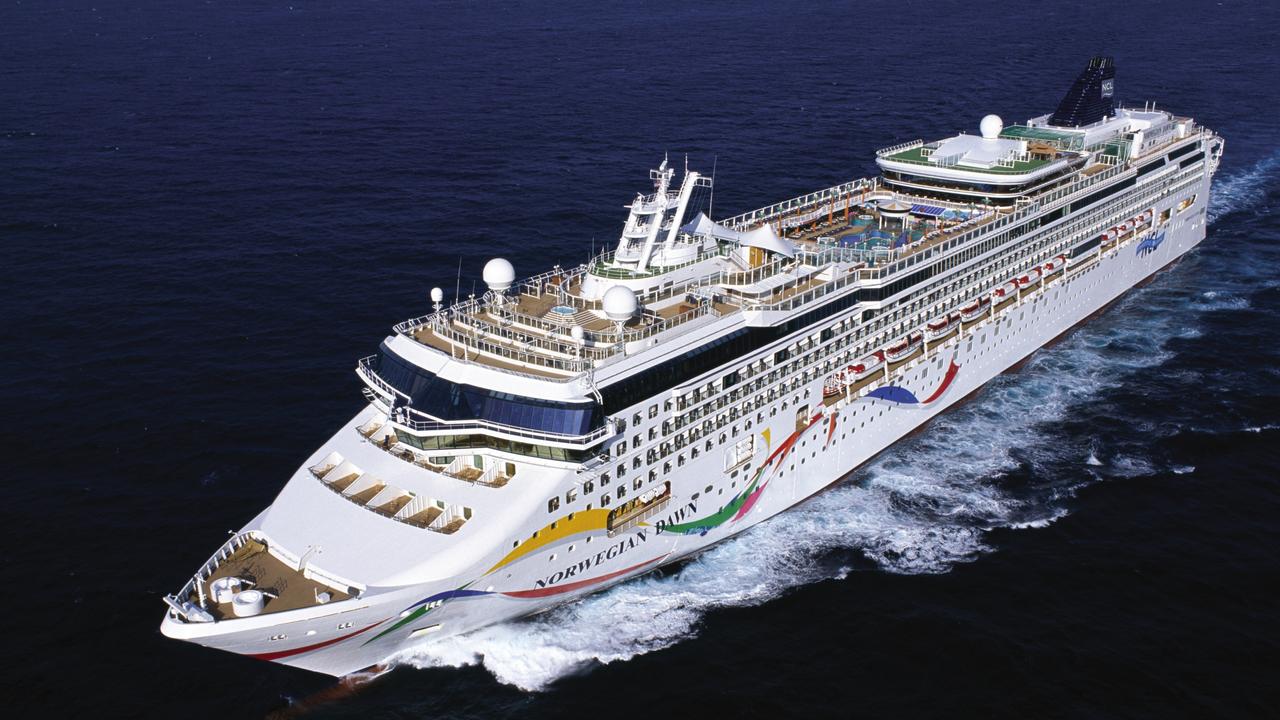
That doesn’t even scratch the surface of a cruise ship’s operations. Norwegian Dawn can accommodate 3372 people – 2340 passengers and 1032 crew – and this group of eight expected it to wait?
A ship’s departure time isn’t exactly a mystery.
I sailed on Norwegian Dawn in February and the departure time was published in NCL’s Freestyle Daily newsletter the night before and announced over the loudspeaker multiple times in the morning. It was also posted on signs at the doors where guests disembark.
The golden rule is clear: Make sure you’re back on time, or the ship may sail without you.
So what do you do if you’re left behind? Generally there are two options: either catch up with the ship at a later port or head home. If you’re lucky, you’ll have brought your essentials with you – your passport, phone, credit card, and medication – because all of your belongings will stay on board until the end.
Please don’t get me wrong, of course I’m sympathetic to the distress of those who were left in a foreign country without the safety of the ship. It would be scary and stressful to figure out next steps, especially for the members of the group with higher needs, and disappointing to miss out on their holidays.
However, the unfortunate reality is that ships can’t always wait.

Private tours are a whole separate issue, because while the ship will wait for official tours – those which have been organised by the cruise ship operator – to return, all bets are off for passengers taking their shore excursions into their own hands. Unofficial tours can be slightly cheaper than those on the ship’s itinerary, with slightly more availability, so they can be attractive. However, while operators will do their best to stick to scheduled times, all bets are off once you board that bus and leave the port.
Think of it like booking multiple legs of a trip with different airlines. They’re not in the same network, they don’t owe each other anything, and they can’t guarantee that you’ll make your connection. Say the bus breaks down. Maybe someone wanders off and takes ages to find. Perhaps the group lingers over a delicious lunch. Someone might need to stop at an ATM or a loo. You could get stuck in traffic. Or maybe your tour will be like mine and you’ll see something incredible that simply makes you want to pause.

More Coverage

And so, eight passengers were left in São Tomé and Príncipe, Africa’s second-smallest country.
“While this is a very unfortunate situation, guests are responsible for ensuring they return to the ship at the published time,” NCL said in a statement, adding that it is communicating with the guests about their next steps. It’s harsh but fair, especially since the other 3364 (or so) people on board got it right.
Kirrily Schwarz recently sailed on Norwegian Dawn as a guest of Norwegian Cruise Line.
An American social media star promises he is a Milo pro now after being absolutely roasted by Aussies for making this hilarious mistake.
A major airline has slashed airfares to a holiday destination that more than a million Australian holiday makers flock to every year.
Visitors to a popular holiday spot are being warned to stay alert for dingoes after a young girl was attacked while her parents turned away for “two seconds”.

Transportation | Baltimore Carnival cruise ship to operate out…
Share this:.
- Click to share on Facebook (Opens in new window)
- Click to share on X (Opens in new window)
e-Pilot Evening Edition
- Latest Headlines
- Environment
Transportation
Transportation | baltimore carnival cruise ship to operate out of norfolk following bridge collapse.

The Baltimore-based cruise ship Carnival Legend will operate temporarily out of Norfolk in the wake of the Francis Scott Key Bridge’s collapse early Tuesday morning, Carnival Cruise Line announced.
The Legend’s current voyage is scheduled to end on March 31 and will dock in Norfolk. Following the cruise’s return, passengers will be given free bus rides back to Baltimore, Carnival said in a news release. The ship can carry as many as 2,124 guests, according to Carnival’s website.
Carnival said they have informed their current and future guests about the change to the Legend’s port. On Tuesday evening, the Carnival website was not allowing tickets to be purchased for voyages out of Baltimore.
The bridge was struck by a 948-foot Singapore-flagged ship called the Dali, which lost power just before the collision, the Baltimore Sun reported. The Dali was traveling at about eight knots at the time.
As of Tuesday evening, six construction workers repairing potholes on the bridge were presumed dead, Jeffrey Pritzker, executive vice president of Brawner Builders, told the Baltimore Sun.
The collapsed bridge, spanning the Patapsco River, has severely impacted the flow of ship traffic to the Port of Baltimore. Vessel traffic into and out of the port was suspended, Maryland Transportation Secretary Paul J. Wiedefeld said, and a Coast Guard report stated that the “Patapsco River channel is fully blocked.” The Port of Virginia will receive some of the diverted traffic, The Pilot reported .
“Our thoughts remain with the impacted families and first responders in Baltimore,” said Christine Duffy, president of Carnival Cruise Line, adding that she’s grateful the President Joe Biden has pledged to reopen the Baltimore Harbor as soon as possible. “As those plans are finalized, we will update our future cruise guests on when we will return home to Baltimore, but in the meantime, we appreciate the quick response and support from officials in Norfolk.”
Gavin Stone, 757-712-4806, [email protected]
More in Transportation

Virginia News | Trump Airport? GOP representatives seek to rename Dulles airport

SUBSCRIBER ONLY
Transportation | outer banks bridge known for purple martin migration to close for 6 months starting in may.
![Major freight railroads will have to maintain two-person crews on most routes under a new federal rule that was finalized Tuesday. The Transportation Department’s Federal Railroad Administration released the details of the rule Tuesday morning, after working on it for the past two years. There has been intense focus […] Major freight railroads will have to maintain two-person crews on most routes under a new federal rule that was finalized Tuesday. The Transportation Department’s Federal Railroad Administration released the details of the rule Tuesday morning, after working on it for the past two years. There has been intense focus […]](https://www.pilotonline.com/wp-content/uploads/2024/04/Two_Person_Train_Crews_42606.jpg?w=525)
Transportation | Freight railroads must keep 2-person crews, according to new federal rule

Transportation | Newport News plans to reconfigure a Warwick Boulevard intersection to reduce crash rate
Trending nationally.
- What you need to know about next week’s total solar eclipse
- What lies below: Pipeline beneath Key Bridge wreckage complicates an already complex cleanup
- Do they still make pinball machines? They do, in a huge new factory near O’Hare — with most selling to the 1 percent
- 2024’s ‘extremely active’ hurricane season could bring 23 named storms, experts say
- 99 Cents Only to close all 371 of its stores
Baltimore bridge collapse: What happened and what is the death toll?
What is the death toll in the bridge collapse, when did the baltimore bridge collapse, what factors played a role in the bridge collapse, how much will the baltimore bridge cost to replace.

HOW LONG WILL IT TAKE TO REBUILD THE BALTIMORE BRIDGE?
When will the baltimore port reopen, what to know about the cargo ship dali and its stranded crew, what do we know about the bridge that collapsed.

HOW WILL THE BRIDGE COLLAPSE IMPACT THE BALTIMORE PORT?

Get weekly news and analysis on the U.S. elections and how it matters to the world with the newsletter On the Campaign Trail. Sign up here.
Writing by Lisa Shumaker; Editing by Steve Gorman, Daniel Wallis and Bill Berkrot
Our Standards: The Thomson Reuters Trust Principles. , opens new tab

Thomson Reuters
Lisa's journalism career spans two decades, and she currently serves as the Americas Day Editor for the Global News Desk. She played a pivotal role in tracking the COVID pandemic and leading initiatives in speed, headline writing and multimedia. She has worked closely with the finance and company news teams on major stories, such as the departures of Twitter CEO Jack Dorsey and Amazon’s Jeff Bezos and significant developments at Apple, Alphabet, Facebook and Tesla. Her dedication and hard work have been recognized with the 2010 Desk Editor of the Year award and a Journalist of the Year nomination in 2020. Lisa is passionate about visual and long-form storytelling. She holds a degree in both psychology and journalism from Penn State University.

Pelosi joins call for Biden to stop transfer of US weapons to Israel
Representative Nancy Pelosi, former House speaker and a key ally of Joe Biden, signed a letter on Friday from dozens of congressional Democrats to the president and Secretary of State Antony Blinken, urging a halt to weapons transfers to Israel.

Tajikistan's foreign ministry on Saturday rejected a claim by a top Russian security official that Ukraine's embassy in the Tajik capital was recruiting mercenaries to fight against Russia.

Advertisement
‘A Lot of Chaos’: Bridge Collapse Creates Upheaval at Largest U.S. Port for Car Trade
A bridge collapse closed Baltimore’s port, an important trade hub that ranks first in the nation by the volume of automobiles and light trucks it handles.
- Share full article
Shipping in the Port of Baltimore
Monthly cargo handled by the Port of Baltimore

By Peter Eavis and Jenny Gross
- March 26, 2024
The Baltimore bridge disaster on Tuesday upended operations at one of the nation’s busiest ports, with disruptions likely to be felt for weeks by companies shipping goods in and out of the country — and possibly by consumers as well.
The upheaval will be especially notable for auto makers and coal producers for whom Baltimore has become one of the most vital shipping destinations in the United States.
As officials began to investigate why a nearly 1,000-foot cargo ship ran into the Francis Scott Key Bridge in the middle of the night, companies that transport goods to suppliers and stores scrambled to get trucks to the other East Coast ports receiving goods diverted from Baltimore. Ships sat idle elsewhere, unsure where and when to dock.
“It’s going to cause a lot of chaos,” said Paul Brashier, vice president for drayage and intermodal at ITS Logistics.
The closure of the Port of Baltimore is the latest hit to global supply chains, which have been strained by monthslong crises at the Panama Canal, which has had to slash traffic because of low water levels; and the Suez Canal, which shipping companies are avoiding because of attacks by the Houthis on vessels in the Red Sea.
The auto industry now faces new supply headaches.
Last year, 570,000 vehicles were imported through Baltimore, according to Sina Golara, an assistant professor of supply chain management at Georgia State University. “That’s a huge amount,” he said, equivalent to nearly a quarter of the current inventory of new cars in the United States.
The Baltimore port handled a record amount of foreign cargo last year, and it was the 17th biggest port in the nation overall in 2021, ranked by total tons, according to Bureau of Transportation Statistics.
Baltimore Ranks in the Top 20 U.S. Ports
Total trade in 2021 in millions of tons
Baltimore ranks first in the United States for the volume of automobiles and light trucks it handles, and for vessels that carry wheeled cargo, including farm and construction machinery, according to a statement by Gov. Wes Moore of Maryland last month.
The incident is another stark reminder of the vulnerability of the supply chains that transport consumer products and commodities around the world.
The extent of the disruption depends on how long it takes to reopen shipping channels into the port of Baltimore. Experts estimate it could take several weeks.
Baltimore is not a leading port for container ships, and other ports can likely absorb traffic that was headed to Baltimore, industry officials said.
Stephen Edwards, the chief executive of the Port of Virginia, said it was expecting a vessel on Tuesday that was previously bound for Baltimore, and that others would soon follow. “Between New York and Virginia, we have sufficient capacity to handle all this cargo,” Mr. Edwards said, referring to container ships.
“Shipping companies are very agile,” said Jean-Paul Rodrigue, a professor in the department of maritime business administration at Texas A&M University-Galveston. “In two to three days, it will be rerouted.”
But other types of cargo could remain snarled.
Alexis Ellender, a global analyst at Kpler, a commodities analytics firm, said he expected the port closure to cause significant disruption of U.S. exports of coal. Last year, about 23 million metric tons of coal exports were shipped from the port of Baltimore, about a quarter of all seaborne U.S. coal shipments. About 12 vessel had been expected to leave the port of Baltimore in the next week or so carrying coal, according to Kpler.
He noted that it would not make a huge dent on the global market, but he added that “the impact is significant for the U.S. in terms of loss of export capacity.”
“You may see coal cargoes coming from the mines being rerouted to other ports instead,” he said, with a port in Norfolk, Va., the most likely.
If auto imports are reduced by Baltimore’s closure, inventories could run low, particularly for models that are in high demand.
“We are initiating discussions with our various transportation providers on contingency plans to ensure an uninterrupted flow of vehicles to our customers and will continue to carefully monitor this situation,” Stellantis, which owns Chrysler, Dodge, Jeep and Ram, said in a statement.
Other ports have the capacity to import cars, but there may not be enough car transporters at those ports to handle the new traffic.
“You have to make sure the capacity exists all the way in the supply chain — all the way to the dealership,” said Mr. Golara, the Georgia State professor.
A looming battle is insurance payouts, once legal liability is determined. The size of the payout from the insurer is likely to be significant and will depend on factors including the value of the bridge, the scale of loss of life compensation owed to families of people who died, the damage to the vessel and disruption to the port.
The ship’s insurer, Britannia P&I Club, part of a global group of insurers, said in a statement that it was “working closely with the ship manager and relevant authorities to establish the facts and to help ensure that this situation is dealt with quickly and professionally.”
The port has also increasingly catered to large container ships like the Dali, the 948-foot-long cargo vessel carrying goods for the shipping giant Maersk that hit a pillar of the bridge around 1:30 a.m. on Tuesday. The Dali had spent two days in Baltimore’s port before setting off toward the 1.6-mile Francis Scott Key Bridge.
State-owned terminals, managed by the Maryland Port Administration, and privately owned terminals in Baltimore transported a record 52.3 million tons of foreign cargo in 2023, worth $80 billion.
Materials transported in large volumes through the city’s port include coal, coffee and sugar. It was the ninth-busiest port in the nation last year for receiving foreign cargo, in terms of volume and value.
The bridge’s collapse will also disrupt cruises traveling in and out of Baltimore. Norwegian Cruise Line last year began a new fall and winter schedule calling at the Port of Baltimore.
An earlier version of this article misstated the Port of Baltimore’s rank among U.S. ports. It was the nation’s 17th biggest port by total tons in 2021, not the 20th largest.
How we handle corrections
Peter Eavis reports on business, financial markets, the economy and companies across different sectors. More about Peter Eavis
Jenny Gross is a reporter for The Times in London covering breaking news and other topics. More about Jenny Gross
Focus on bridge safety, ship size in New York waterways after Baltimore collapse

A container ship travels near the Bayonne Bridge in 2021. Since the Panama Canal expanded in 2016, ships have gotten larger. Credit: Xinhua News Agency via Getty Ima/Xinhua News Agency
Since the Francis Scott Key Bridge collapsed in Baltimore after a nearly 1,000-foot-long ship lost power and crashed into a pillar last month, engineering experts have raised questions about whether seaport operations and bridge safety measures have kept up with the increasing size of container ships.
Cargo ships heading to terminals at the Port of New York and New Jersey, the third busiest in the nation, travel across the Atlantic and under two main spans: the Verrazzano-Narrows and Bayonne bridges. Safeguards, including rock islands and “fender systems,” are intended to prevent vessels from striking bridges. In addition, the abutments that support the Bayonne Bridge are outside the navigational channel and container ships would run aground before coming in contact with them, according to the Port Authority.
Large ships are also guided by tugboats with local pilots at the helm, according to the agency.
But since the Panama Canal expanded in 2016 to facilitate commerce, predominantly from Asia and the west coast of South America, ships have gotten larger to maximize efficiency.
WHAT TO KNOW
- Since the Baltimore bridge collapse, some engineers are questioning whether local safety measures have kept pace with the increasing size of cargo ships.
- The Port Authority said there are several protective measures in place at the port and around bridges.
- There are also plans to deepen the waterways to accommodate larger vessels.
“We have to catch up … to what is actually happening out in the real world,” said Maria Lehman, a bridge engineer and past president of the American Society of Civil Engineers.
From breaking news to special features and documentaries, the NewsdayTV team is covering the issues that matter to you.
By clicking Sign up, you agree to our privacy policy .
While the state inspects each of its bridges at least every two years, Lehman emphasized taking a critical look at all the layers of port operations, including how ships navigate, how fast they cruise and what redundancy systems they have in place.
The 984-feet long Dali ship that struck the Baltimore bridge was escorted by tugboats as it left its berth, but not through the port’s channel and broader Chesapeake Bay. When it lost power, the pilot called an emergency, dropped its anchor and requested tugboat assistance, but it was too late, according to the Associated Press. The ship crashed into one of the bridge’s columns, causing the entire structure to collapse within seconds. Six people working on the bridge died.
Tugboats in New York
In New York, a ship the size of the Dali would be assisted by two local pilots and at least four tugboats, according to Port Authority officials. The authority also routinely trains for emergency scenarios.
“We hold our crossings to the highest safety standards with industry-leading protection systems in place,” Port Authority spokesperson Steve Burns said in an email. He added that only smaller vessels that are one-third the tonnage of the Dali and 400 feet shorter pass under the Outerbridge Crossing, Goethals or George Washington bridges.
While several engineers said it's questionable whether any bridge is built to withstand the impact of a larger cargo ship, there are several measures intended to stop ships from doing so in local waterways.
“It is difficult to design a bridge to take the impact load from such a large mass of a ship,” said Magued Iskander, professor and chair of New York University's Civil & Urban Engineering Department. Iskander said that modern bridges are designed to withstand events such as earthquakes and high winds.
Engineers said options for pier protection include having a raised sea floor and “fender systems,” which are protective structures constructed around piers. According to the Metropolitan Transportation Authority, the Verrazzano-Narrows Bridge, which sees big container ship traffic, has a rock island around the tower bases.
Bridges in the region also benefit from piers and towers built closer to shore or on land.
At the George Washington Bridge, for example, the New York tower is on land, and the New Jersey tower is outside of the navigational channel and has a fender system.
“The bar keeps getting set higher and higher for the size of these vessels,” said Dennis O’Heney, a technical specialist at McLaren Engineering Group, whose firm installed fender systems around the Whitestone Bridge during roughly the last year.
He said that in the past five to 10 years, bridges have gotten renewed attention.
“Some of the infrastructure has been aging and the focus has been put on increasing those protections and revamping what we've got,” O’Heney said.
Raising bridges, deepening channels
Other changes have been made to handle larger ships, such as raising the height of the roadway span of the Bayonne Bridge in 2019 for a clearance of 215 feet. That allows cargo ships with up to 18,000 shipping containers to travel to port terminals on Staten Island and in Elizabeth and Newark, New Jersey. The channels also were deepened to 50 feet in 2016 to allow for ships with larger drafts — or the depth of the hull. But the dredging was not designed for the larger ships, according to a 2022 Army Corps of Engineers report .
“These larger vessels have a greater risk of grounding, collision” or accident, the report states, and have restrictions within the harbor.
At one location through Newark Bay Channel, the limitations have caused “difficulties and near-misses,” the report states. The Army Corps of Engineers declined to comment.
Last year 52% of the container ships that called on the port were larger than the vessels the channels were designed for, Bethann Rooney, port director at the Port Authority, said during a board meeting in December at which the agency approved a cost-sharing agreement of $23 million with the U.S. Army Corp of Engineers to conduct preliminary work to deepen the harbor and do a further study.
25 smaller bridge strikes since 2020
While a crash of the magnitude in Baltimore is rare, it’s not unheard of for vessels to strike bridges, even in New York, where since 2020 the state Department of Transportation disclosed there have been 25 maritime bridge strikes.
Only six collisions involving vessels and bridges made headlines since that period, according to a review of news reports. One in 2008 was fatal, involving a recreational boat that slammed into a pillar of the Robert Moses Causeway bridge.
“Bridges are known colloquially as obstructions to navigation, because navigation has always been the paramount right since before bridges were built,” said maritime lawyer James Mercante, president of the Board of Commissioners of Pilots of the State of New York, which trains, regulates and licenses state pilots.
Mercante said the Baltimore tragedy is sure to be raised during the next Harbor Safety, Navigation and Operations Committee, which includes key maritime industry groups and regulatory agencies such as the Port Authority and the Coast Guard.
“Of course, they’re going to be studying this, lessons learned,” said Mercante.
Most Popular
Latest videos.

IMAGES
VIDEO
COMMENTS
When a ship is brought to anchor, the speed is reduced to the minimum necessary for steering. The engines are then put into reverse to generate sternway, and the anchor is dropped onto the bottom. The machine that's used to drop and recover the anchor is called a windless. This handy contraption is usually electrically powered on cruise ships ...
Cruise ship anchors can be up 15ft to 20ft in height and 10ft to 15ft wide. Anchors are generally proportional to the size of the cruise ship. The larger and heavier the cruise ship, the larger the anchor can be expected to be. The largest oasis-class Royal Caribbean cruise ships are some of the largest in-service ships sailing today and can be ...
Cruise ship anchors range between 10-20 feet long and average 8-15 feet wide. An anchor's size is directly proportional to the size of the vessel. Larger and heavier ships require larger and heavier anchors. The Titanic had an 18 foot 6 inches long main anchor, and it was the largest anchor made at the time.
The majority of contemporary cruise ships feature two anchors: one on the starboard side and one on the port side. On rare occasions, when there is a strong current or heavy seas, cruise ships will employ both anchors. However, the cruise ship often only utilizes one anchor, saving the other for emergency usage.
The most prominent component of a cruise ship anchor chain is the series of interconnected links that make up the bulk of the chain. These links are massive in scale, and they need to be ...
How do Cruise Ship Anchors Work? Cruise ship anchors dig into the seabed and provide a contact point for the ship. When it comes to large ships, it isn't just the anchor that holds the ship in place. The anchor is on the end of a long and heavy chain and the weight of this chain on the seabed helps to hold the ship in place.
Follow us on other social handles :Instagram :https://www.instagram.com/seaandcoast1Facebook :https://www.facebook.com/seaandcoast1Twitter :https://twitter.c...
To recap, cruise ship anchors weigh anywhere from 10 to 20 tons, depending on the size of the vessel. The chain that the anchor is attached to does a lot of work to keep the ship stable when it ...
An anchor is an important component of a cruise ship's design. It is used to hold the ship in place while it waits for passengers to disembark or embark, or when the ship is docked at a port. The size of an anchor on a cruise ship can vary depending on the size of the vessel. Cruise ships come in various sizes, and the number of anchors a ...
Anchors play a vital role in keeping the ship secure and stable while at sea, as well as providing it with a safe mooring when it reaches its destination. In order to understand how an anchor works on a cruise ship, it is important to understand how anchors work in general.
Drawing by Tosaka. The primary force holding an anchored ship in place is the weight of the chain on the bottom of the sea. The wind will push the boat away from the anchor and keep the chain in place. Most anchors have flukes designed to dig into the ground. If the anchor is in the correct position, it will dig in deeper when wind or waves put ...
As mentioned, the anchor weight, chain length, and size of a cruise ship's chain can vary depending on the weight and dimensions of the cruise ship itself. That said, the general range for a single link of the anchor's chain tends to be between 11 lbs (5 kg) to about 290 lbs (130 kg).
Join our Exclusive Community over on Patreon: https://www.patreon.com/CasualNavigationIn this video, we take a look at how an anchor is used to keep a massiv...
While it's easy to think of an anchor as deriving its staying power from going down, the process of anchoring is more about horizontal force. As the current or wind pulls a ship this way and that ...
Ships can also have a mini-wheel, which a smaller version of the wheel and works in the same way as the regular wheel. Turn the wheel to port and the ship will go to the left, turn the wheel to starboard and the ship will go to the right. The third method of driving a cruise ship is Electronic Chart Display and Information System (ECDIS).
These massive chains need to withstand the incredible forces exerted on the cruise ship's anchor when the cruise ship is in the harbor. To withstand the immense pressure generated by holding a heavy cruise ship in place against tides, waves, and ocean currents, the anchor chain and cables need to be immensely strong, and incredibly flexible.
Engineers: Cruise ship engines are located near the bottom of the ship as they are heavy, and they are usually towards the aft of the ship. Cruise ships use Diesel-Electric propulsion systems. The main engines are generators which produce electricity which then powers the azipods. VV ships have 4 engines and 2 azipods.
#Anchor #shipanchor #windlassAnchoring is one of the very frequent operations onboard ships. A number of variables and external factors influence the duratio...
If so, then you are likely already a member of the cruise line's Crown & Anchor Society. While it sounds like some secret club at a private college, Crown & Anchor is Royal Caribbean's loyalty rewards program. ... The more points you earn, the higher your status on the ship, which leads to more benefits and rewards. Put simply, if you like to ...
Stockless ship's anchor and chain on display Anchor of Amoco Cadiz in Portsall, north-west Brittany, France Memorial anchor in Kirjurinluoto, Pori, Finland Massive anchor chain for large ships. The weight of the chain is vital for proper holding of the anchor. An anchor is a device, normally made of metal, used to secure a vessel to the bed of a body of water to prevent the craft from drifting ...
Types of Anchors. By itself, the anchor is actually the simplest part of a ship's ground tackle:[3] "the anchors, chains, cables, and other equipment used to secure a ship at anchor."Today, the most commonly used maritime anchor is the "stockless," "U.S. Navy," or "Admiralty" anchor, all of which look essentially similar.
Privately-owned boats from the port. Tenders owned by the cruise line kept at the port. Maximum occupancy on most tender boats is generally between 100 and 150 passengers. So on a cruise ship that holds thousands of guests, tender operations can take quite some time, even if they use several boats!
You can carry your own bags off the ship at the end of your voyage, work your way up to elite status in your cruise line's loyalty program, pay for an add-on package (such as Carnival's Faster ...
As mentioned, the anchor weight, chain length, and size of a cruise ship's chain can vary depending on the weight and dimensions of the cruise ship itself. That said, the general range for a single link of the anchor's chain tends to be between 11 lbs (5 kg) to about 290 lbs (130 kg).
In a collapsed world, a Royal Caribbean-like cruise liner sails from port to port, collecting new shipmates and supplies in exchange for the precious energy it has on board. (The actual Icon ...
Four of the group are elderly and another is pregnant, and though the ship was still at anchor, they were denied boarding. The ship, the Norwegian Dawn, set sail without them - and it was right ...
The Baltimore-based cruise ship Carnival Legend will operate temporarily out of Norfolk in the wake of the Francis Scott Key Bridge's collapse early Tuesday morning, Carnival Cruise Line announced.
April 5 (Reuters) - Work is underway to begin clearing the wreckage of Baltimore's Francis Scott Key Bridge more than a week after a faltering cargo ship crashed into it, sending the span ...
'A Lot of Chaos': Bridge Collapse Creates Upheaval at Largest U.S. Port for Car Trade. A bridge collapse closed Baltimore's port, an important trade hub that ranks first in the nation by the ...
Last year 52% of the container ships that called on the port were larger than the vessels the channels were designed for, Bethann Rooney, port director at the Port Authority, said during a board ...